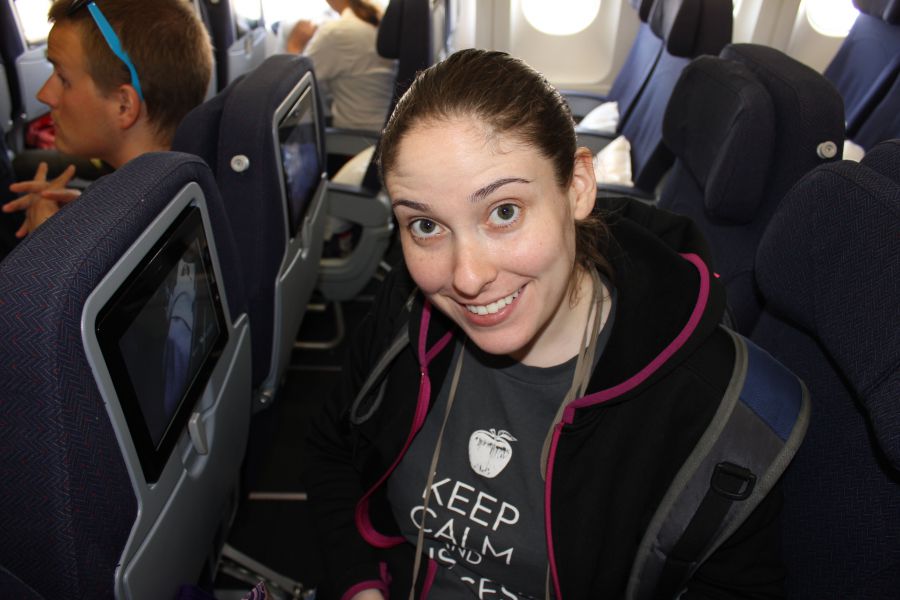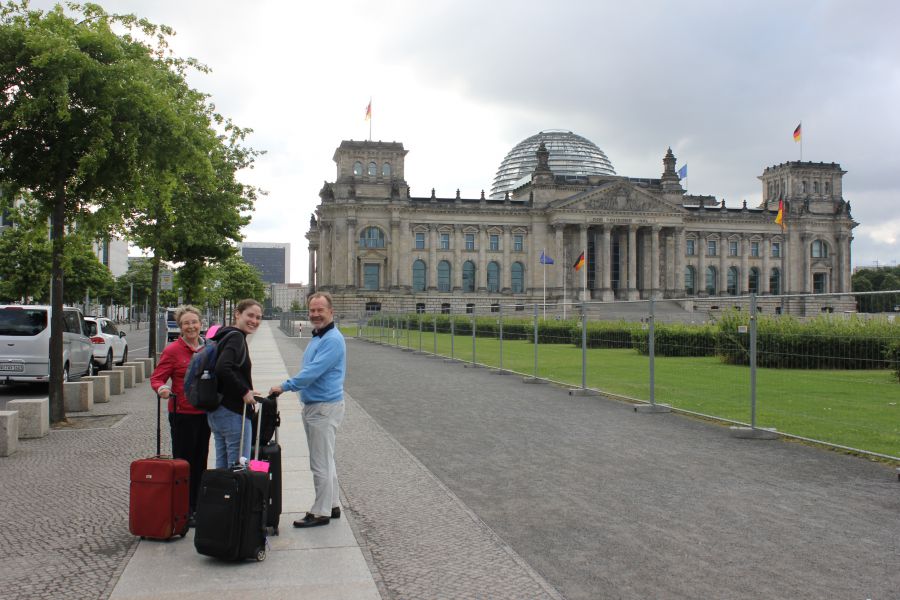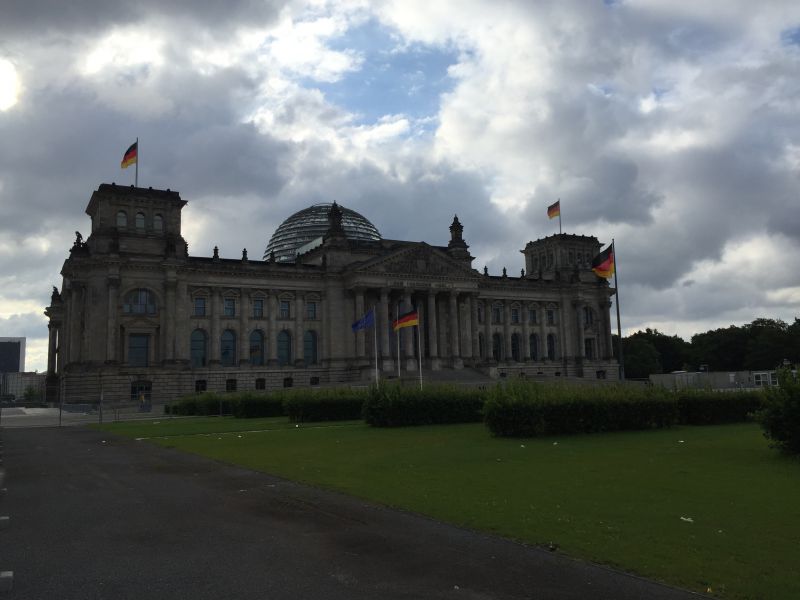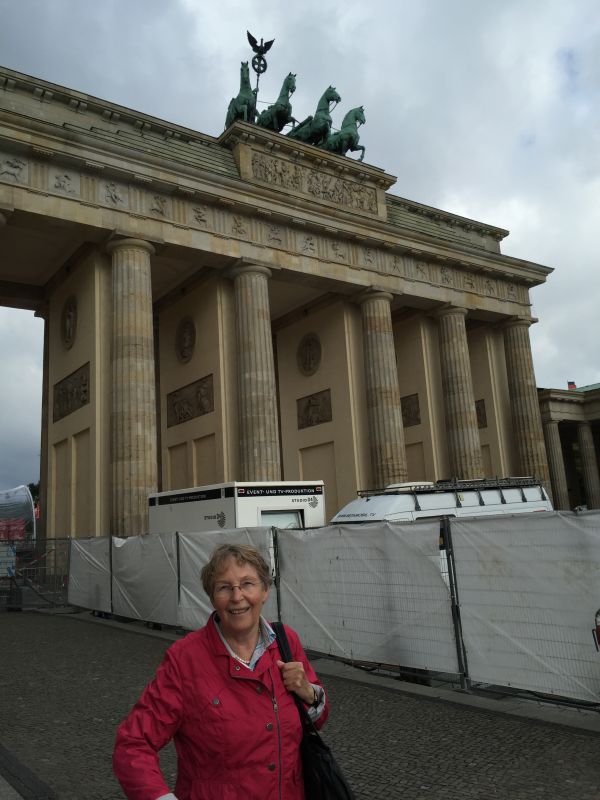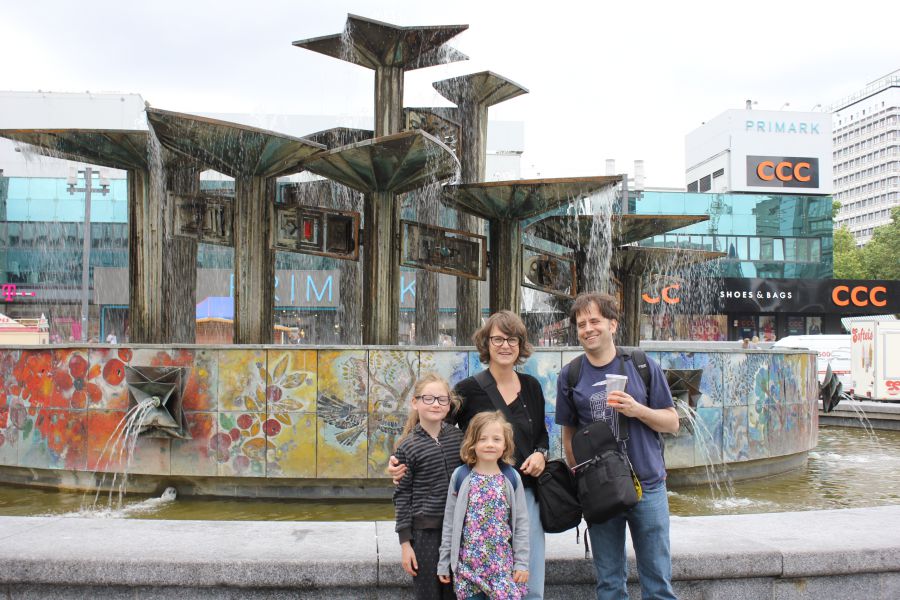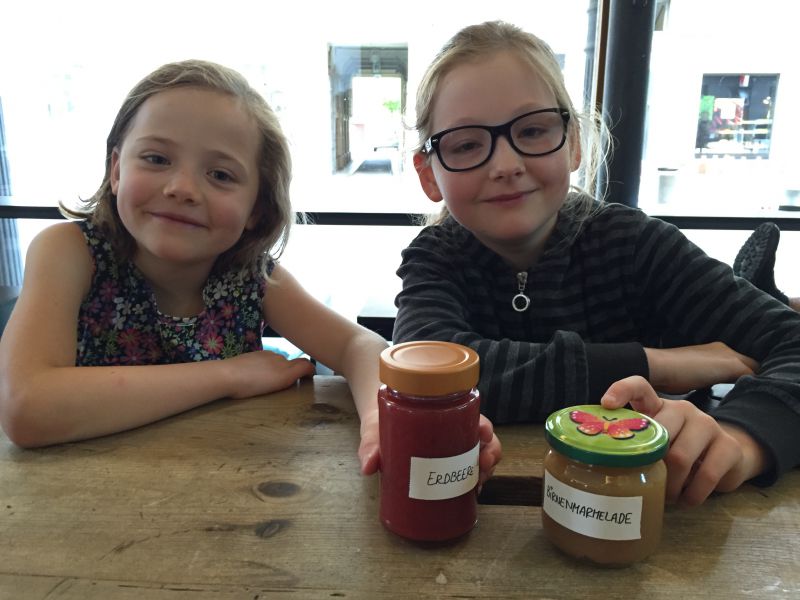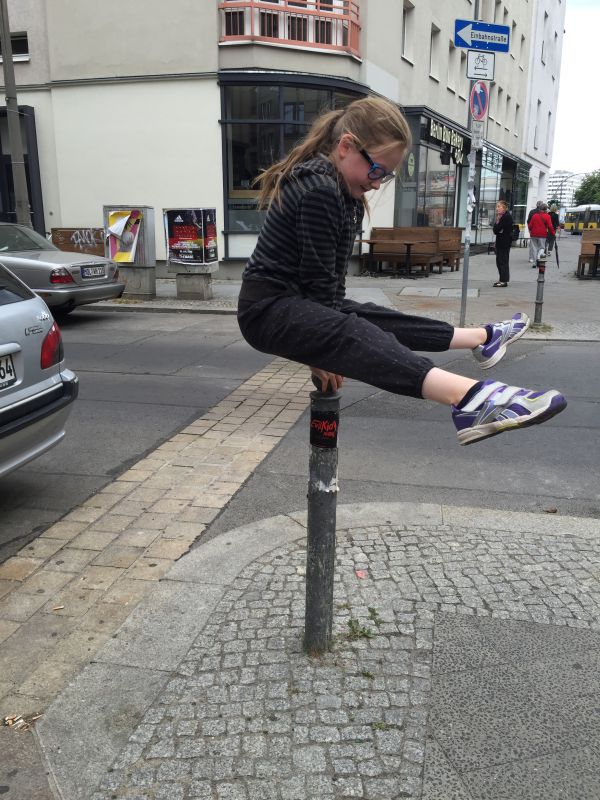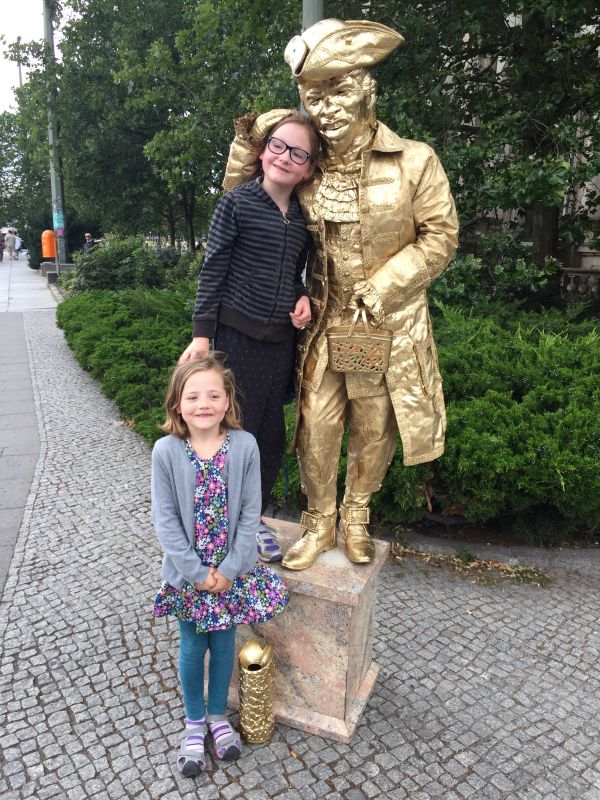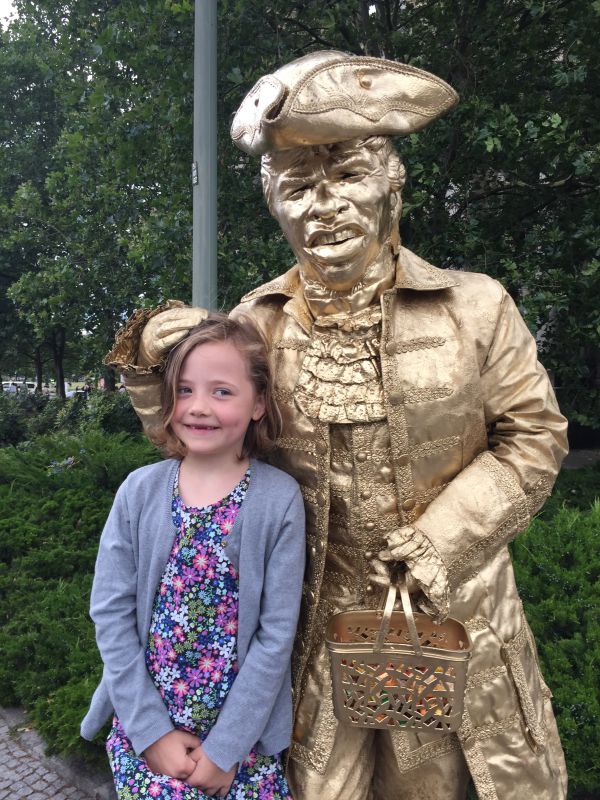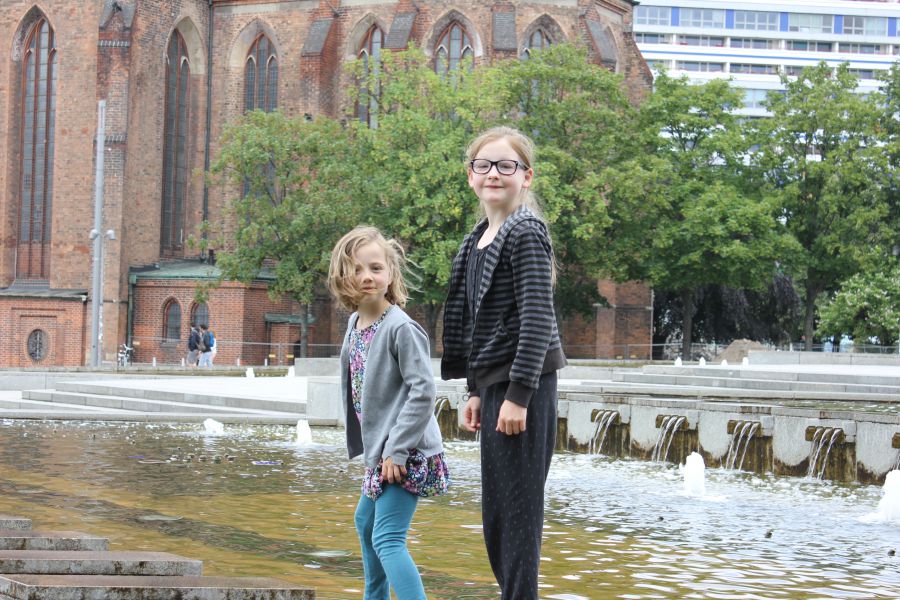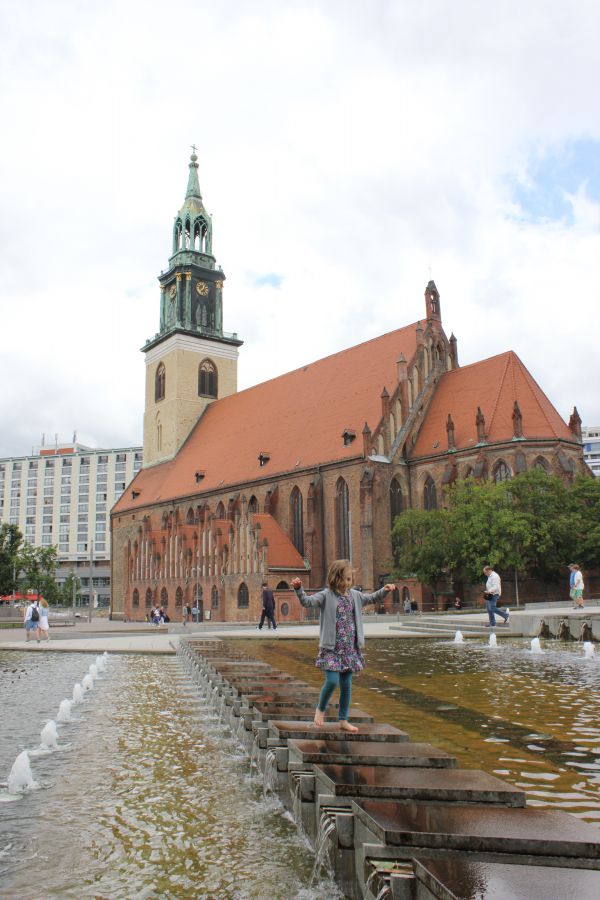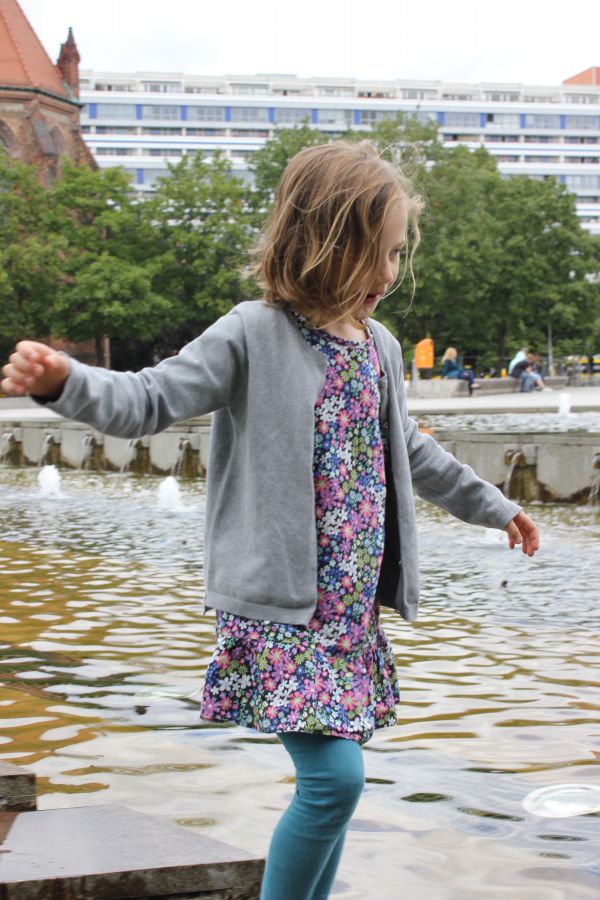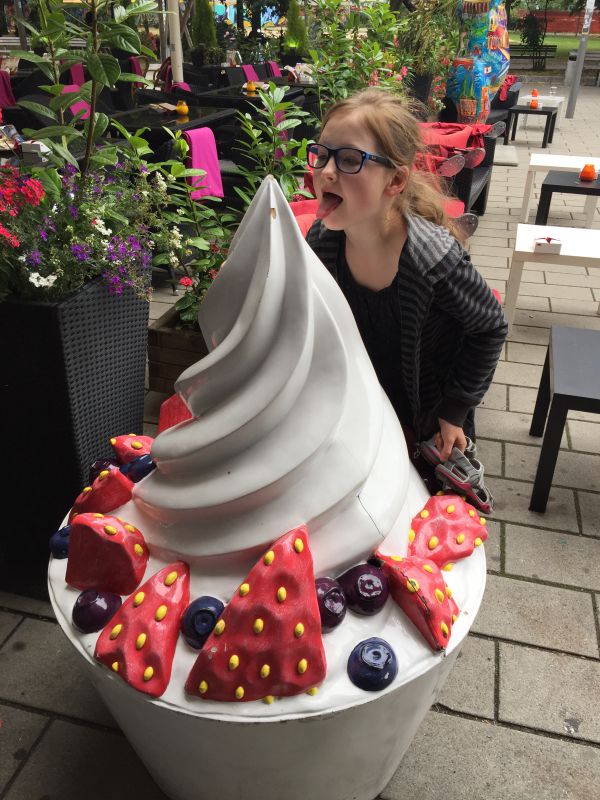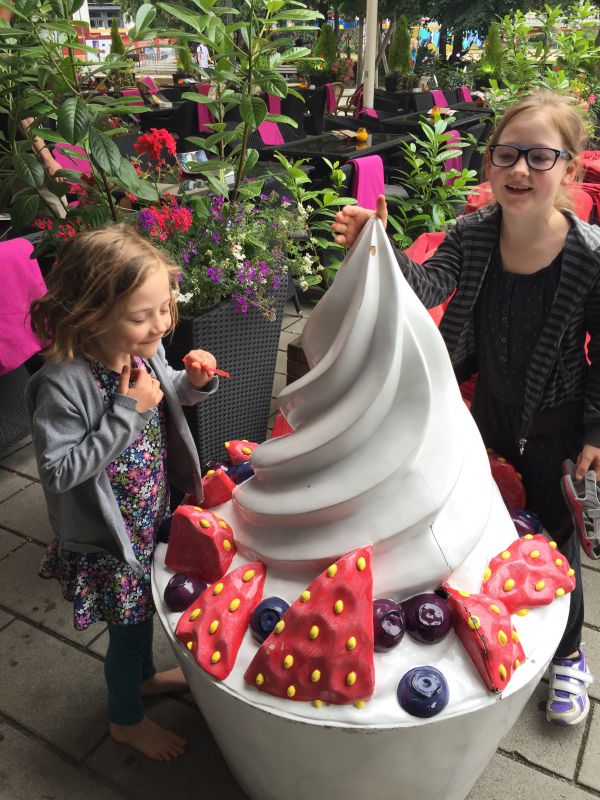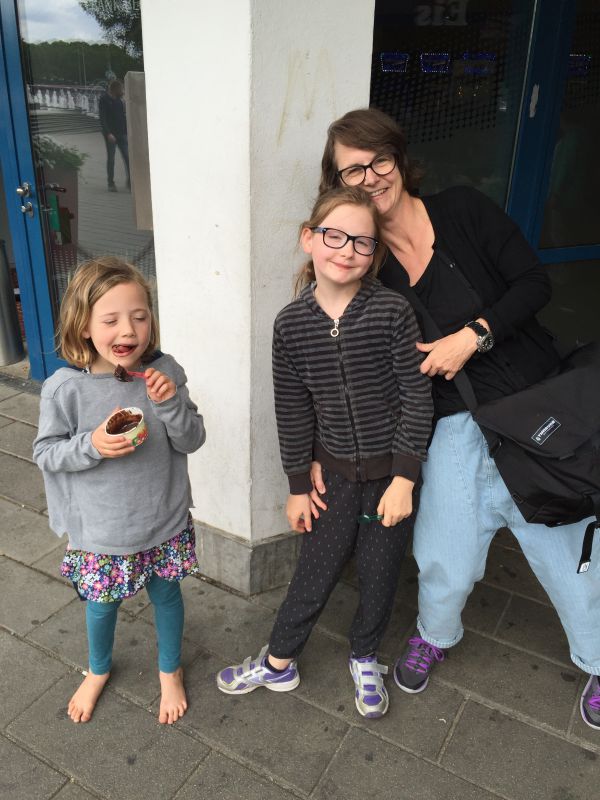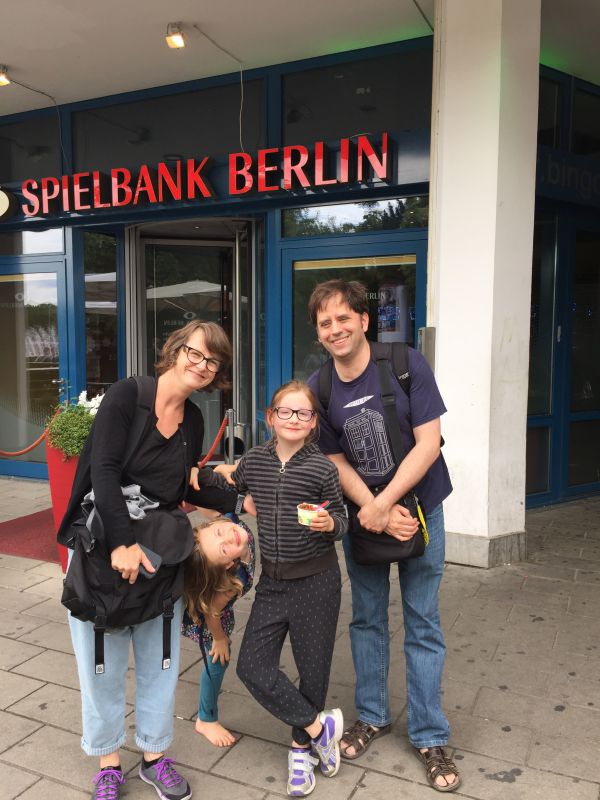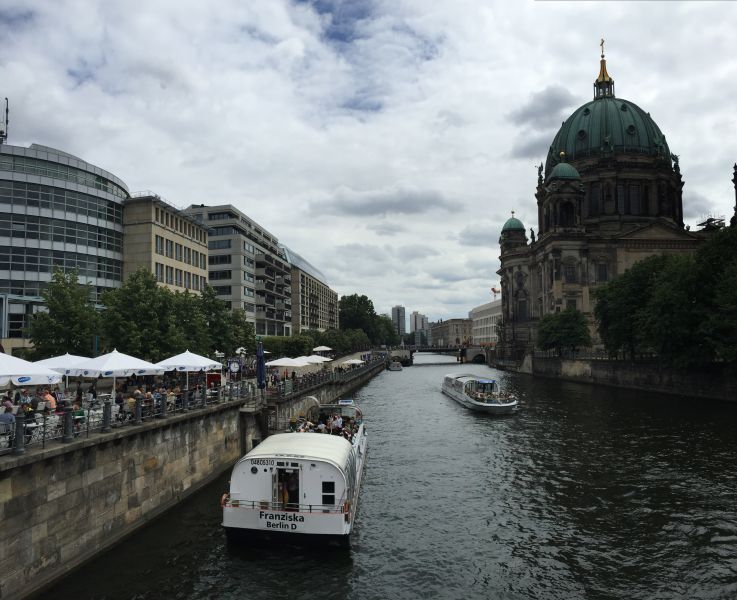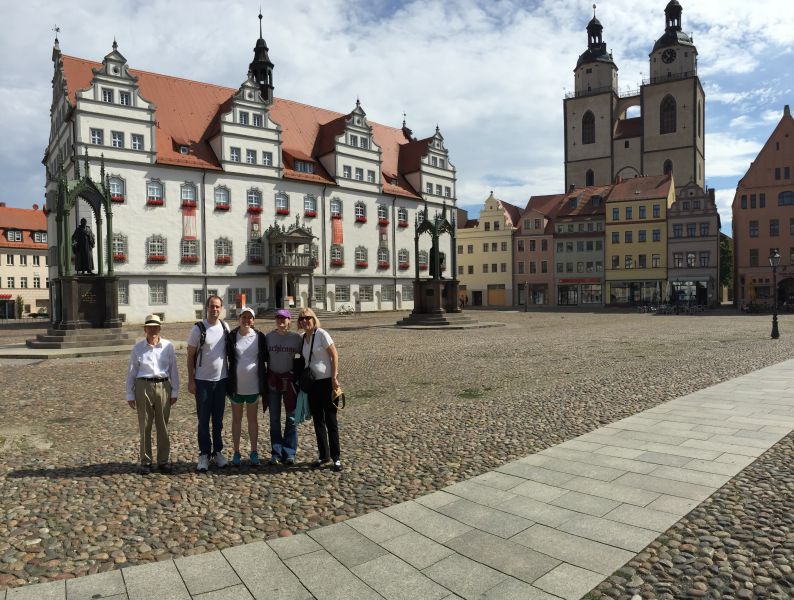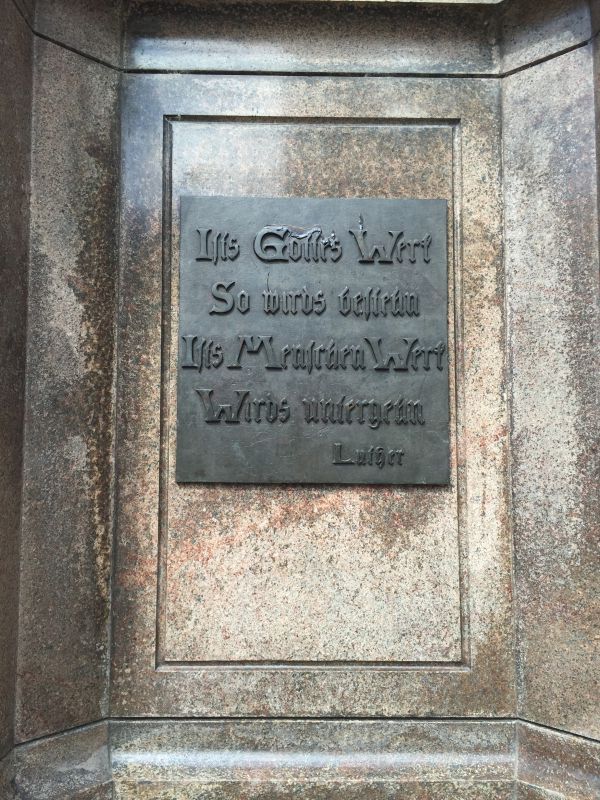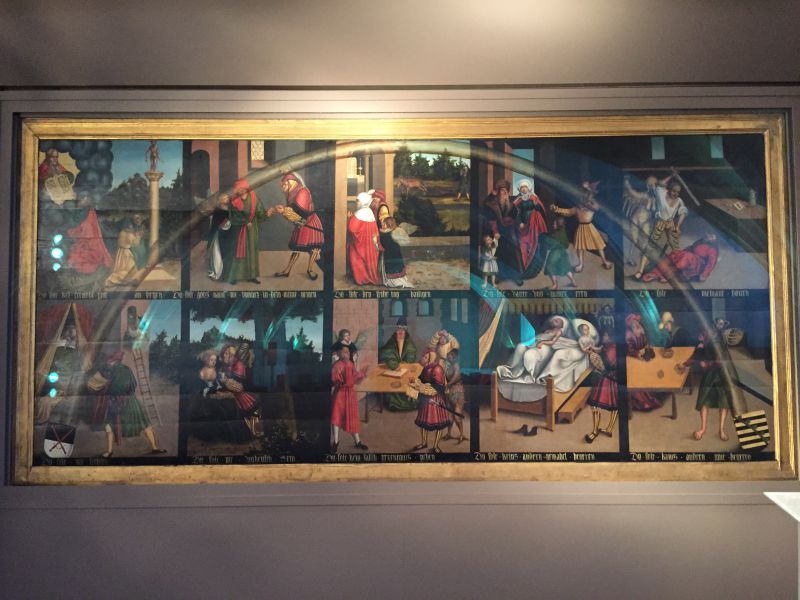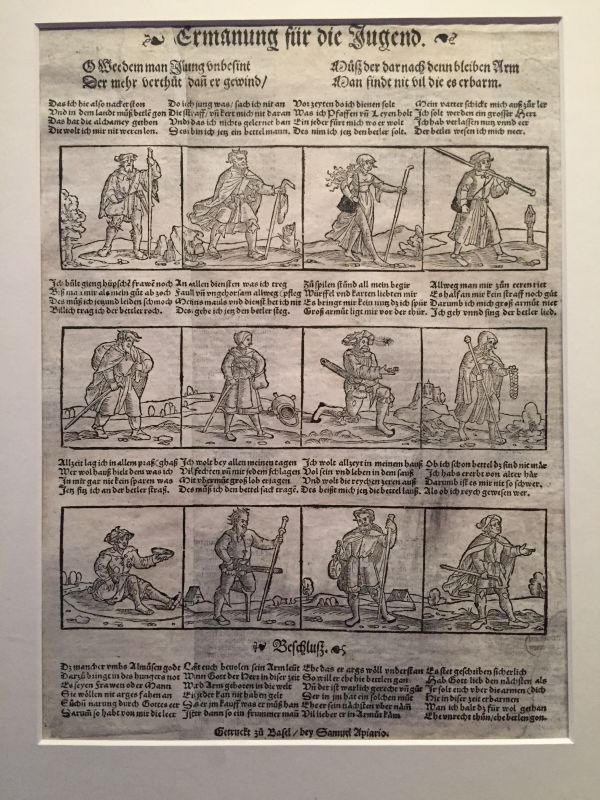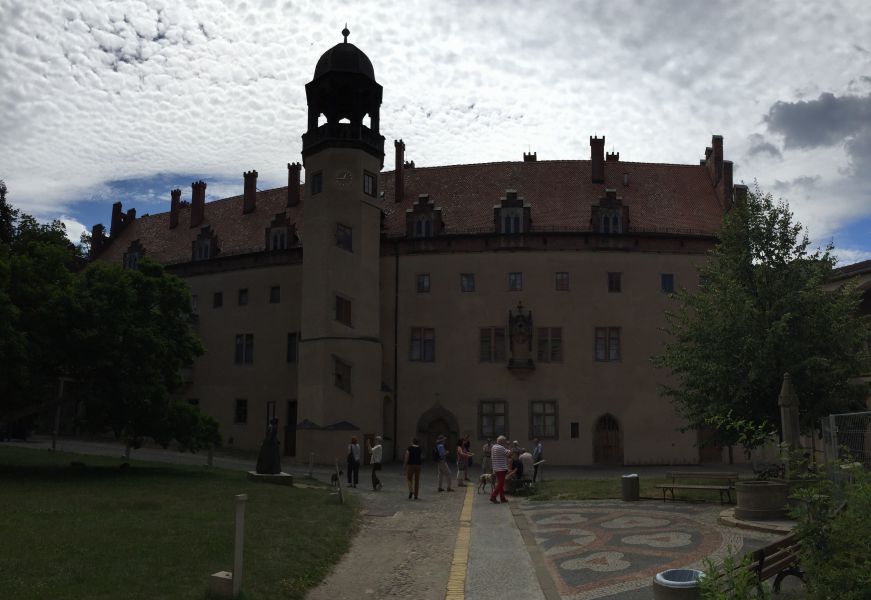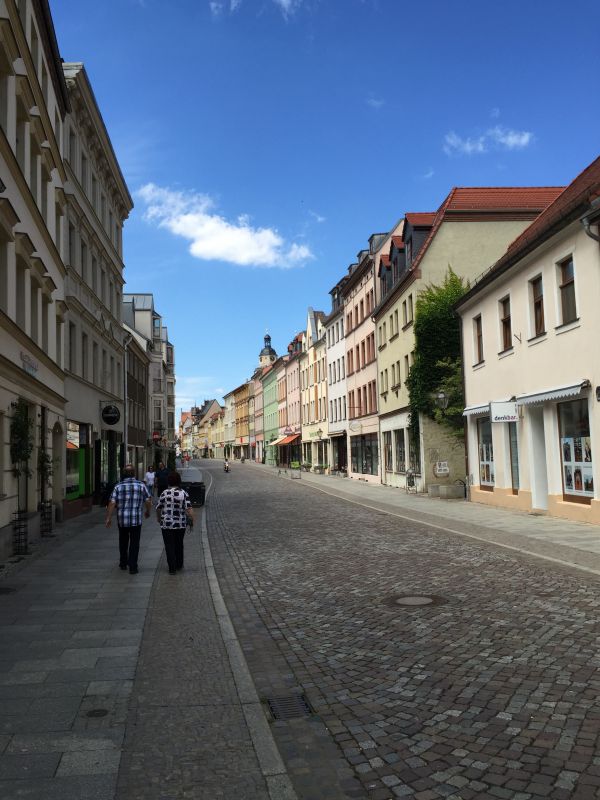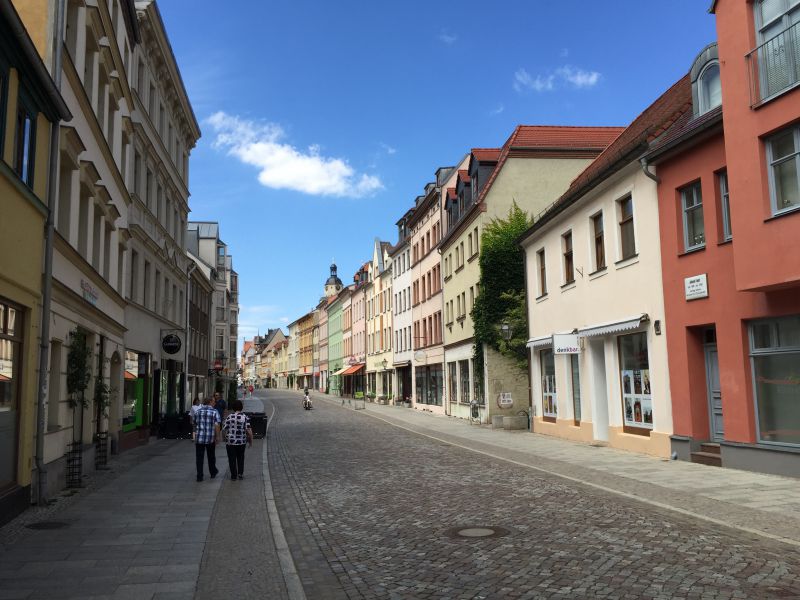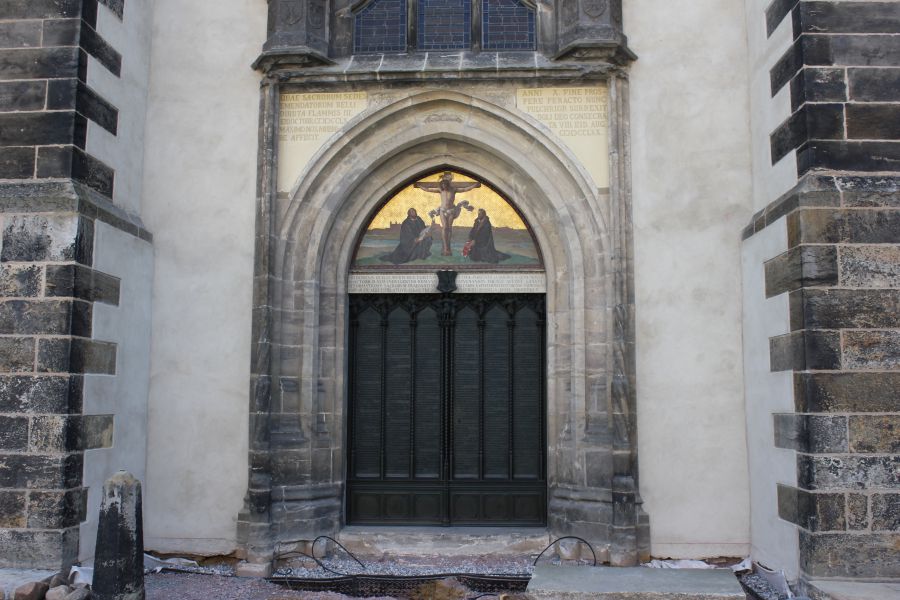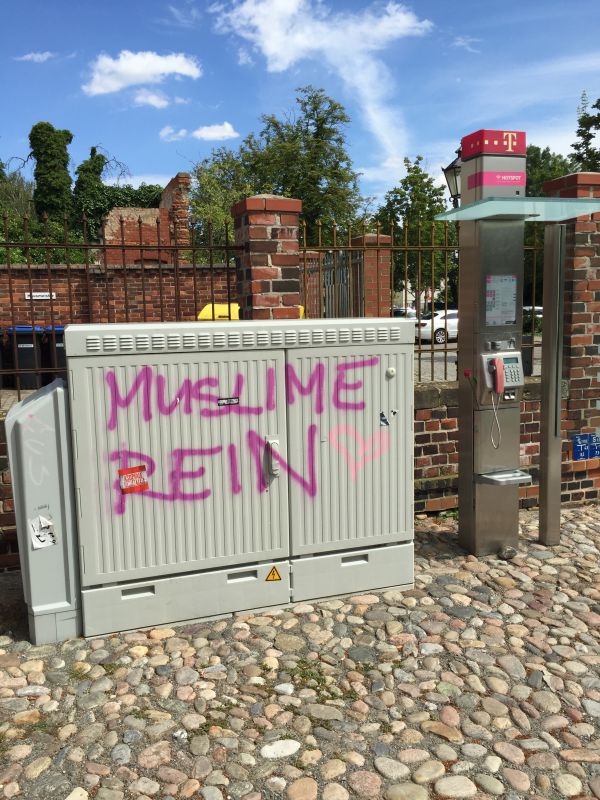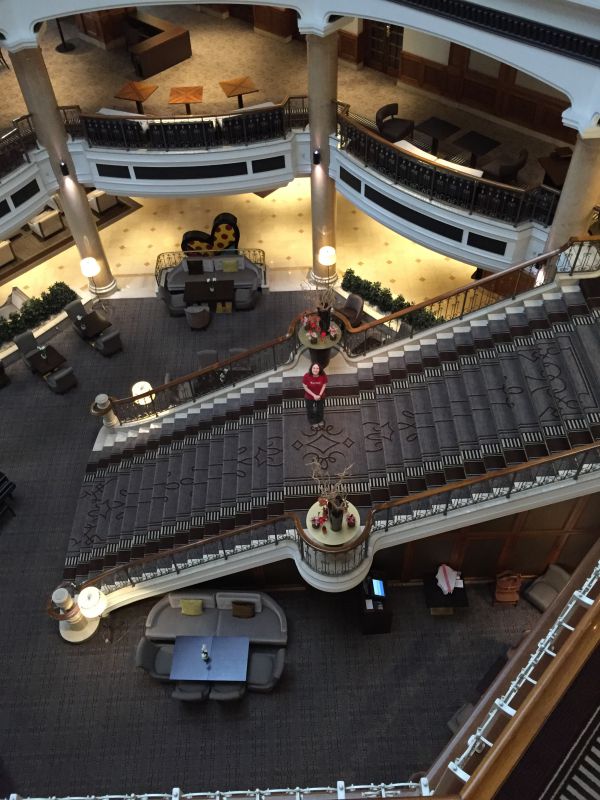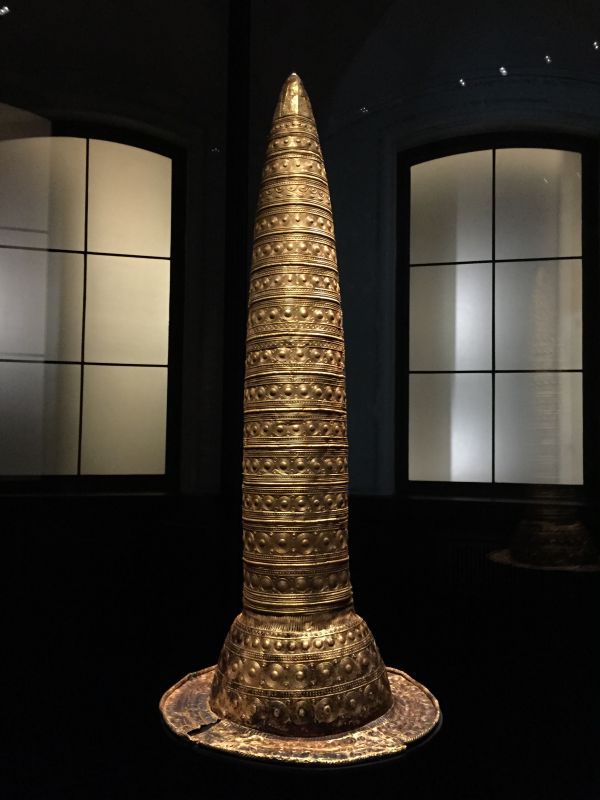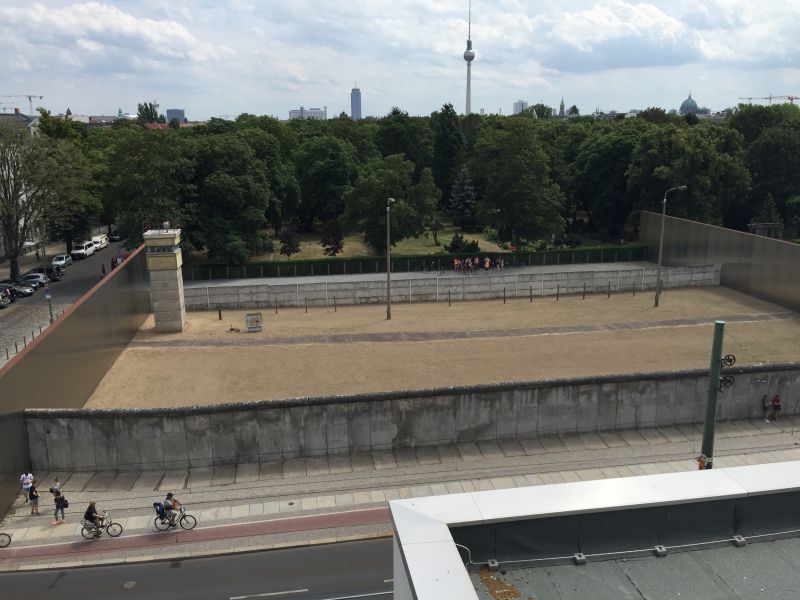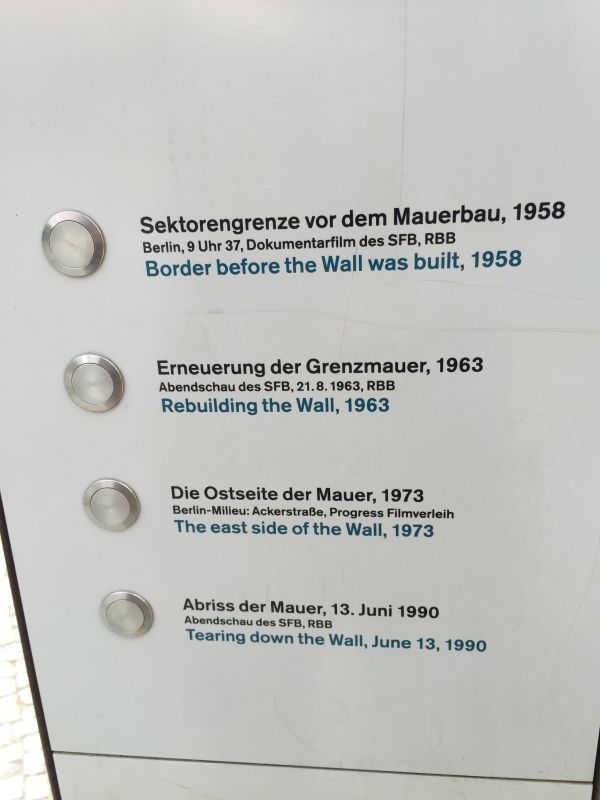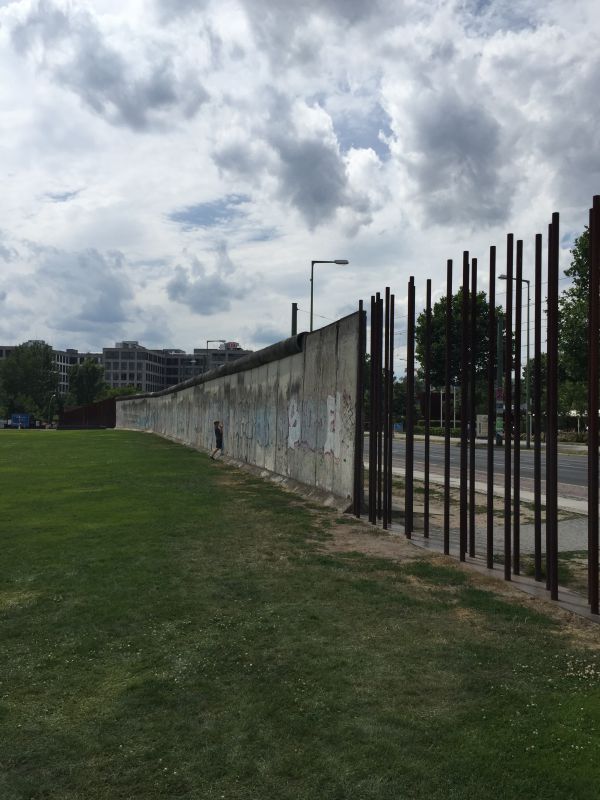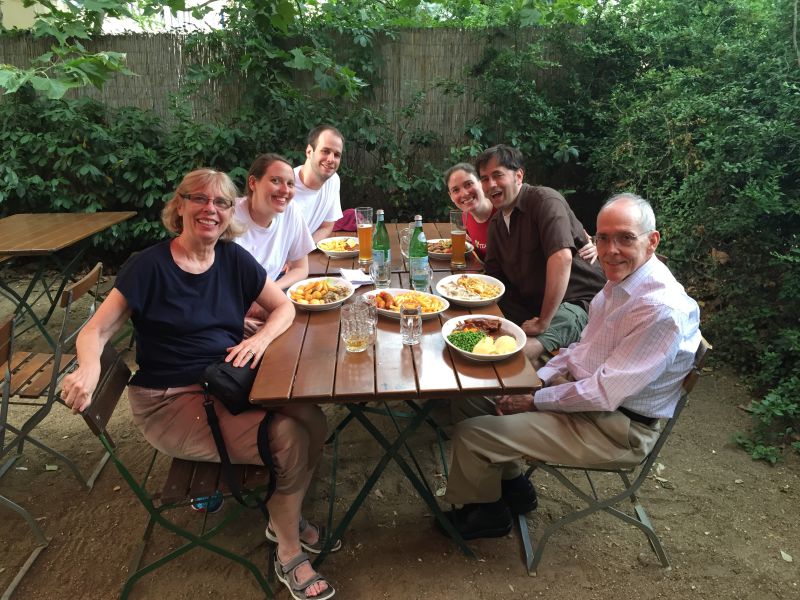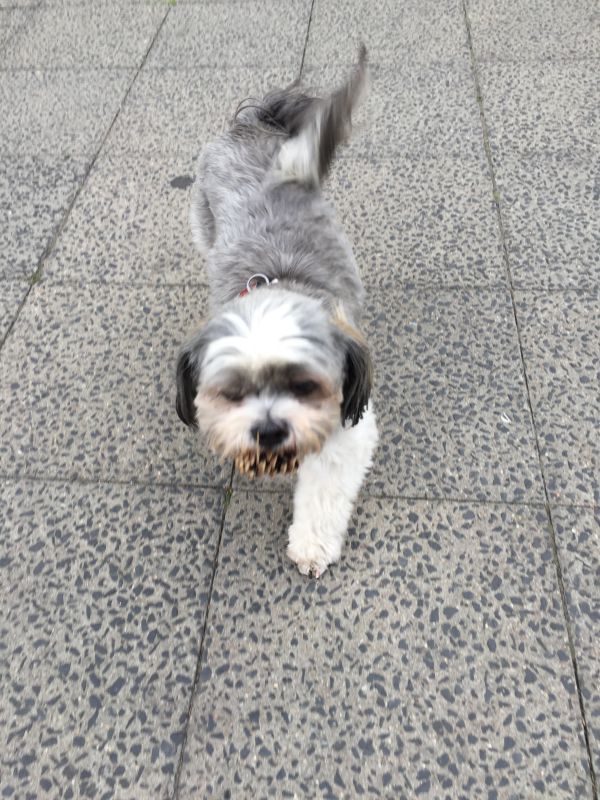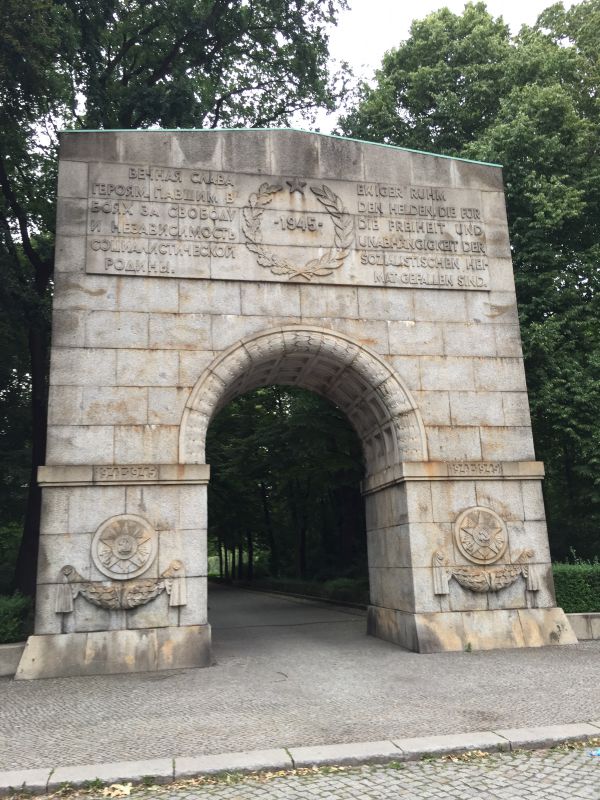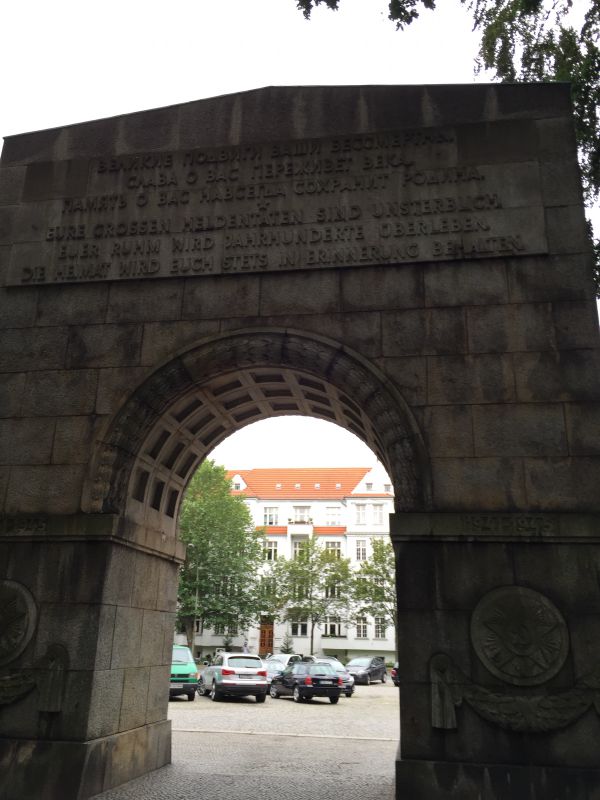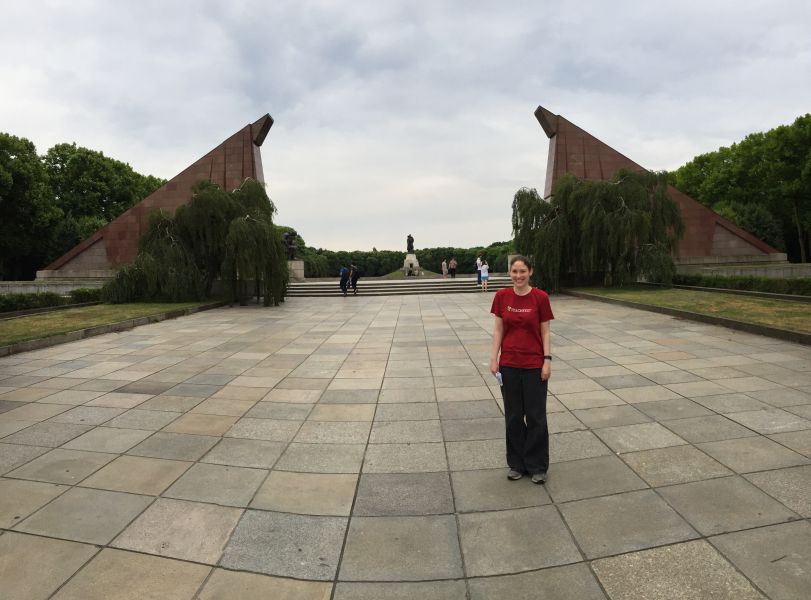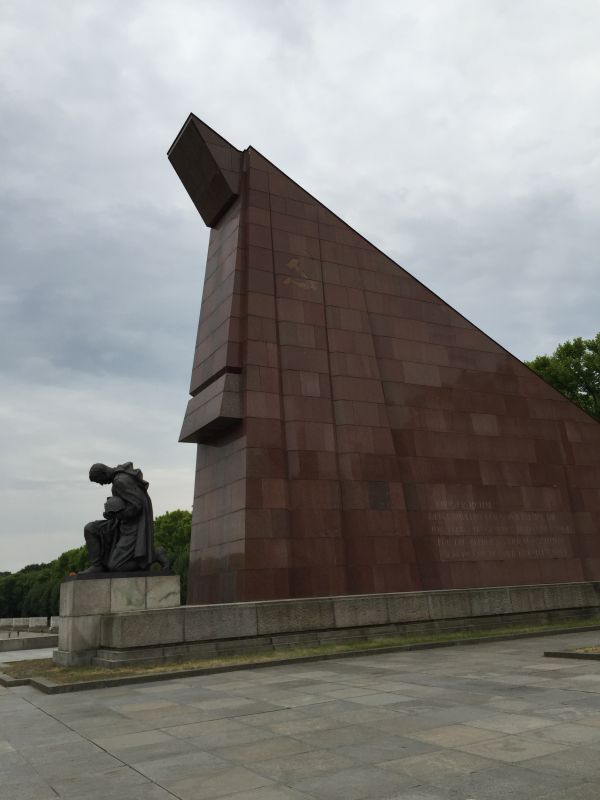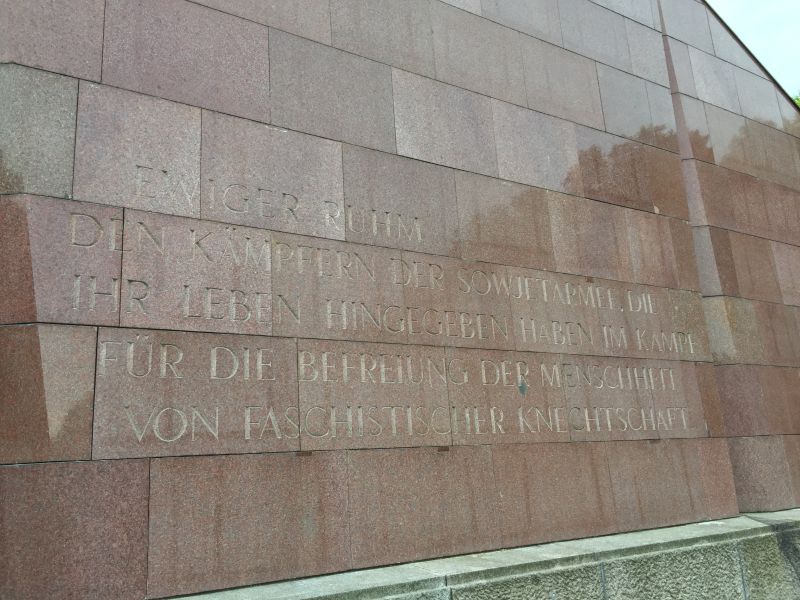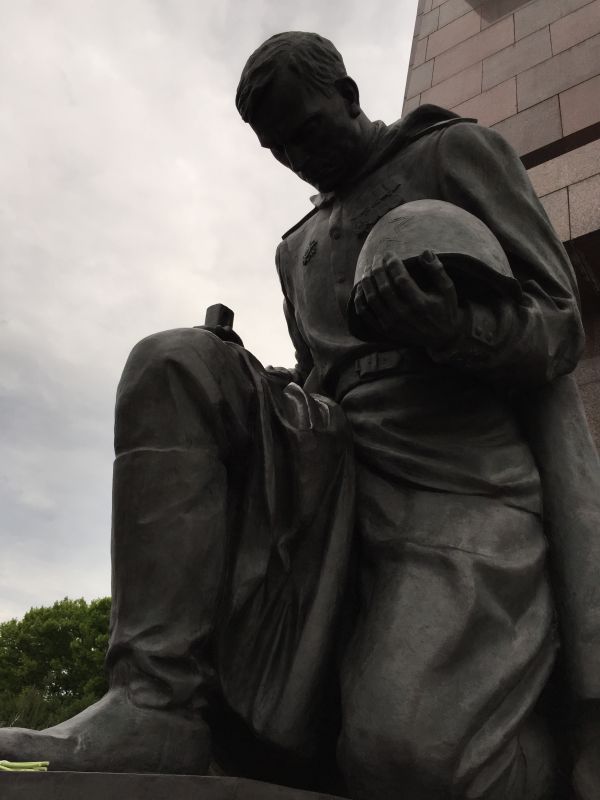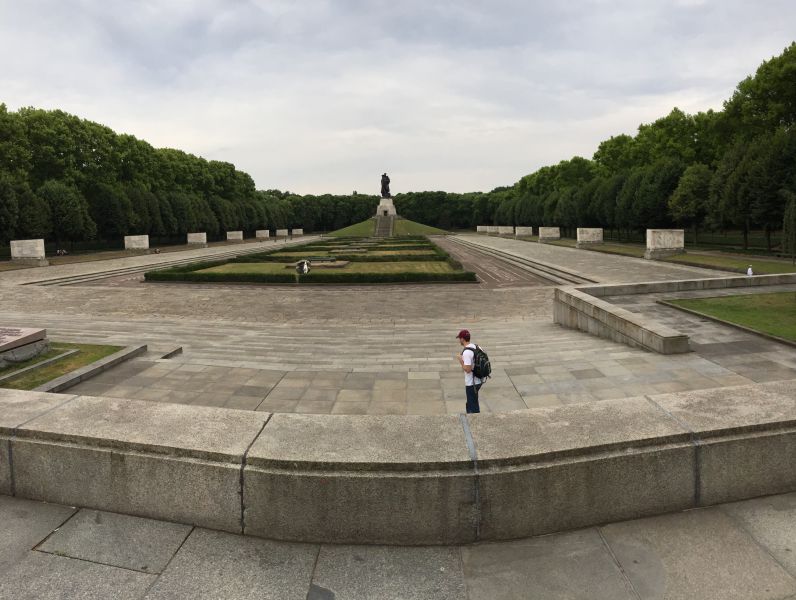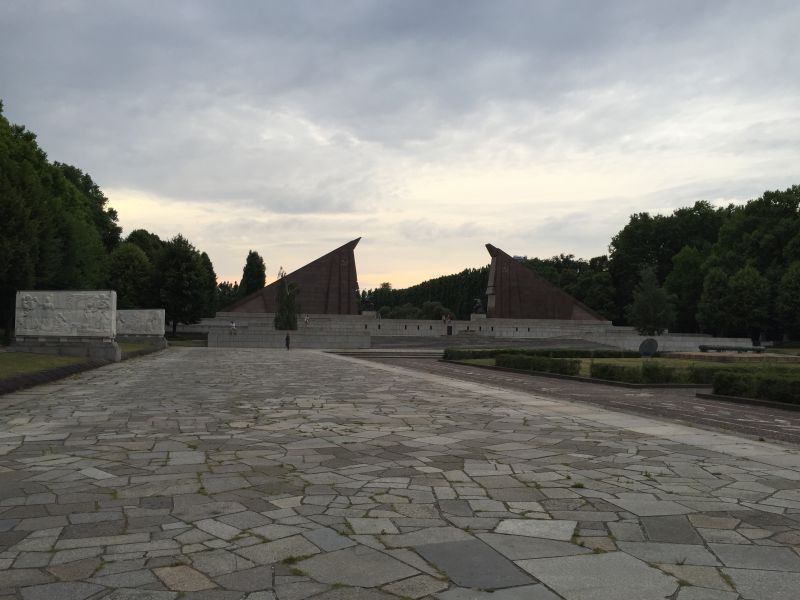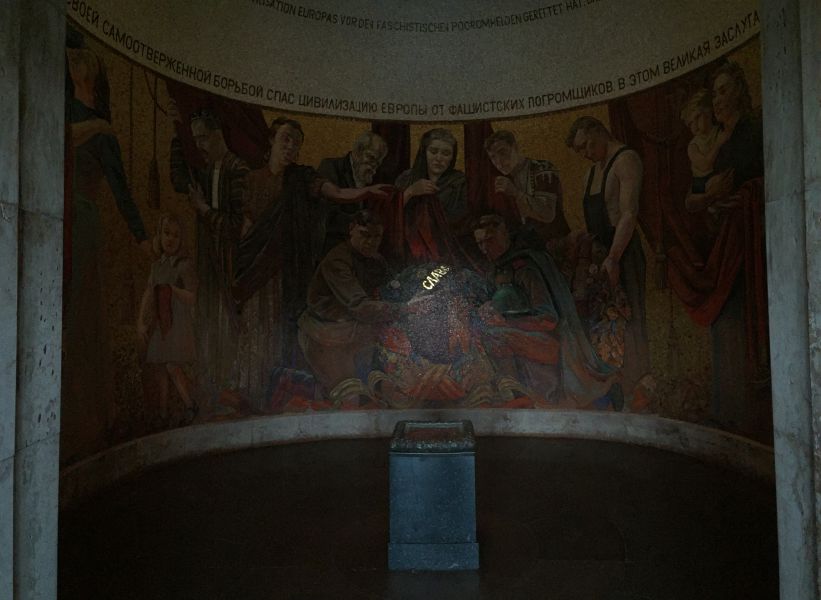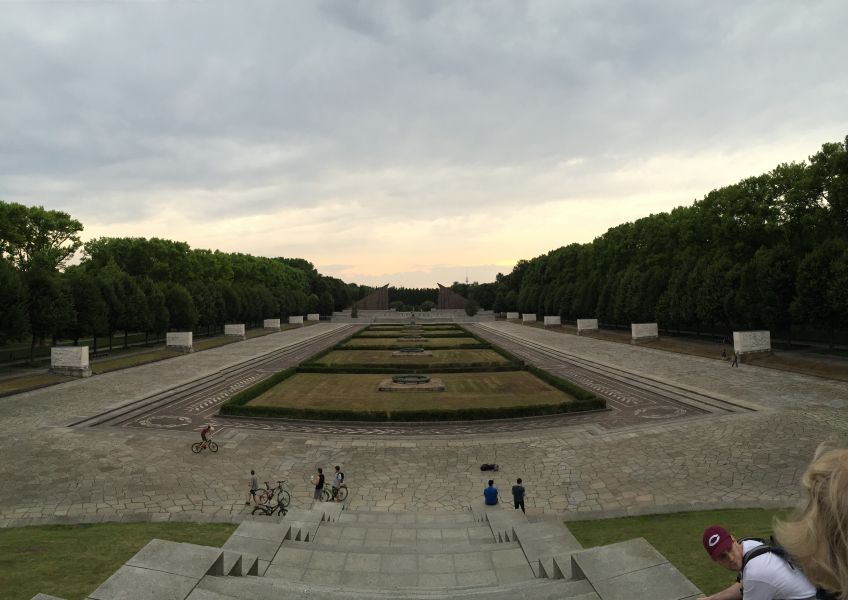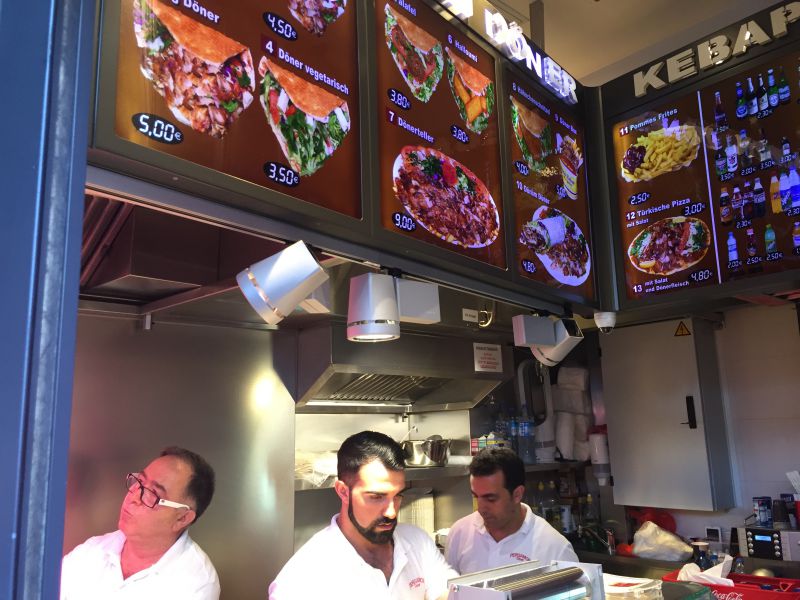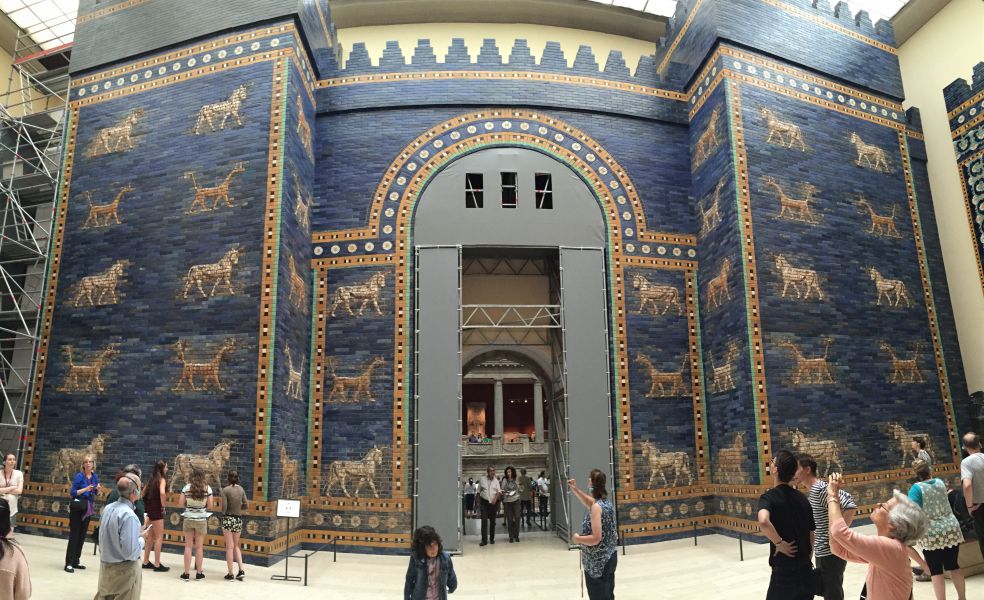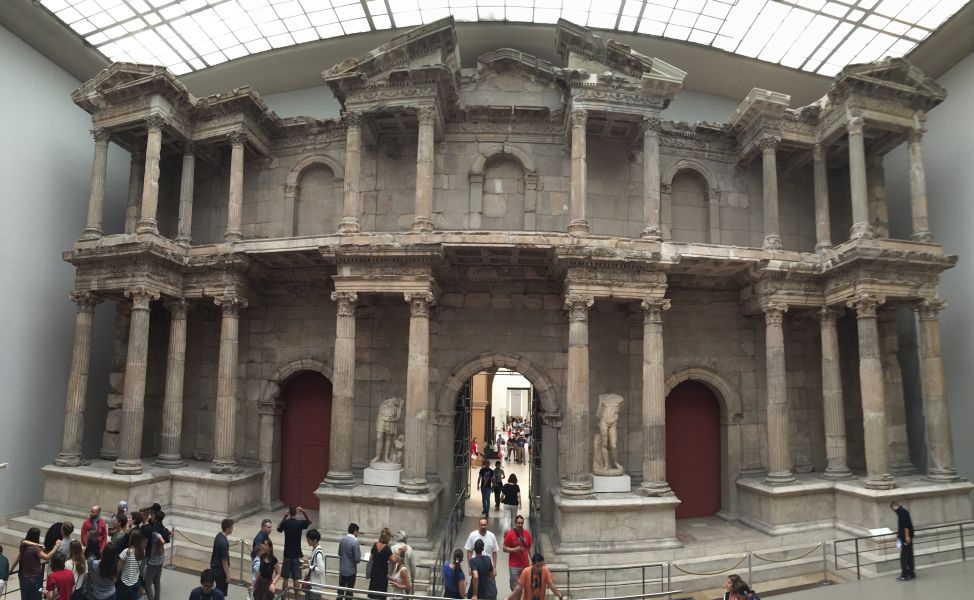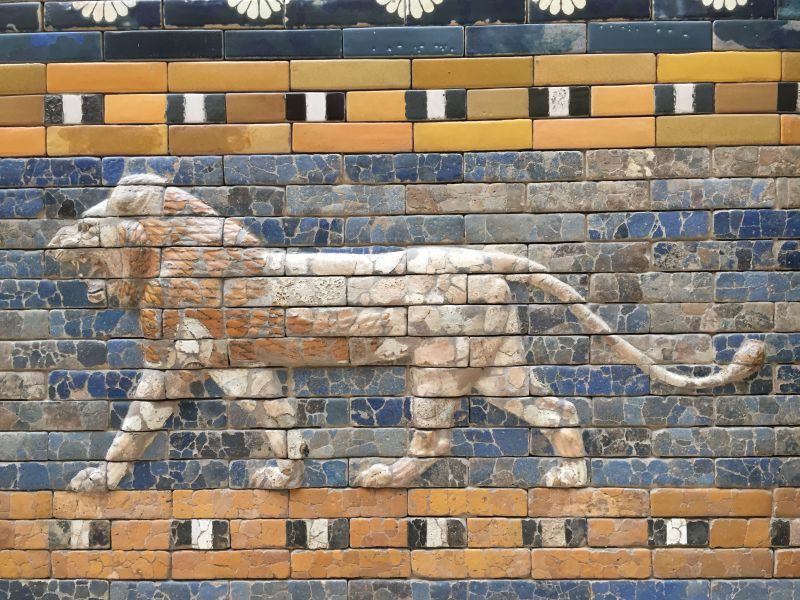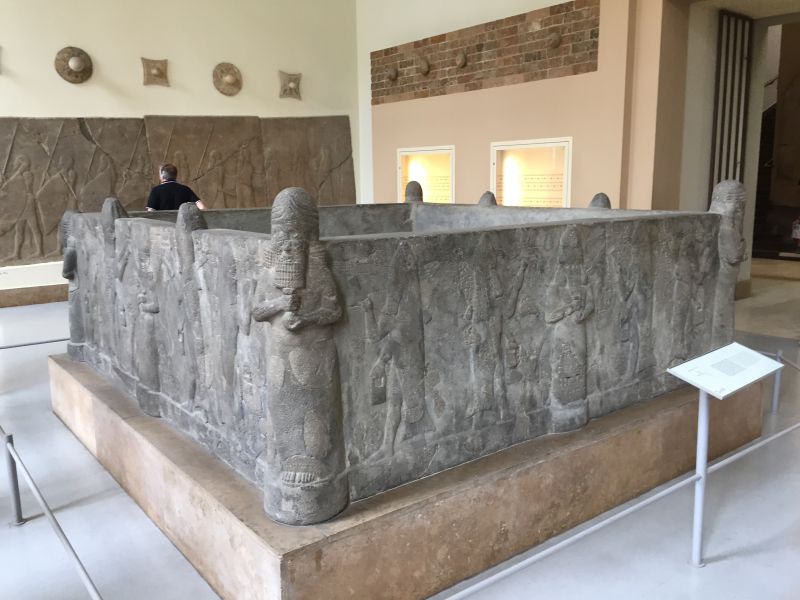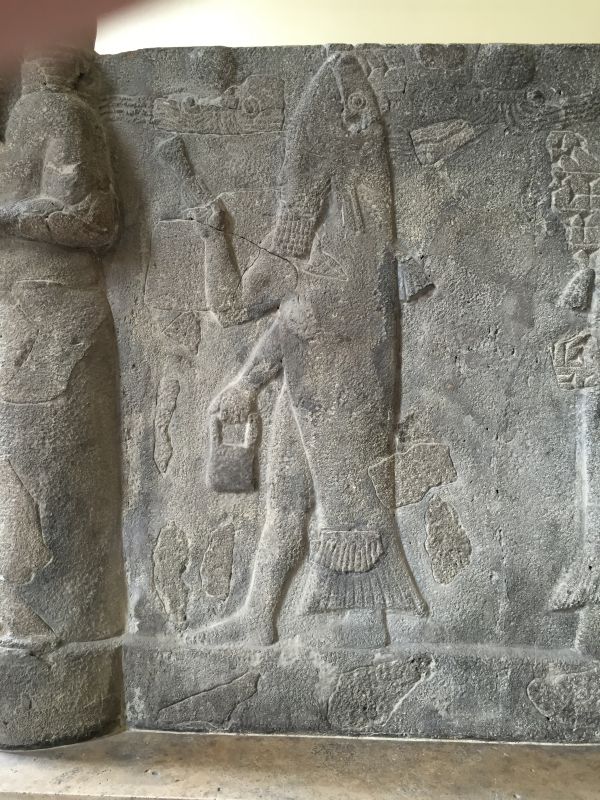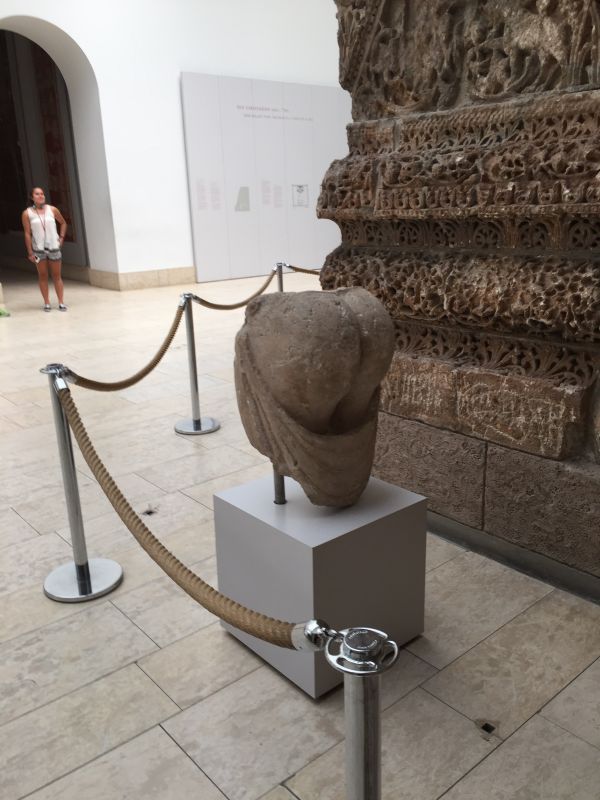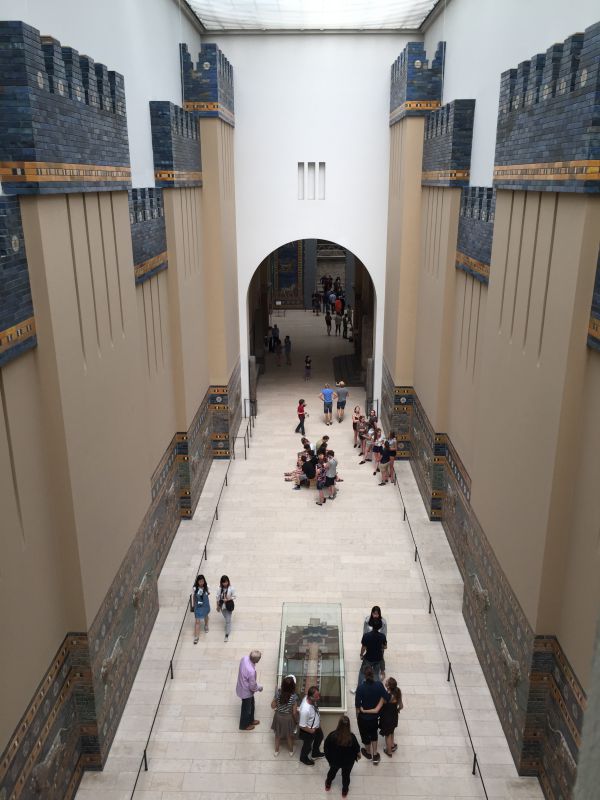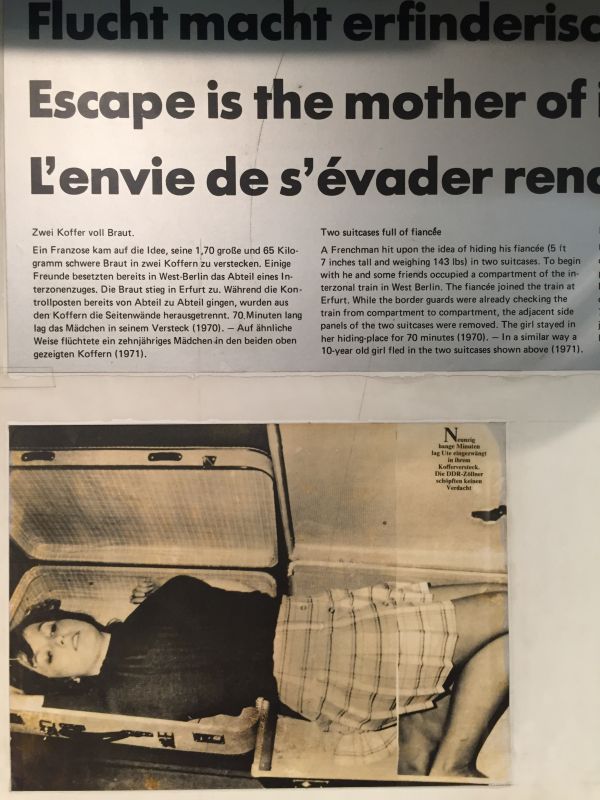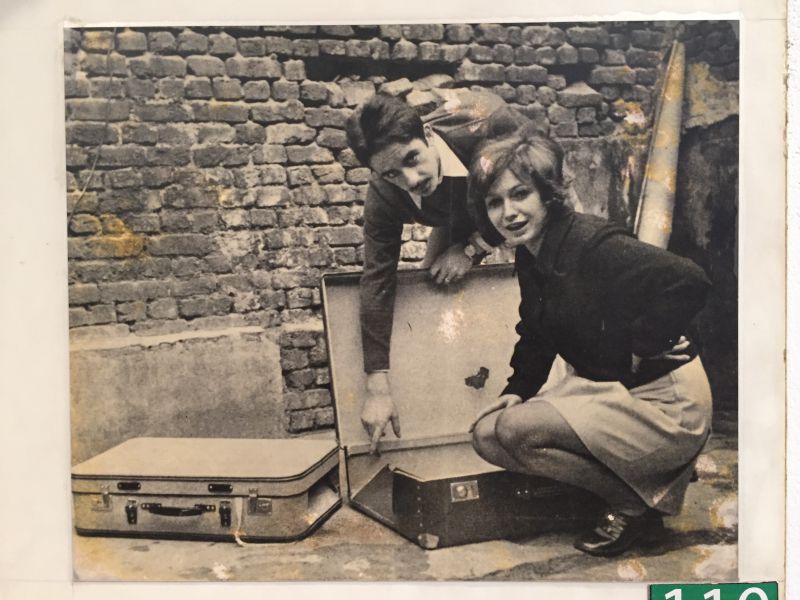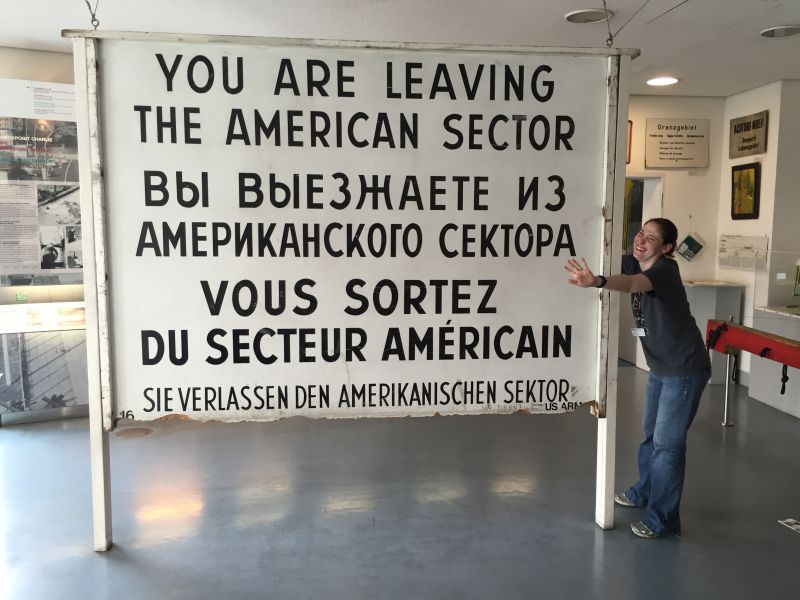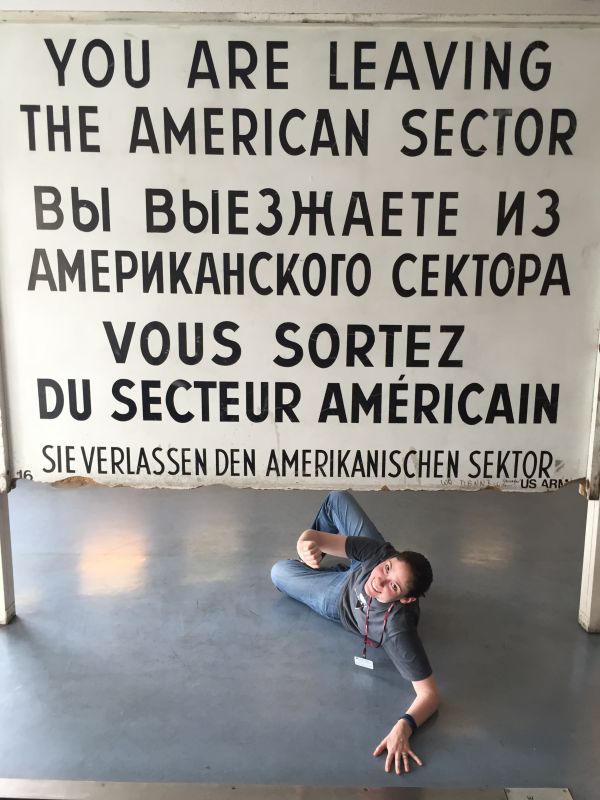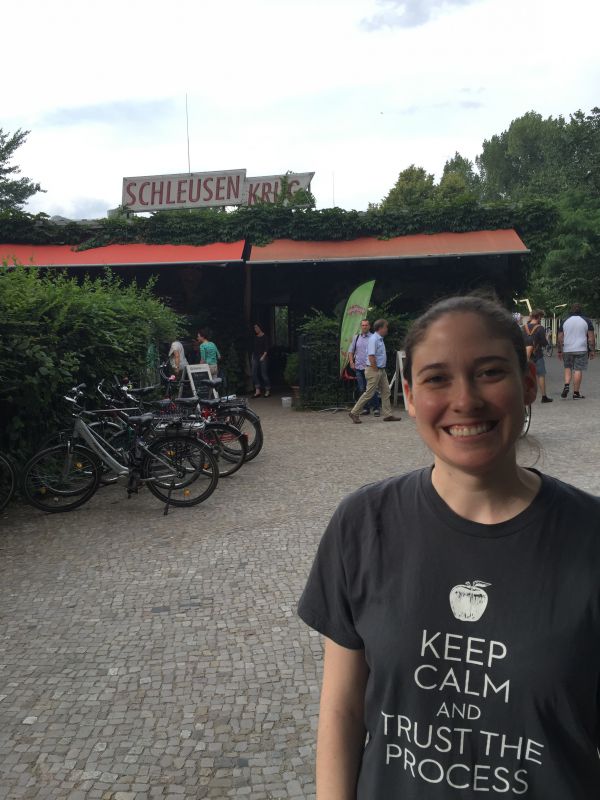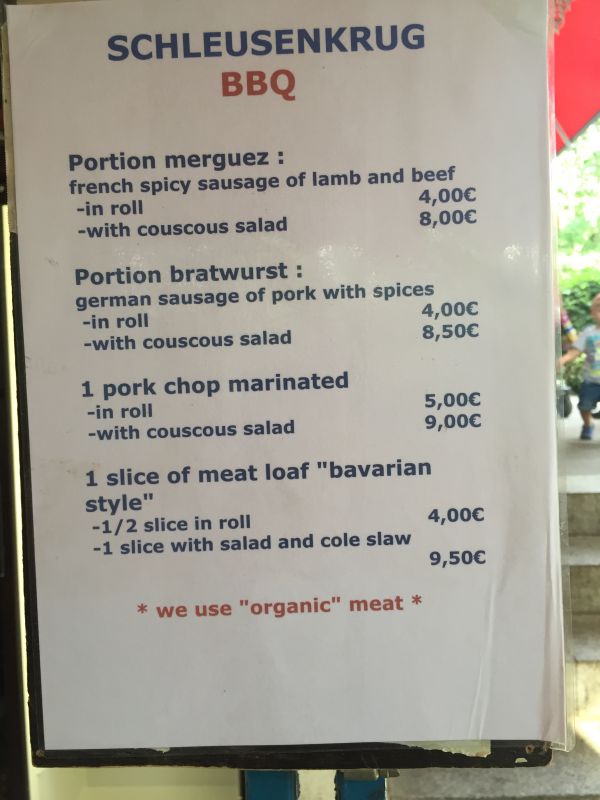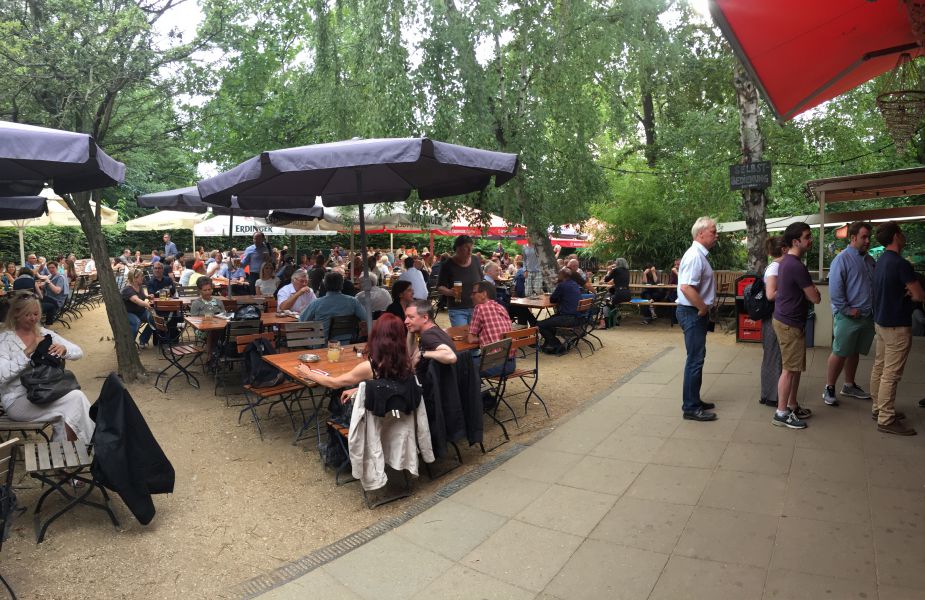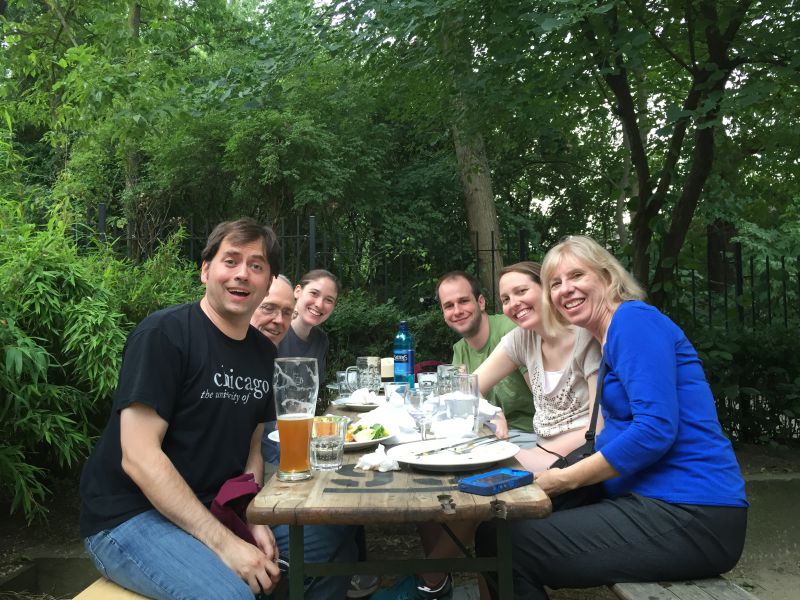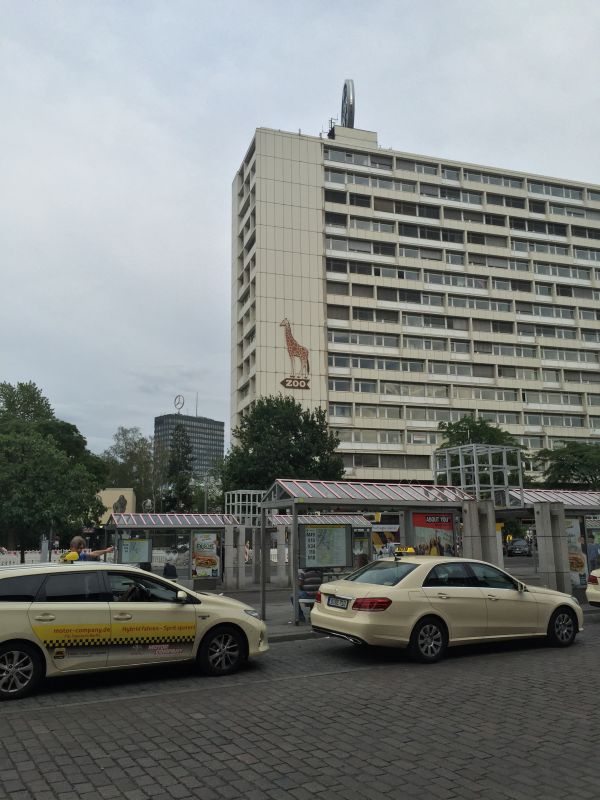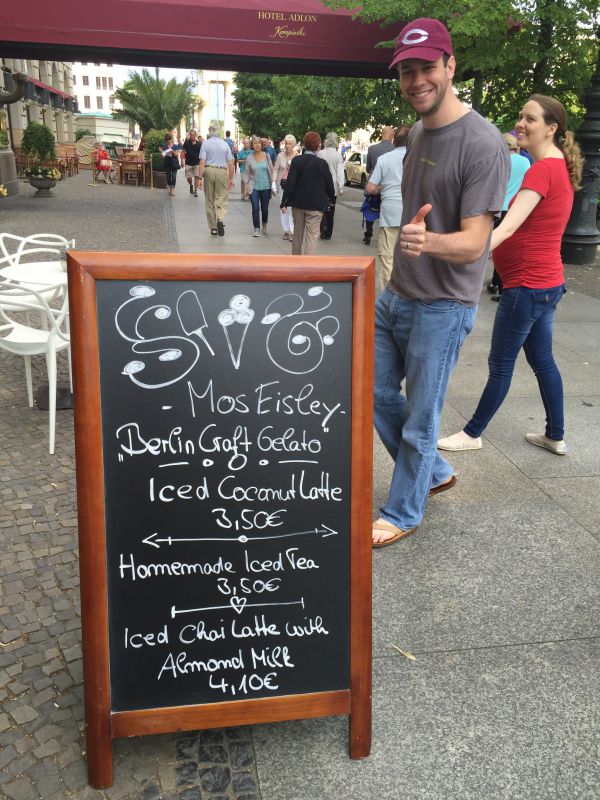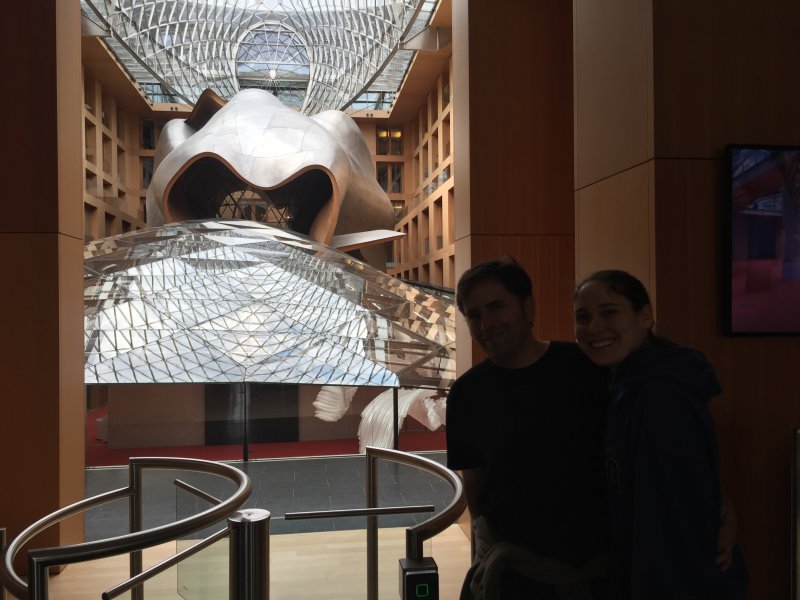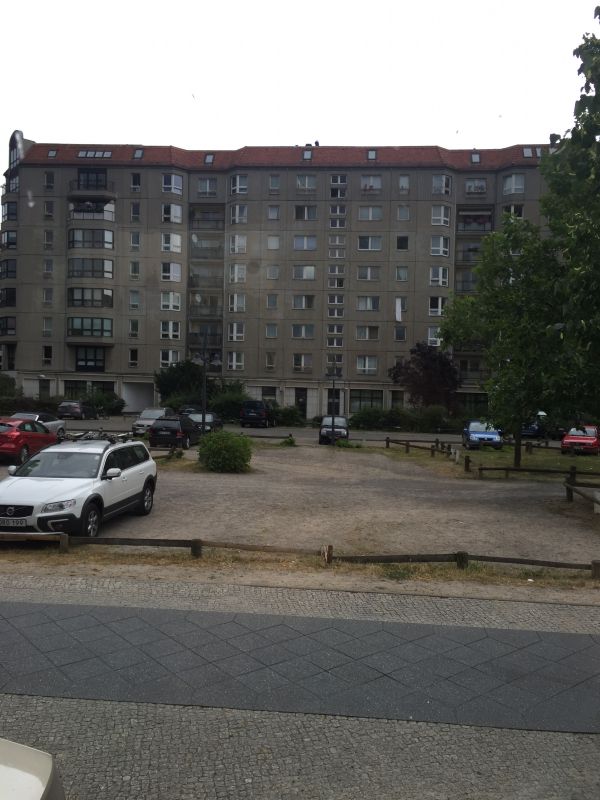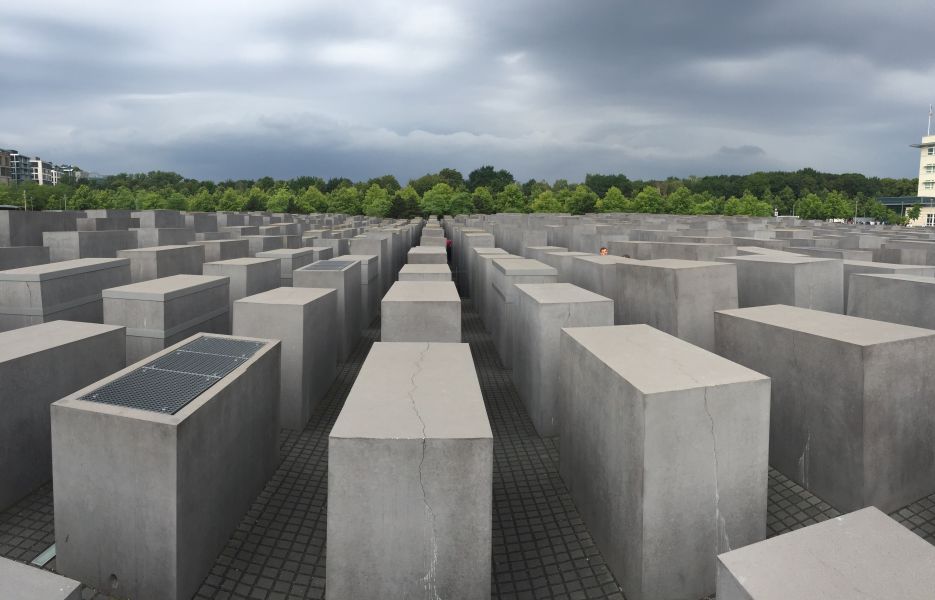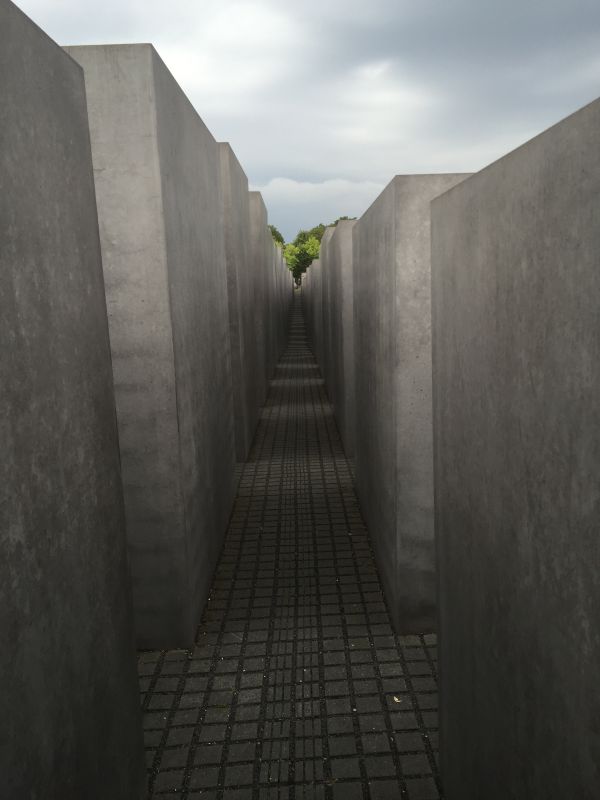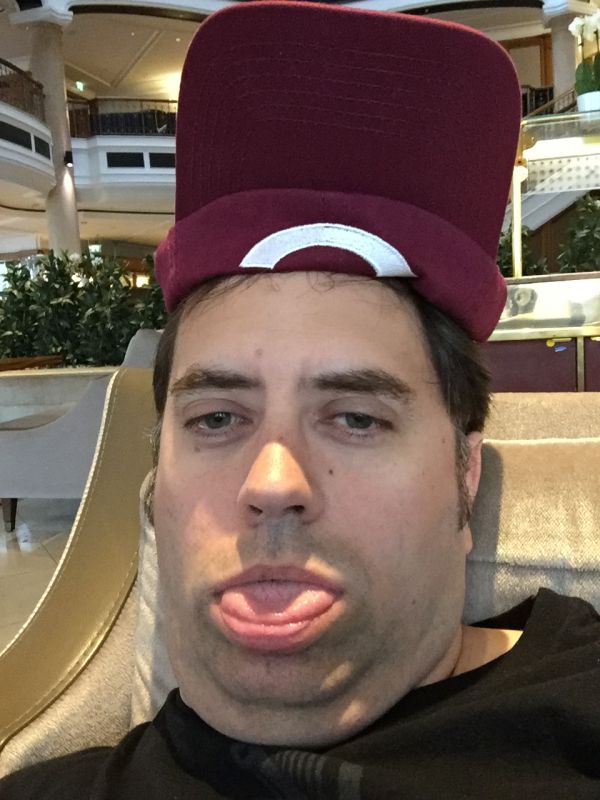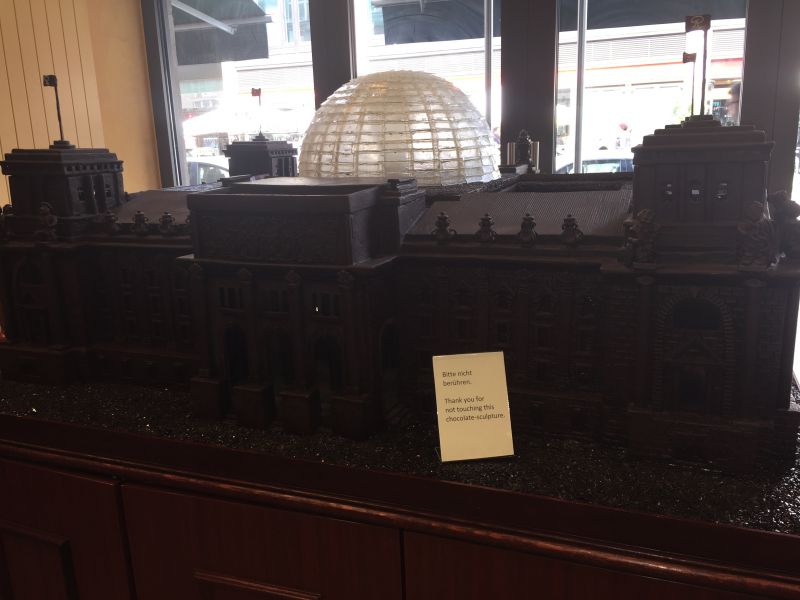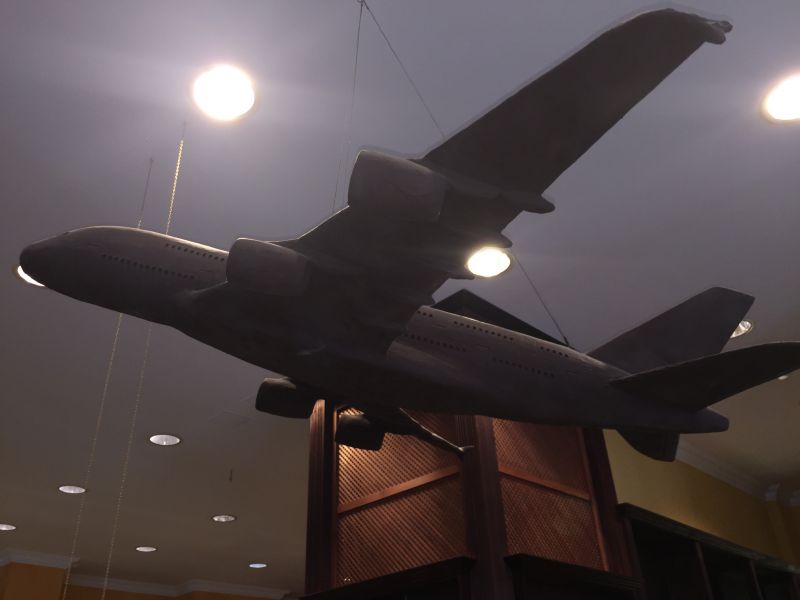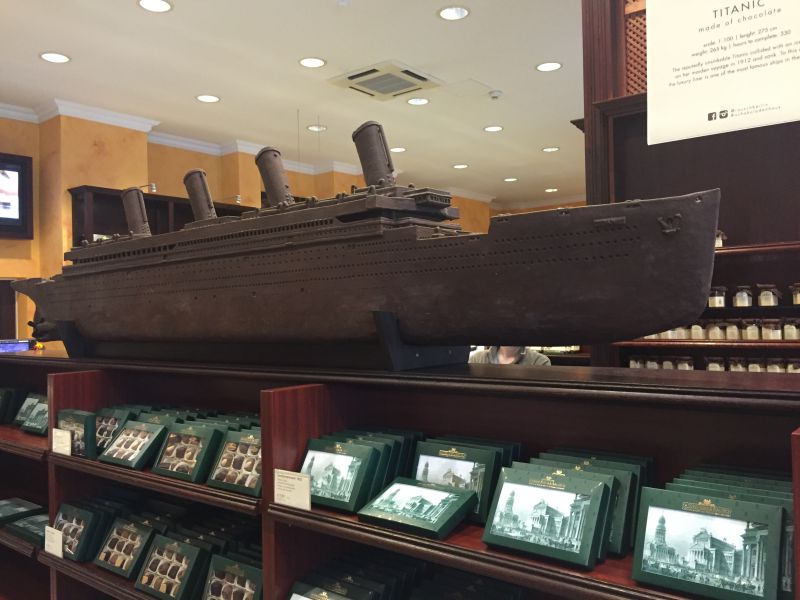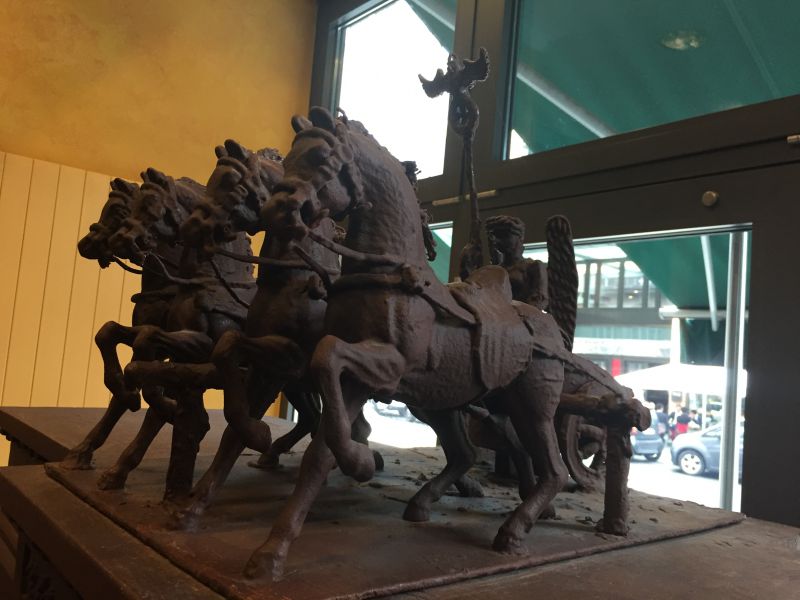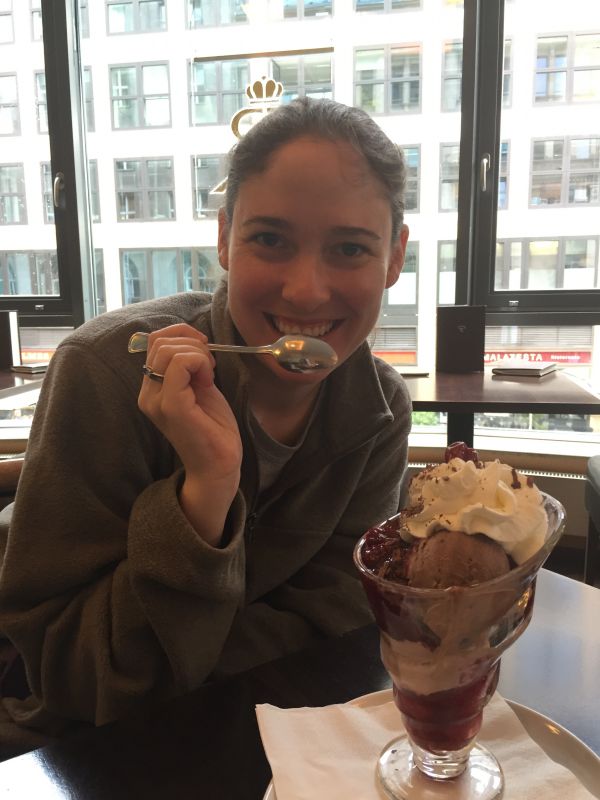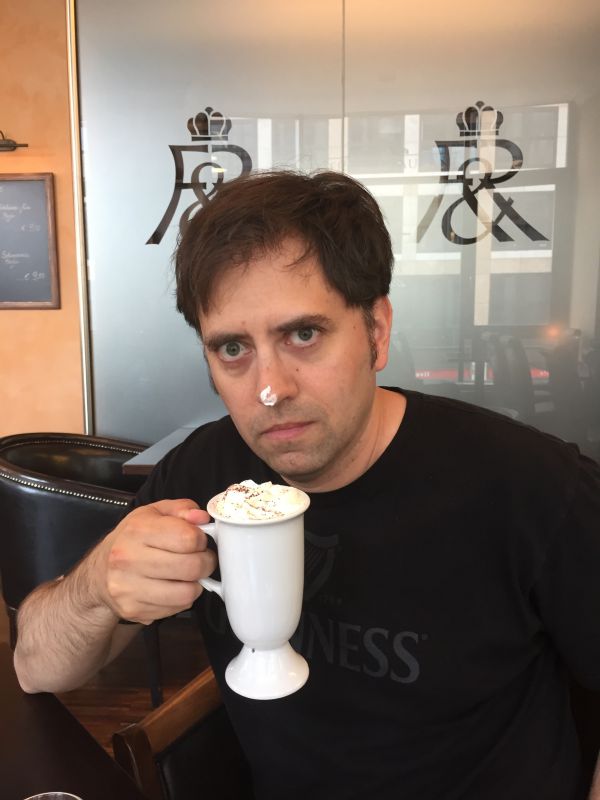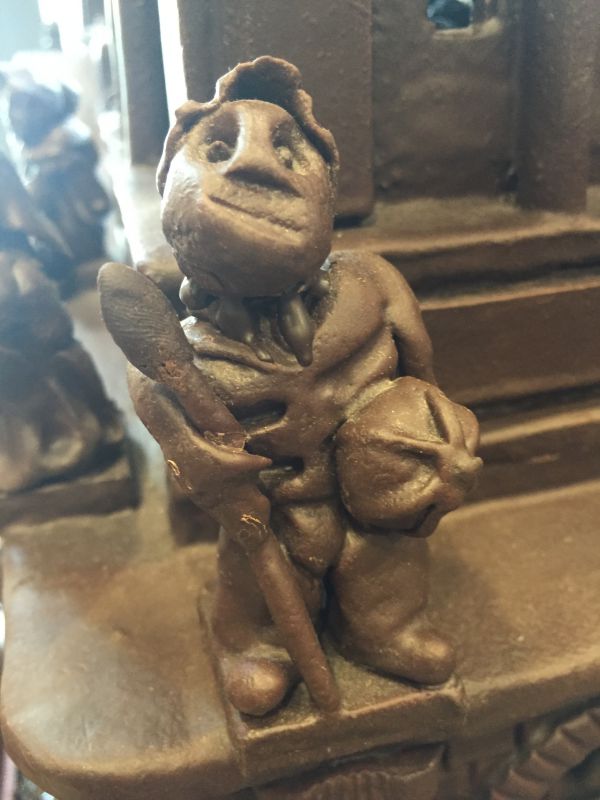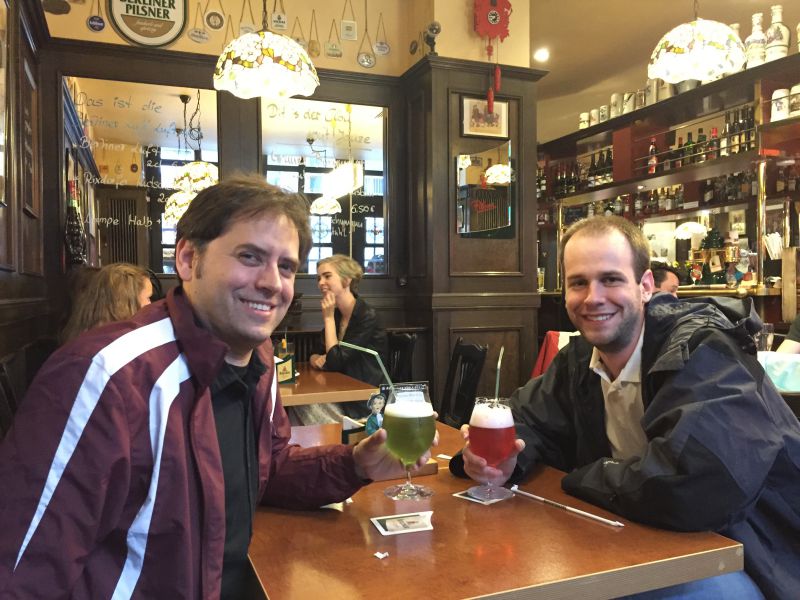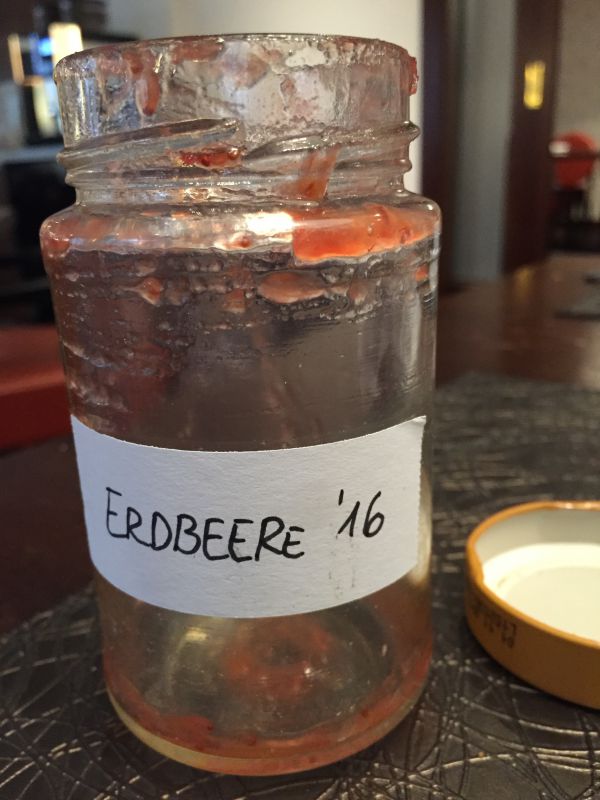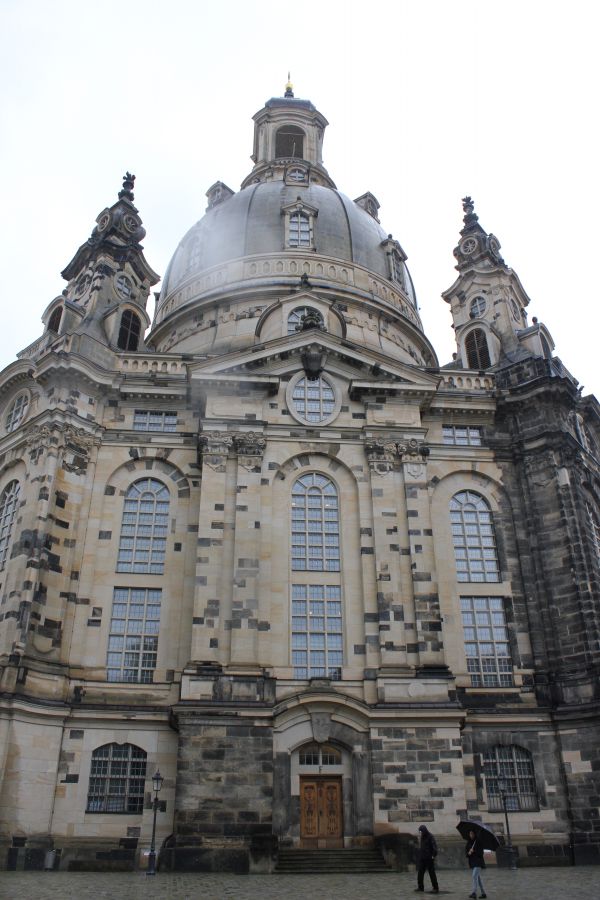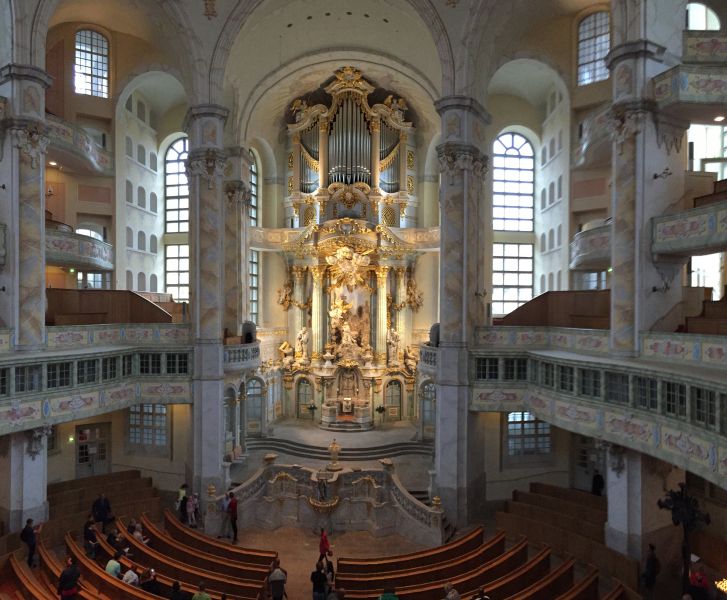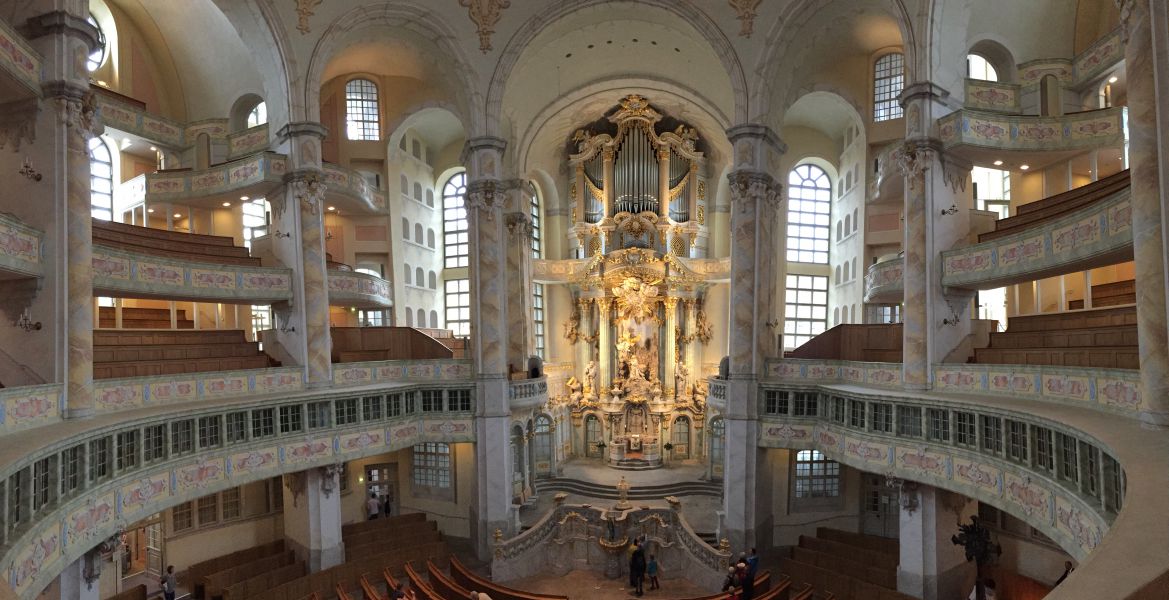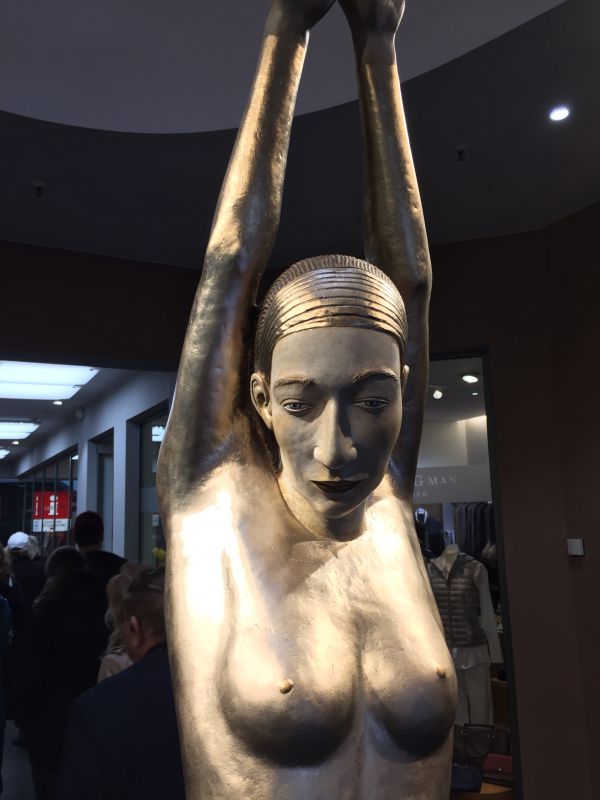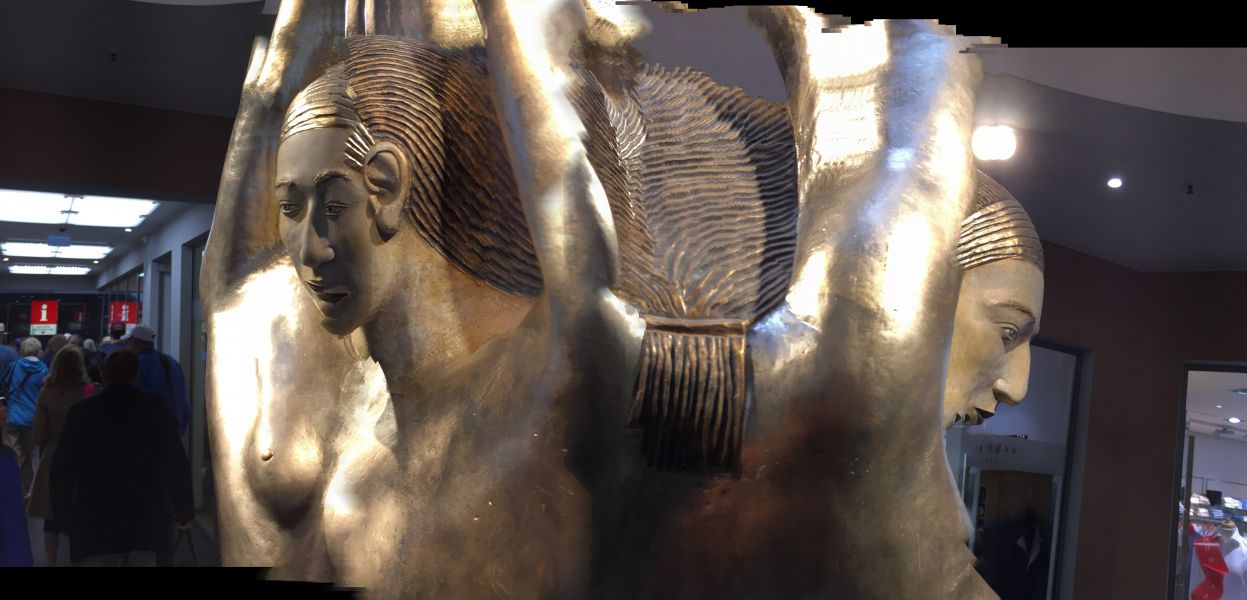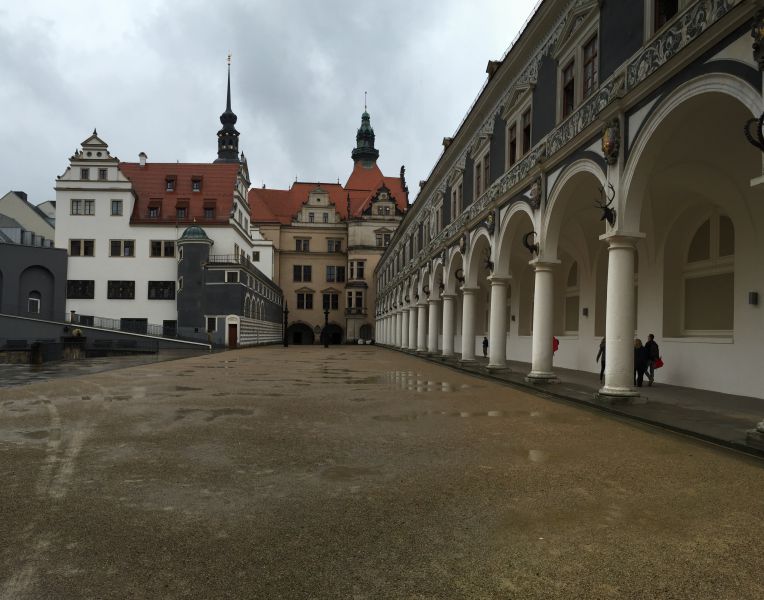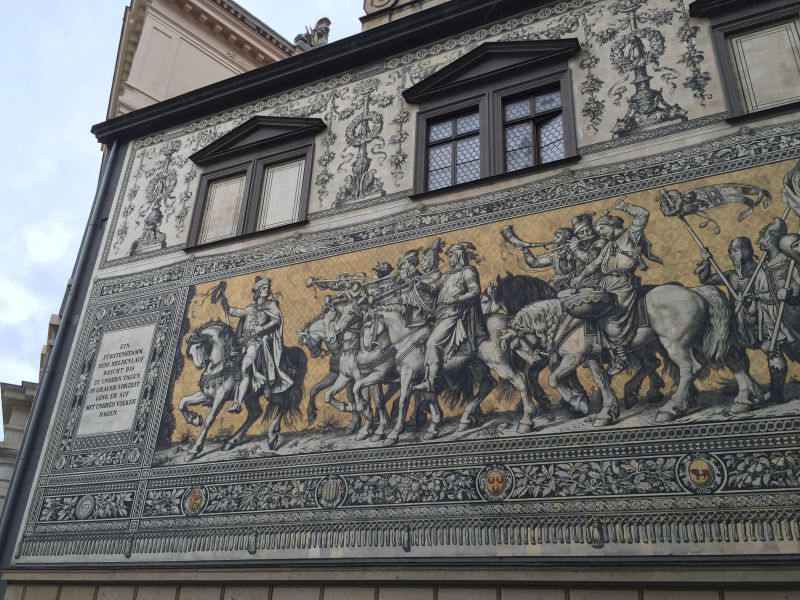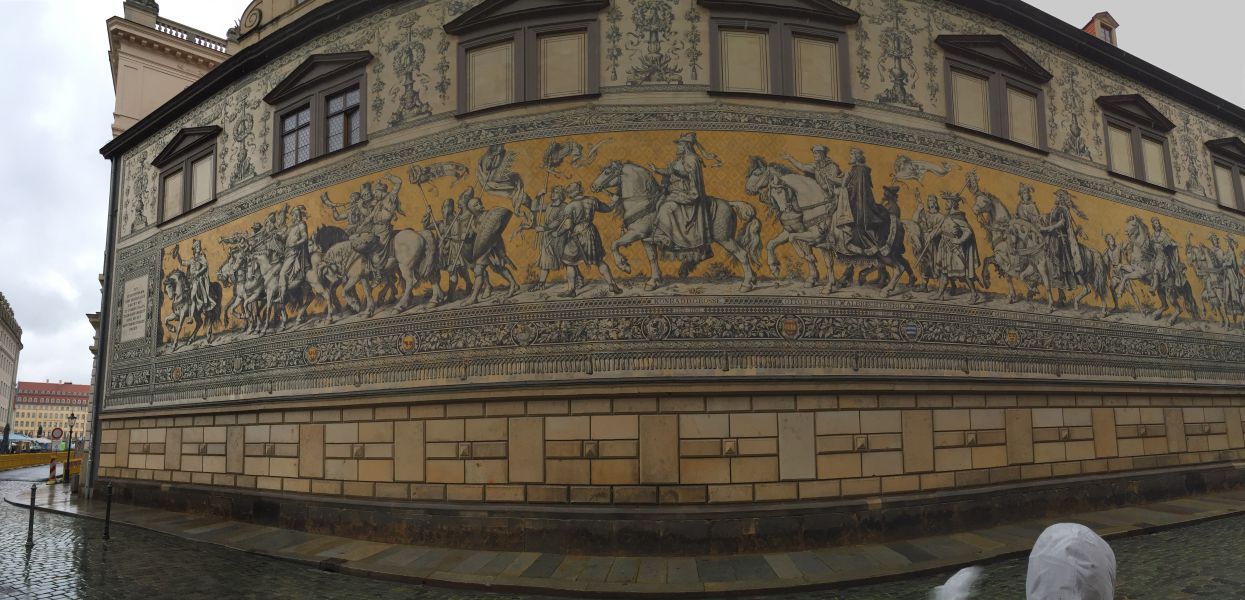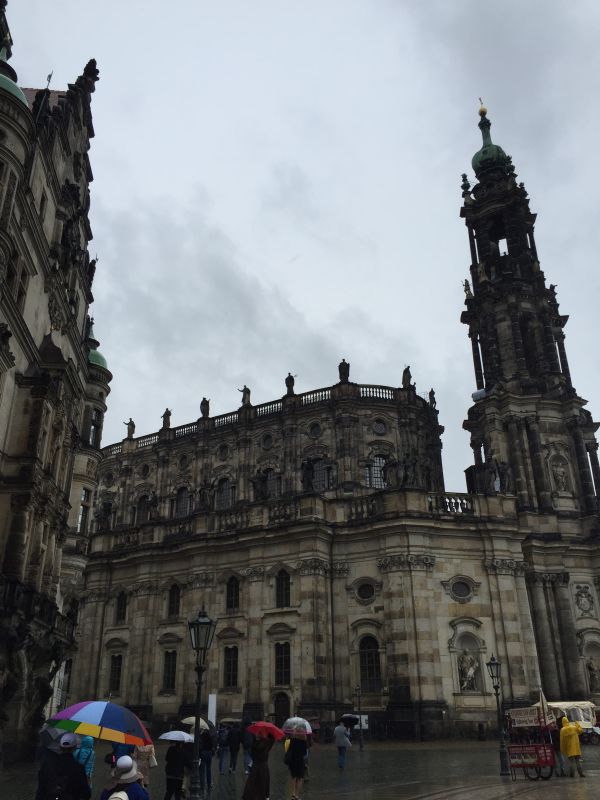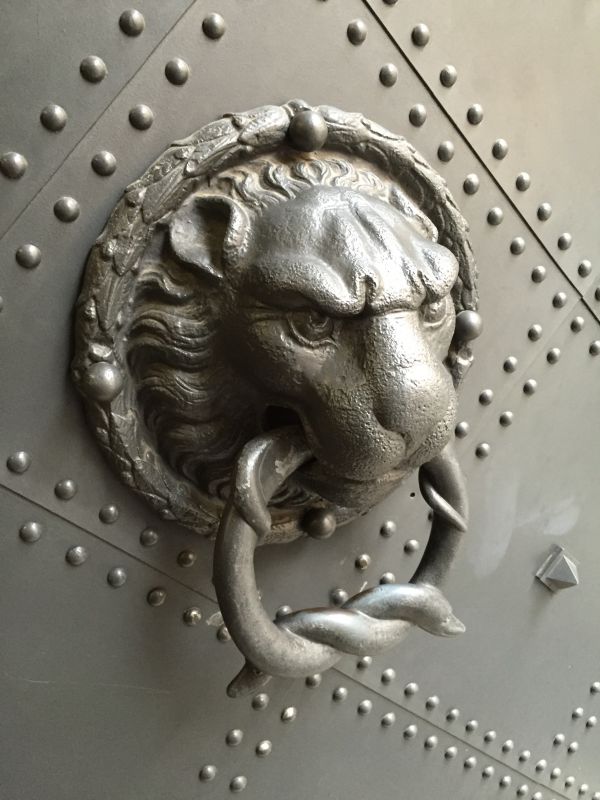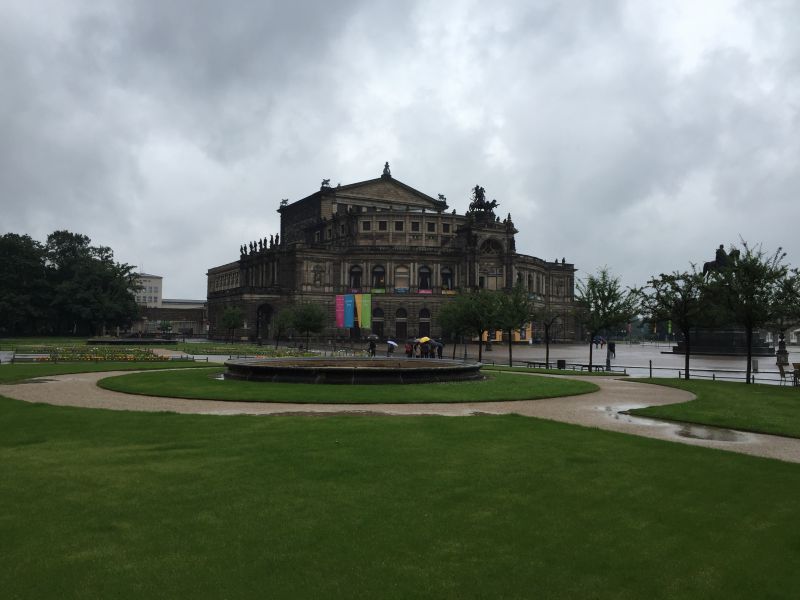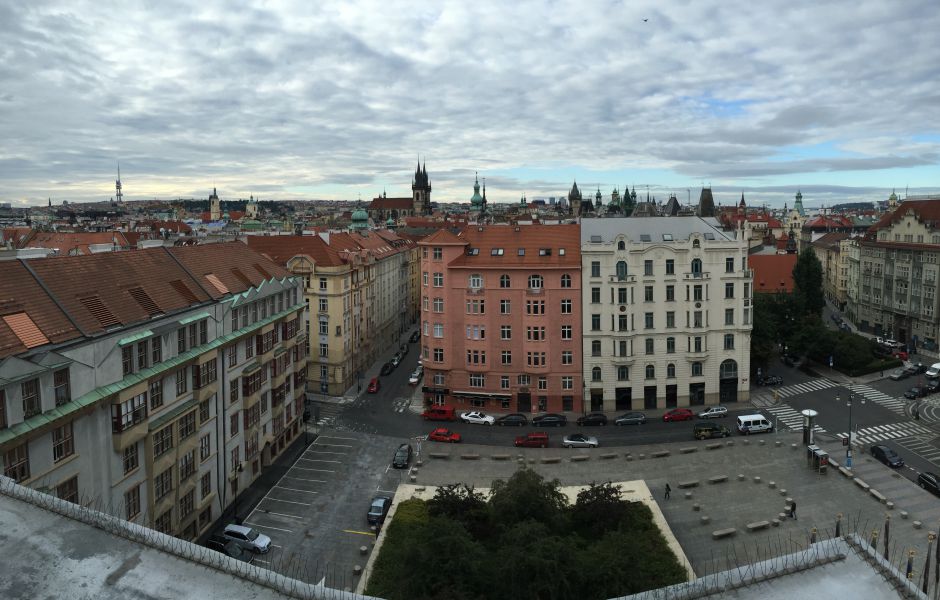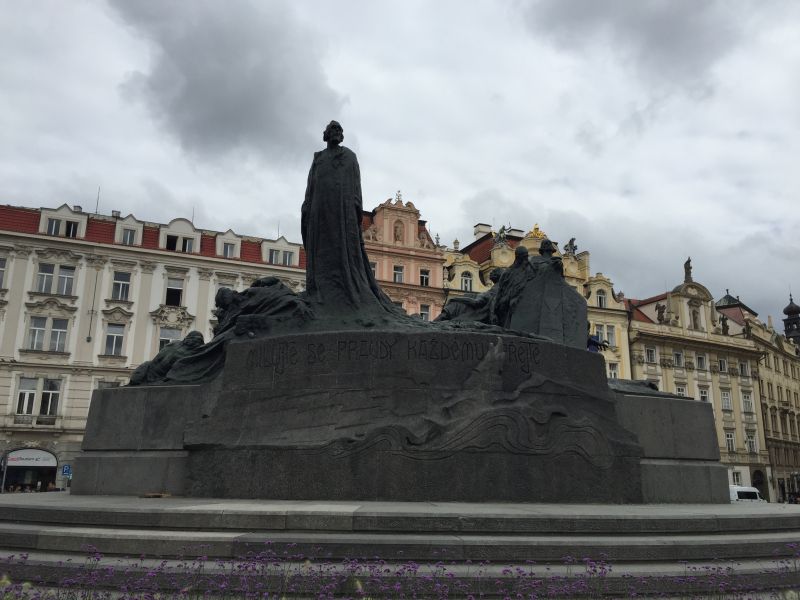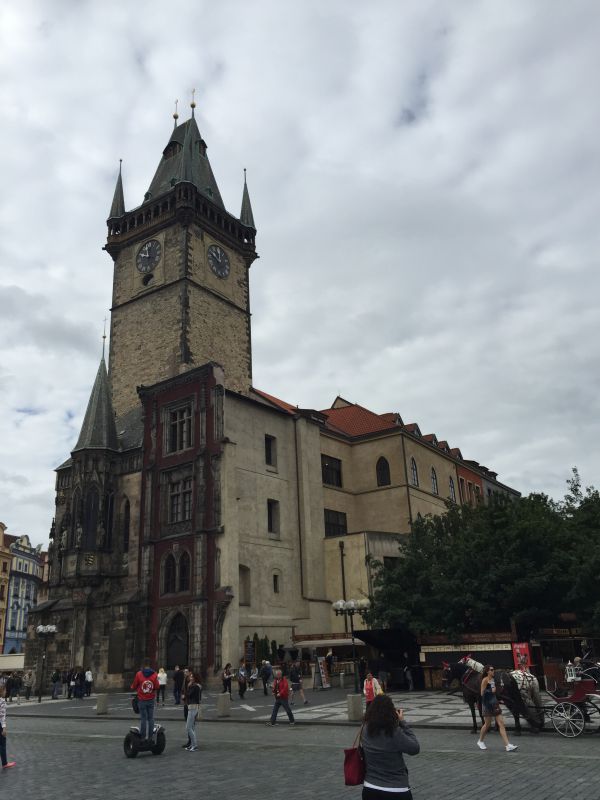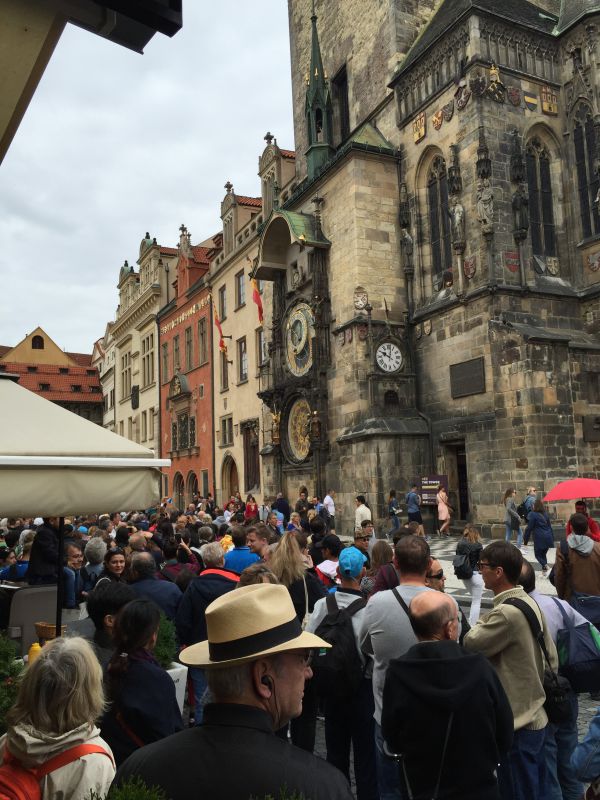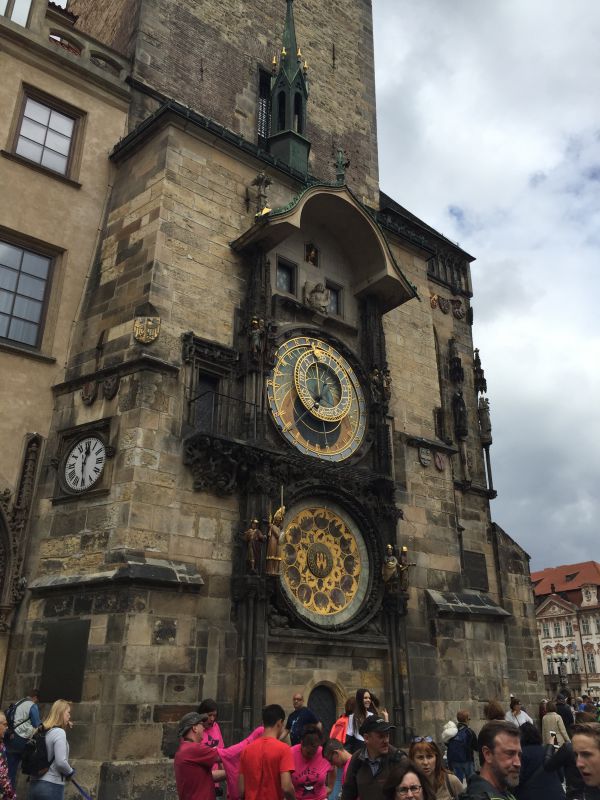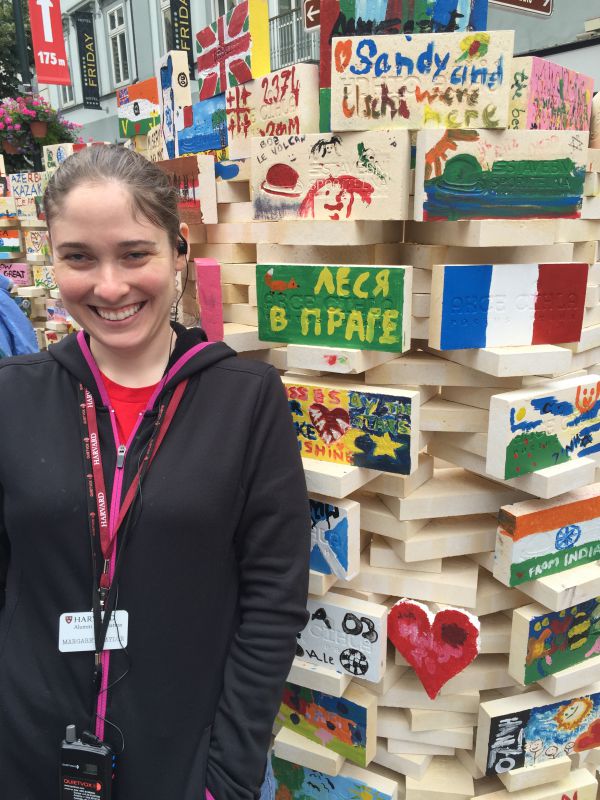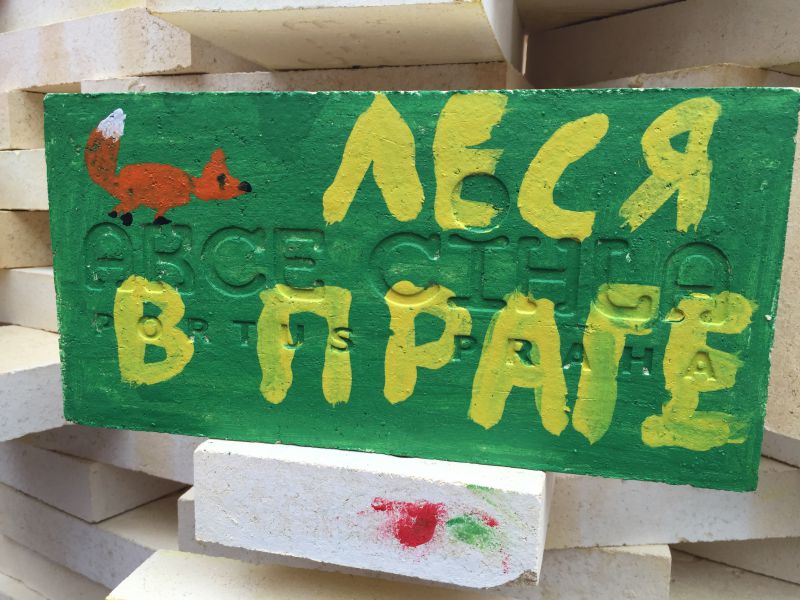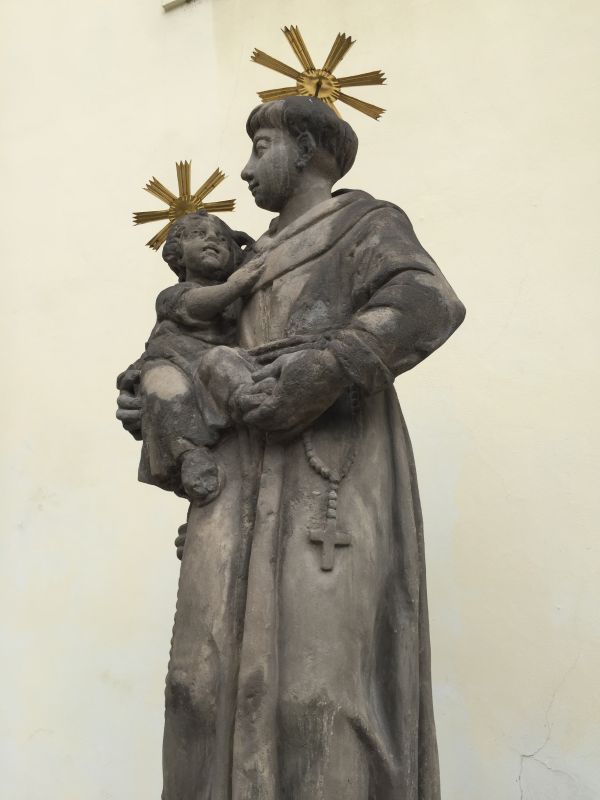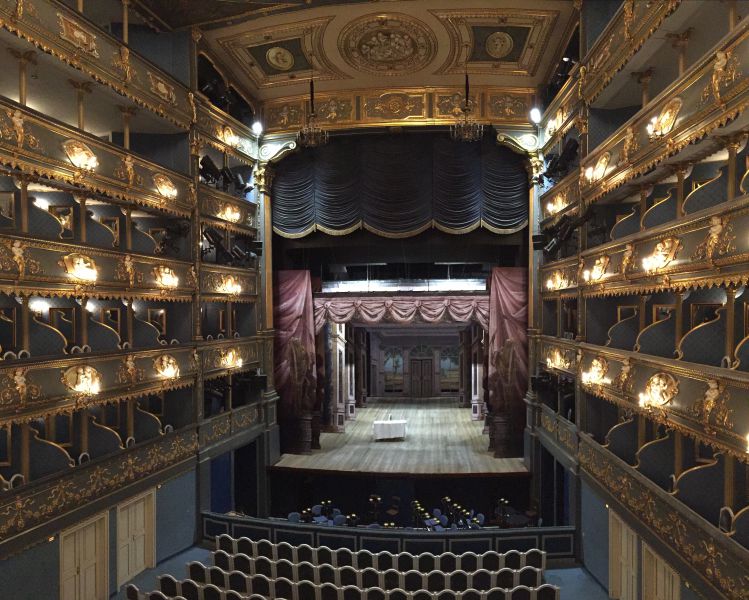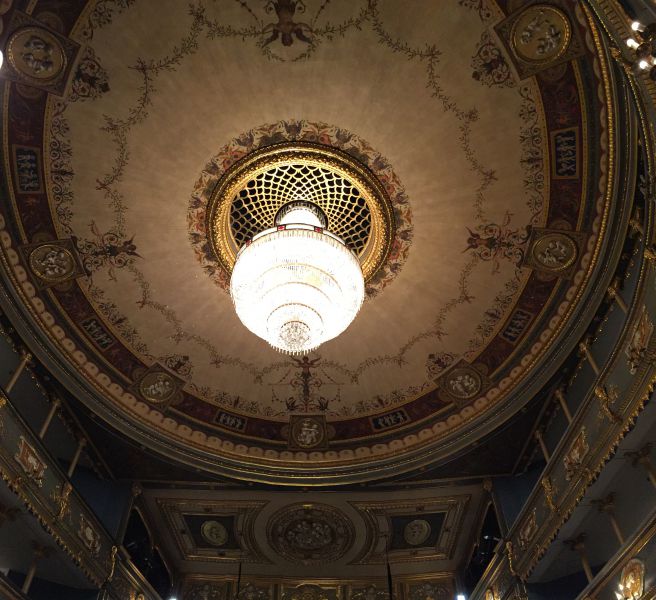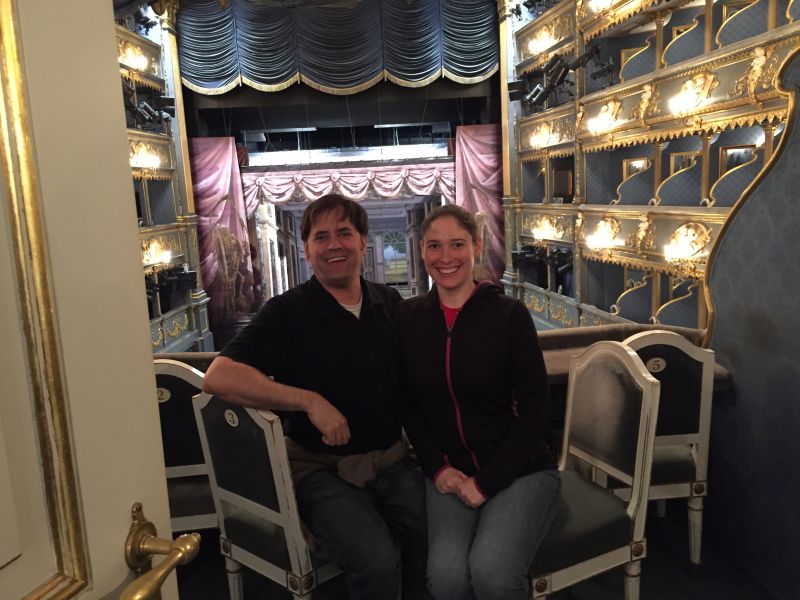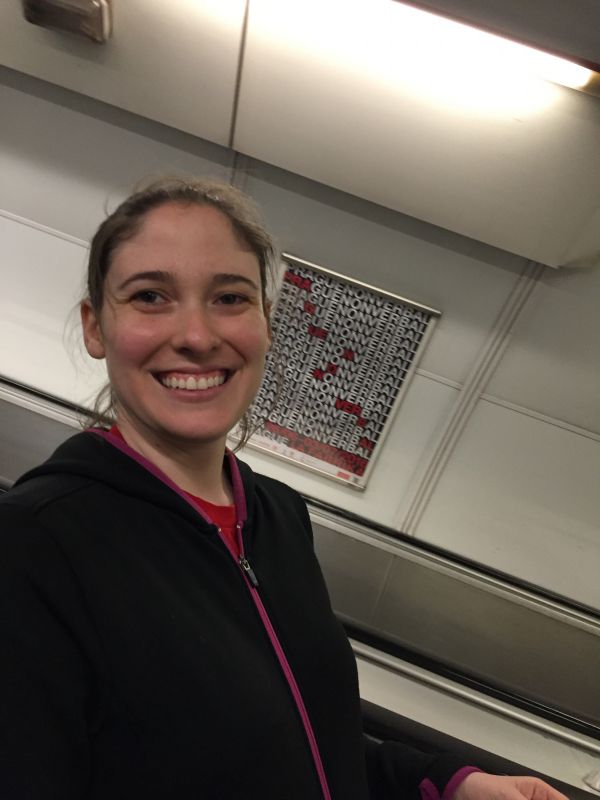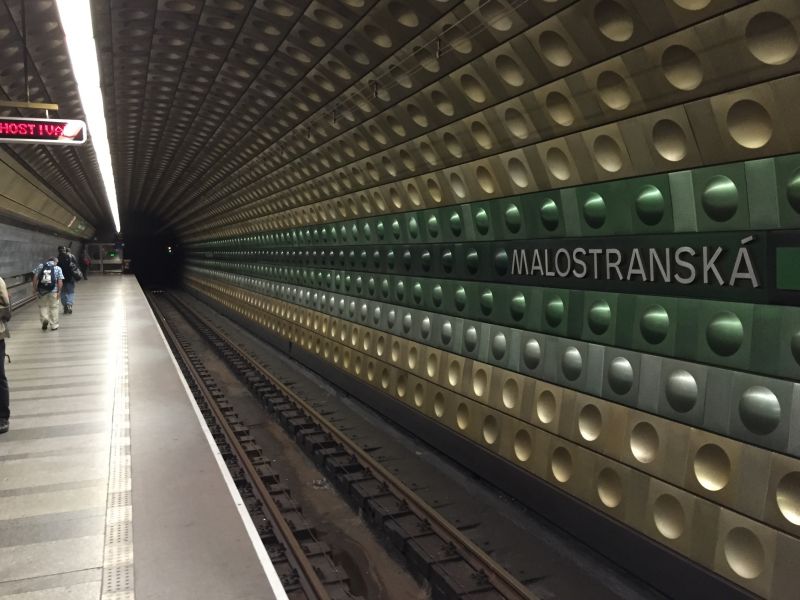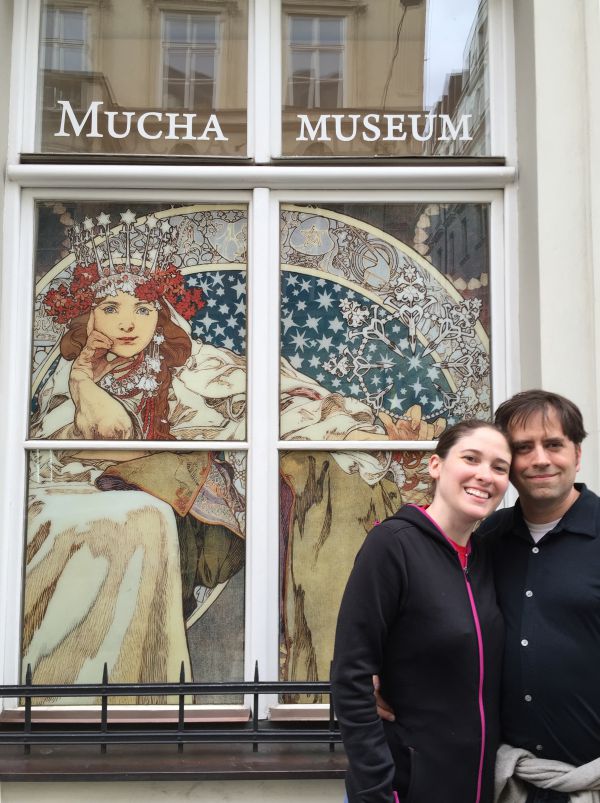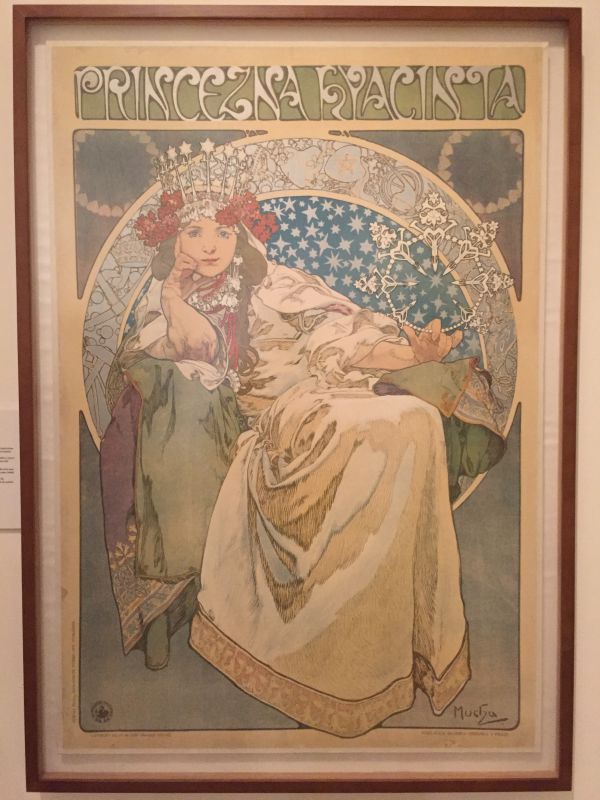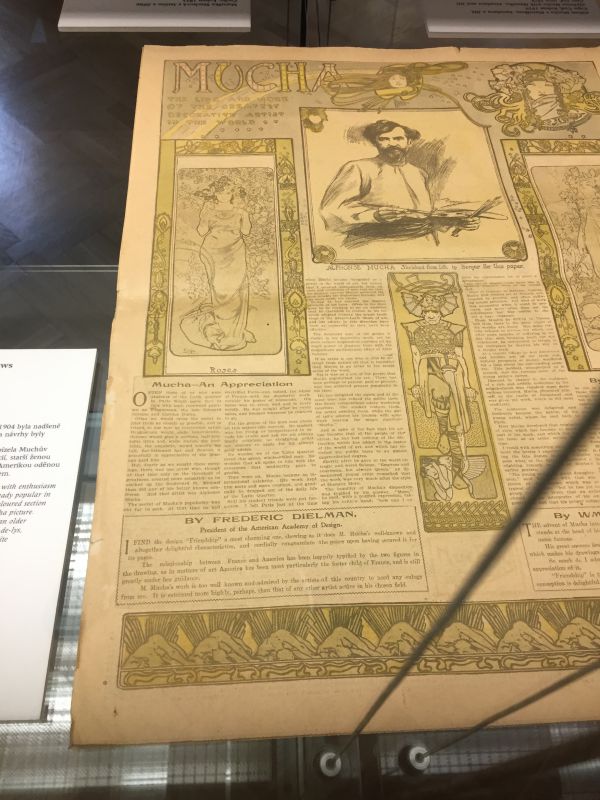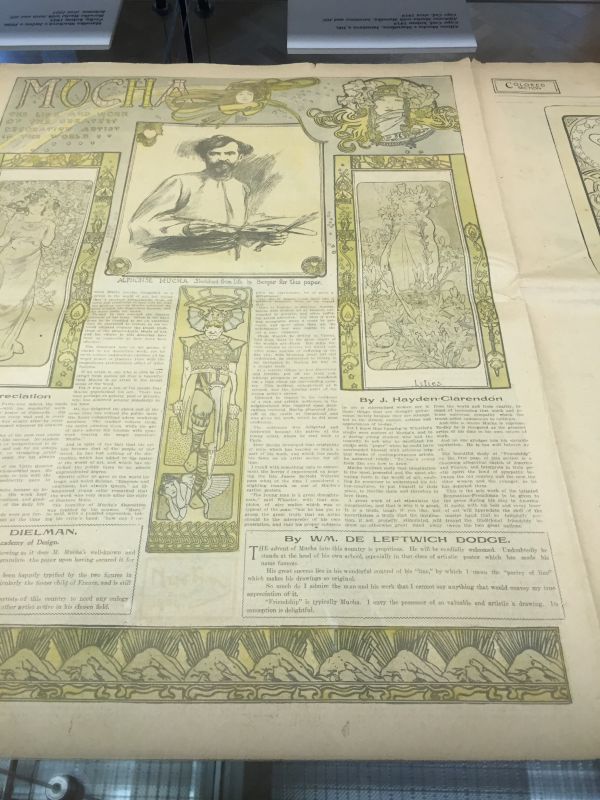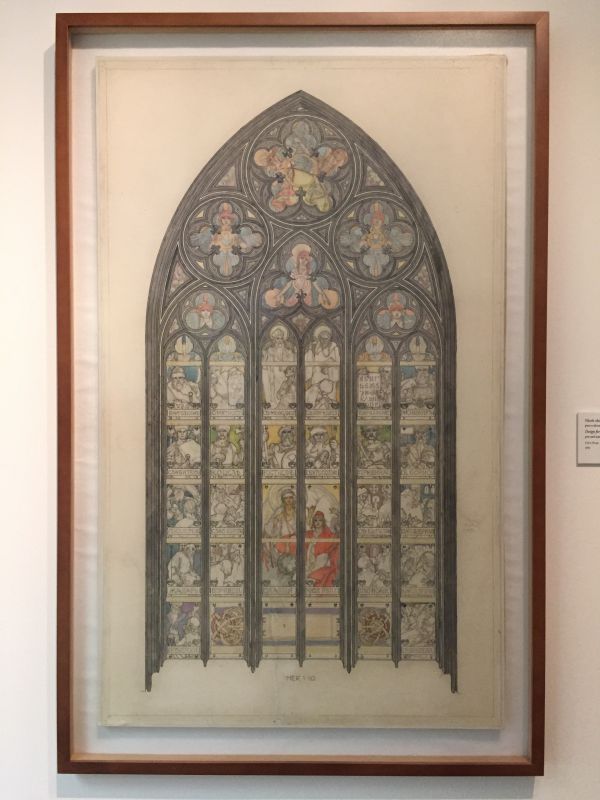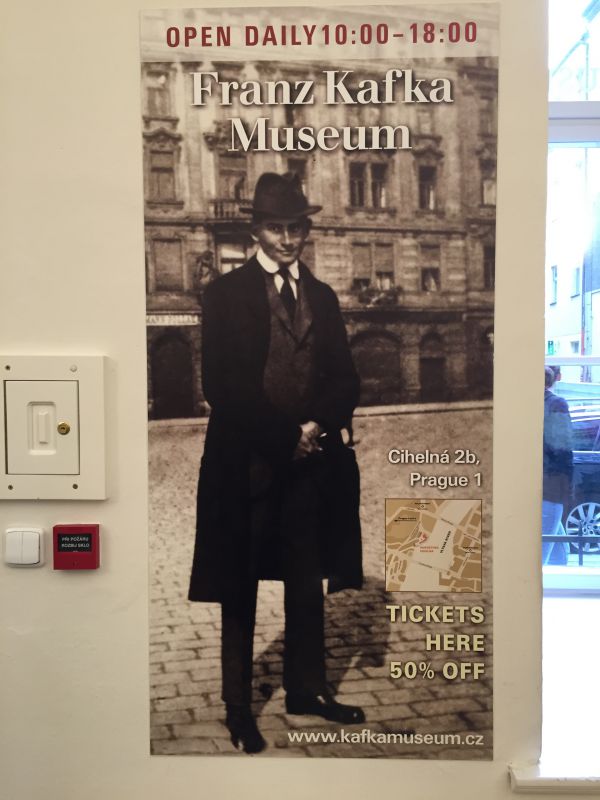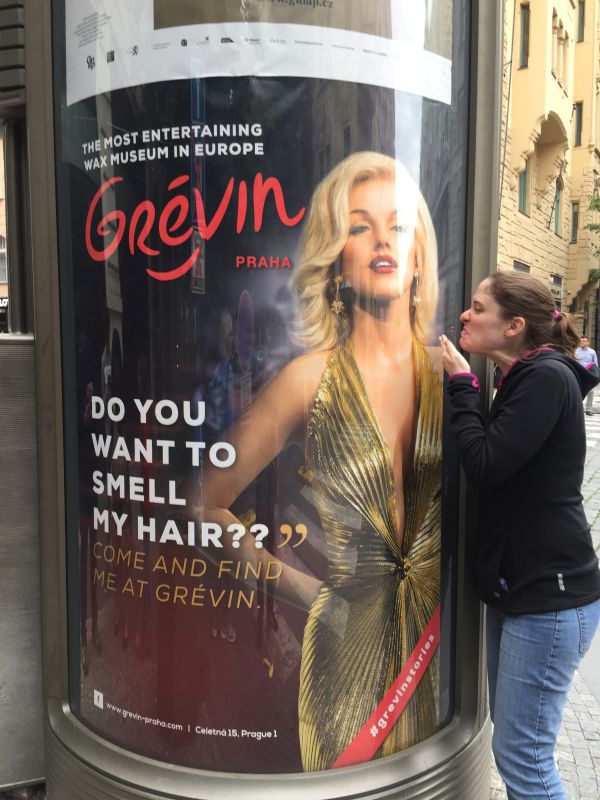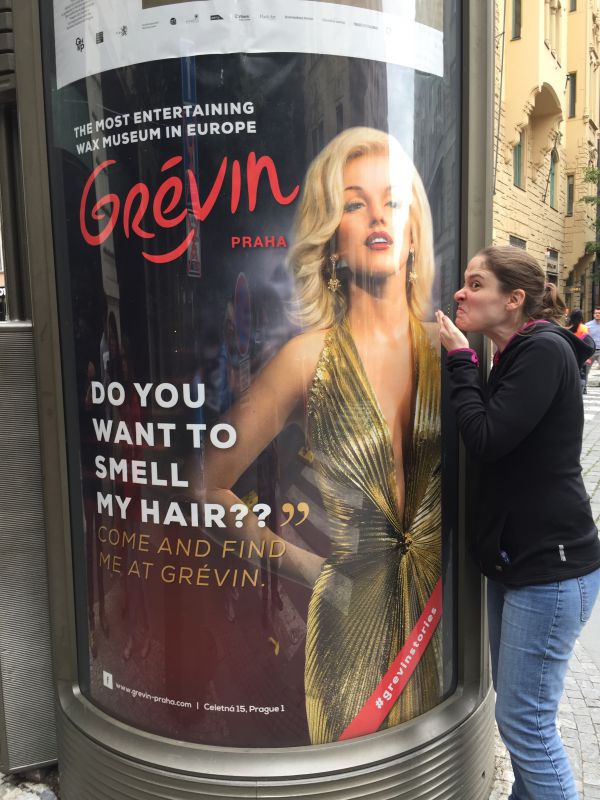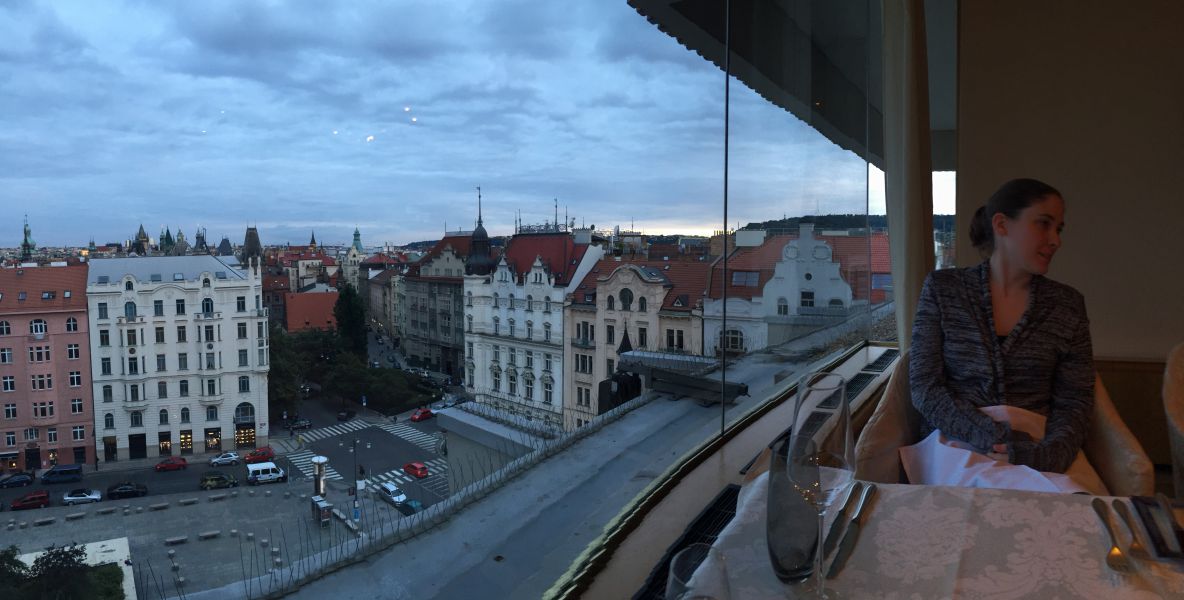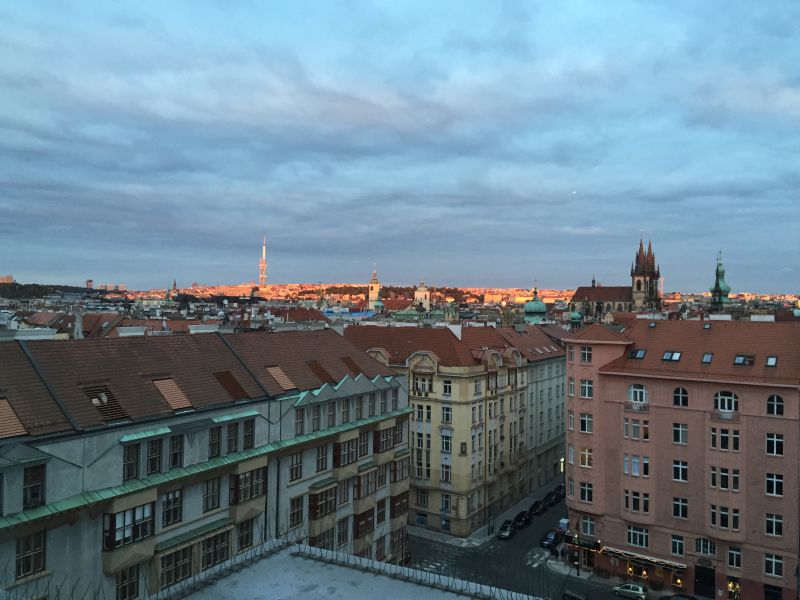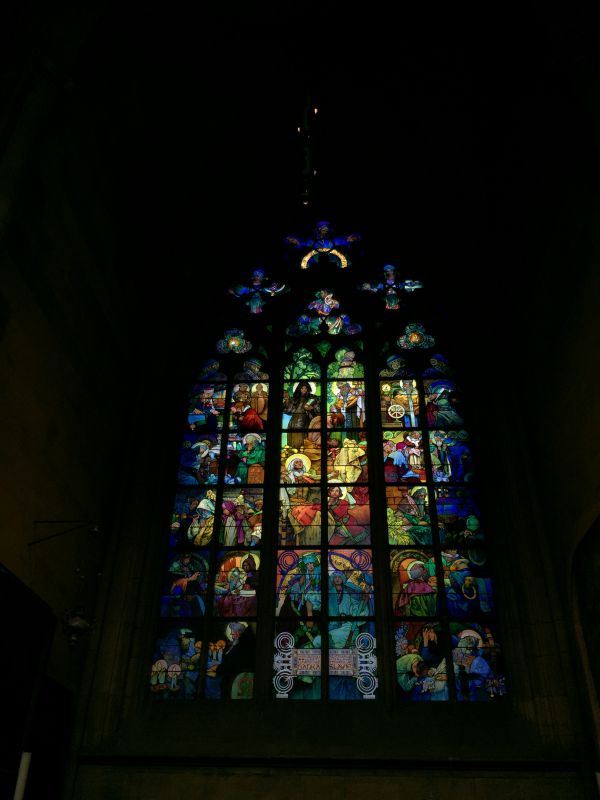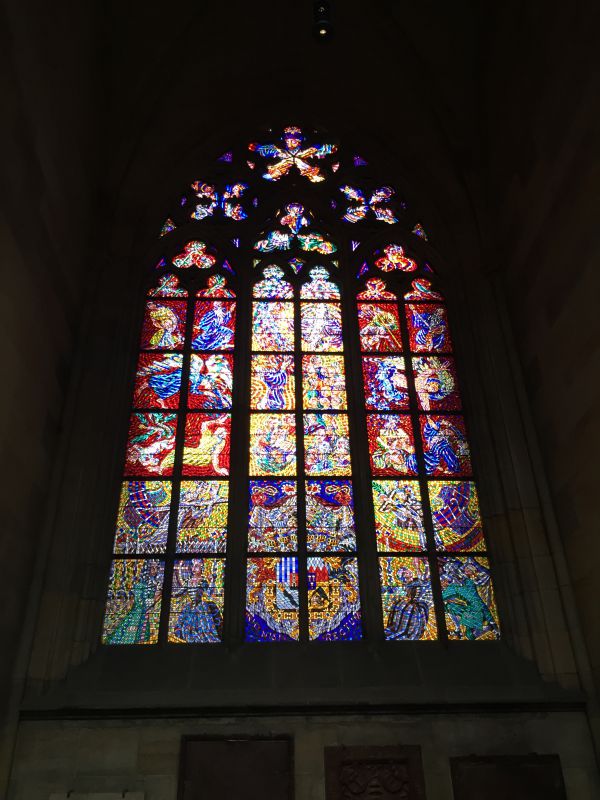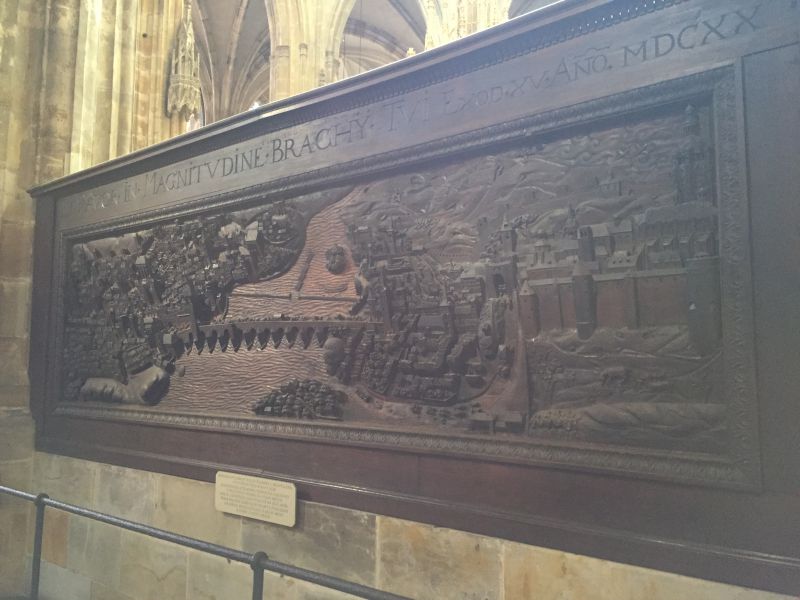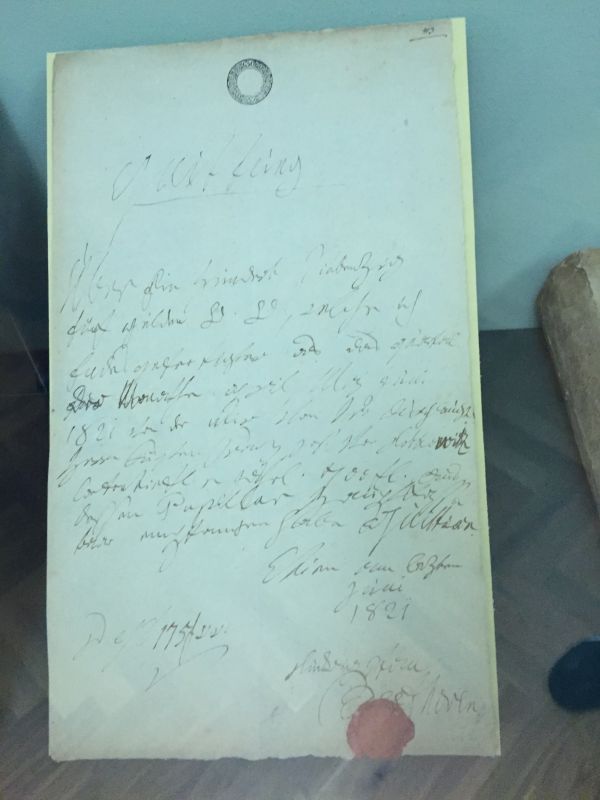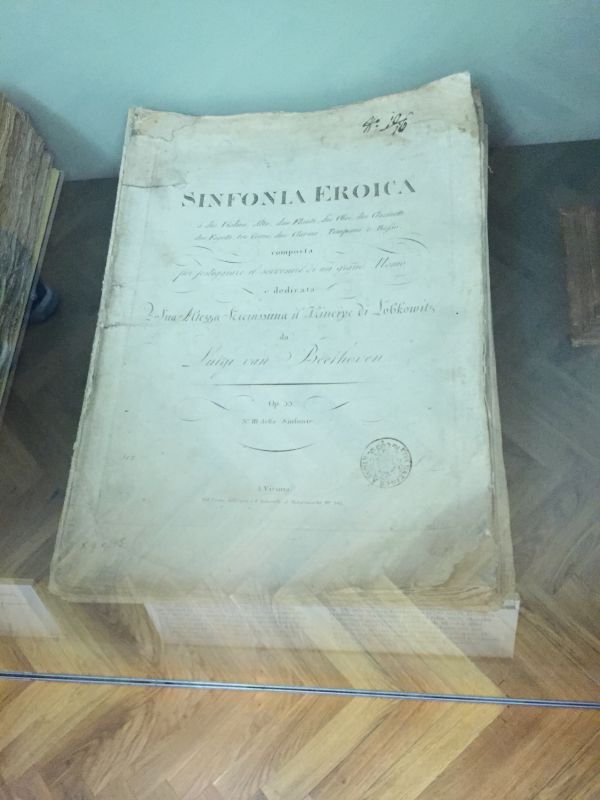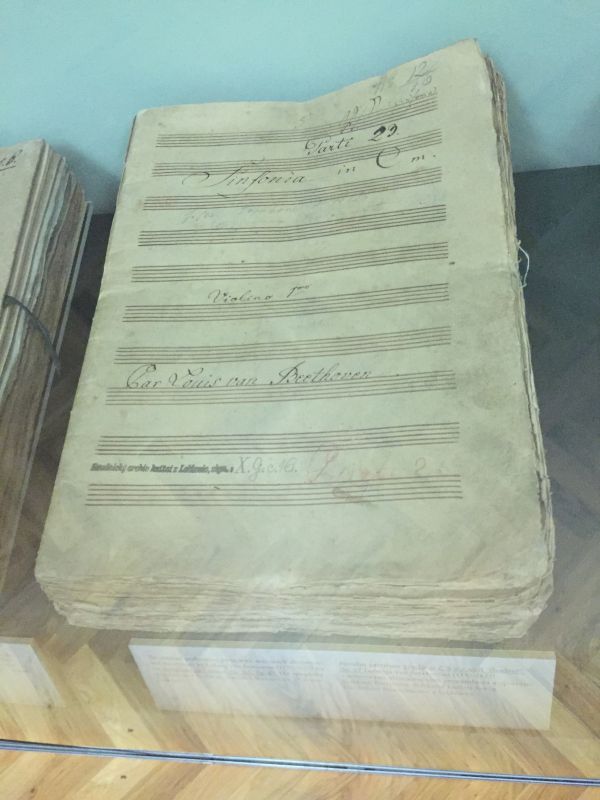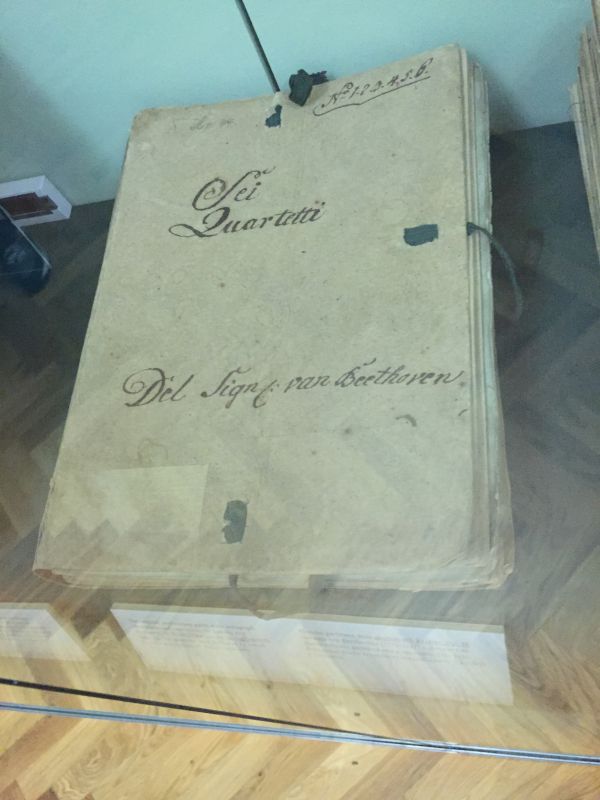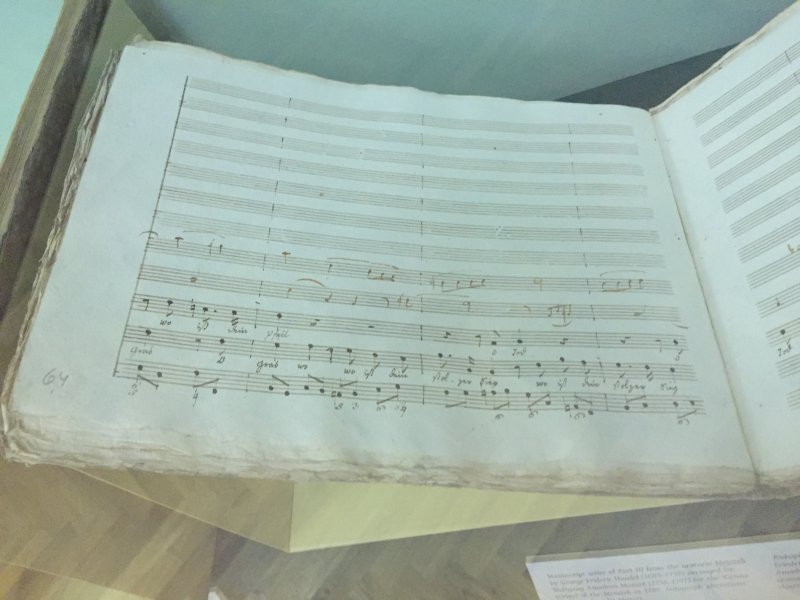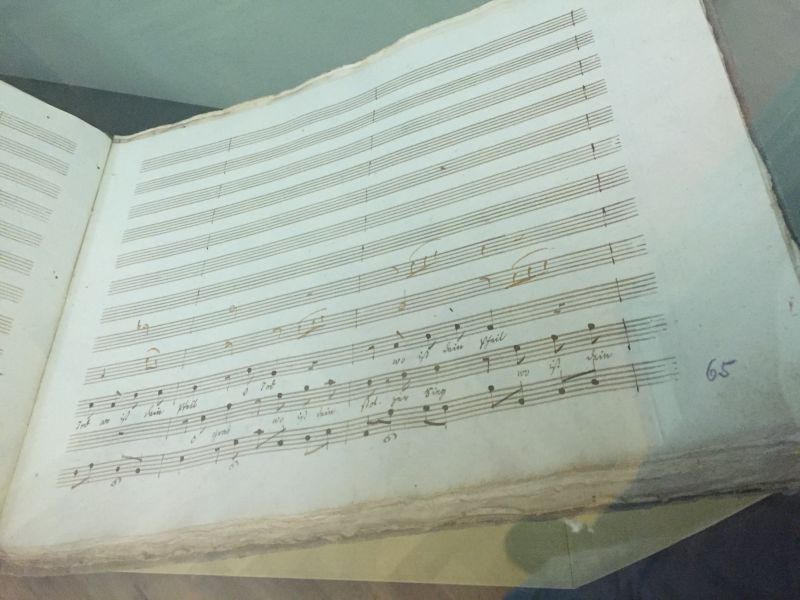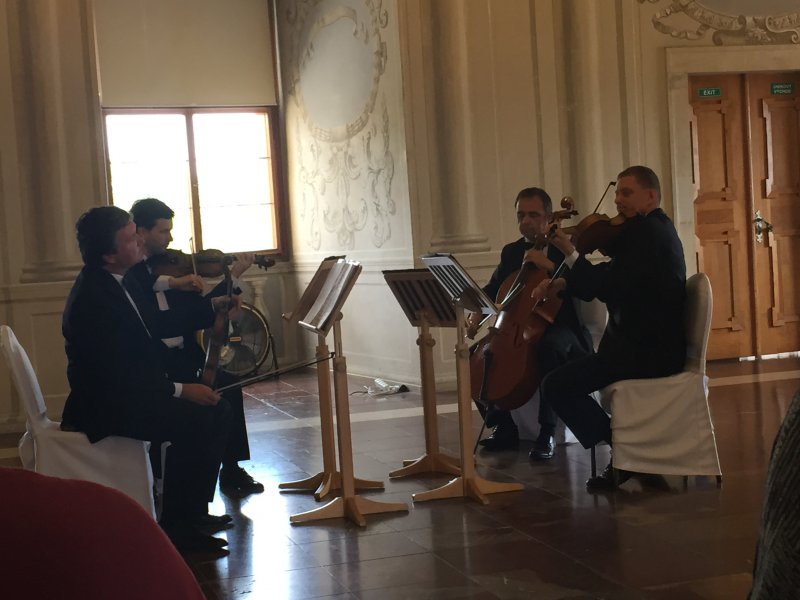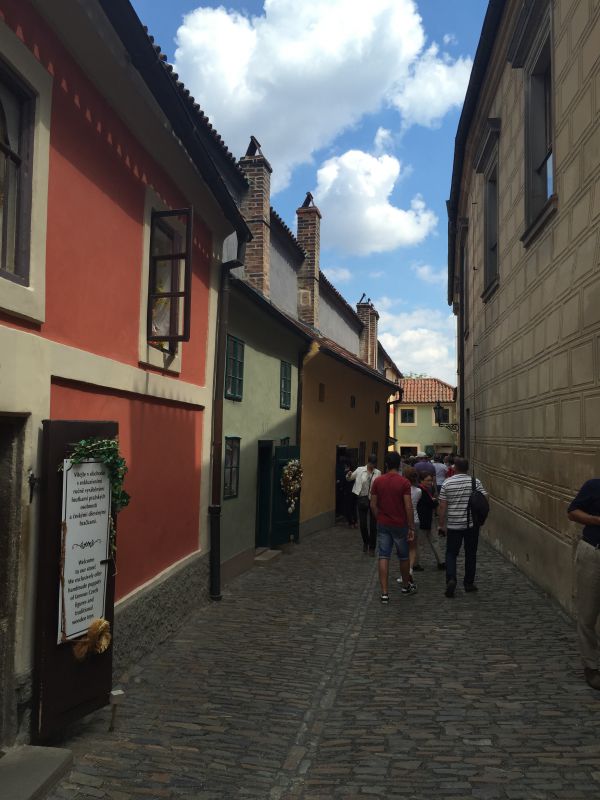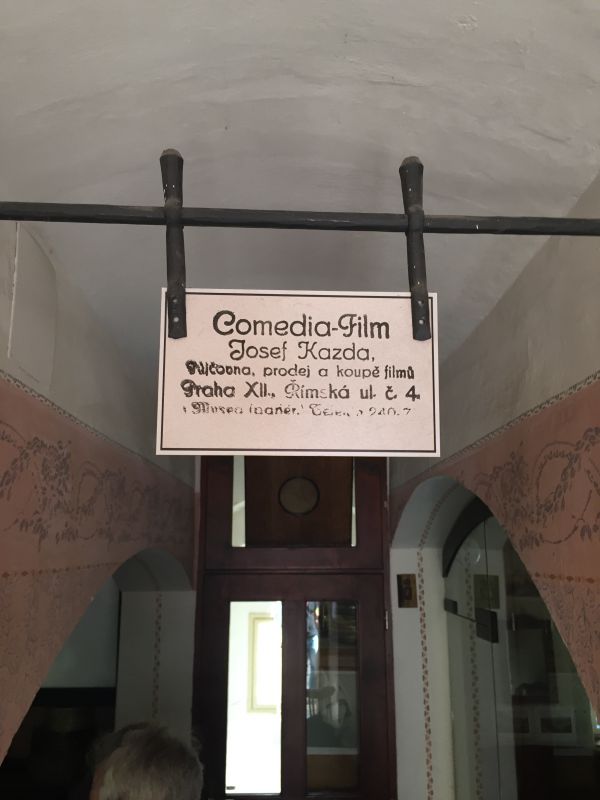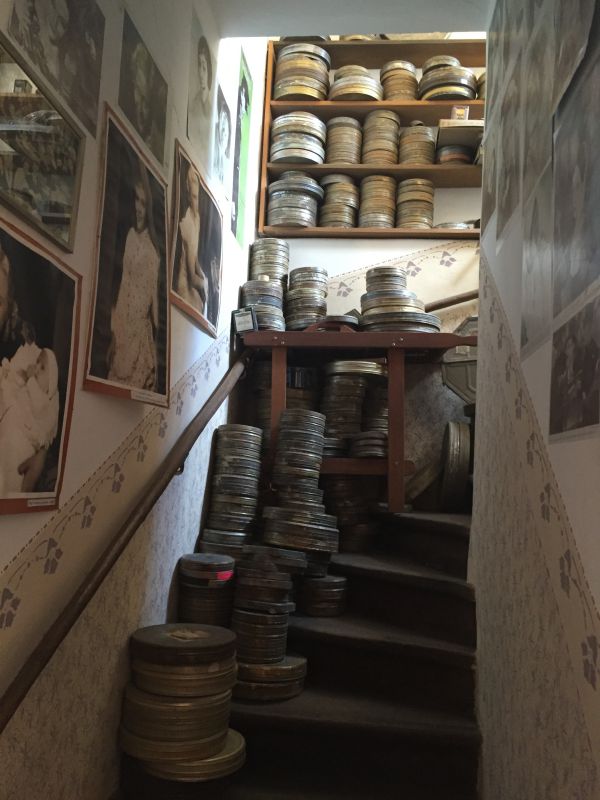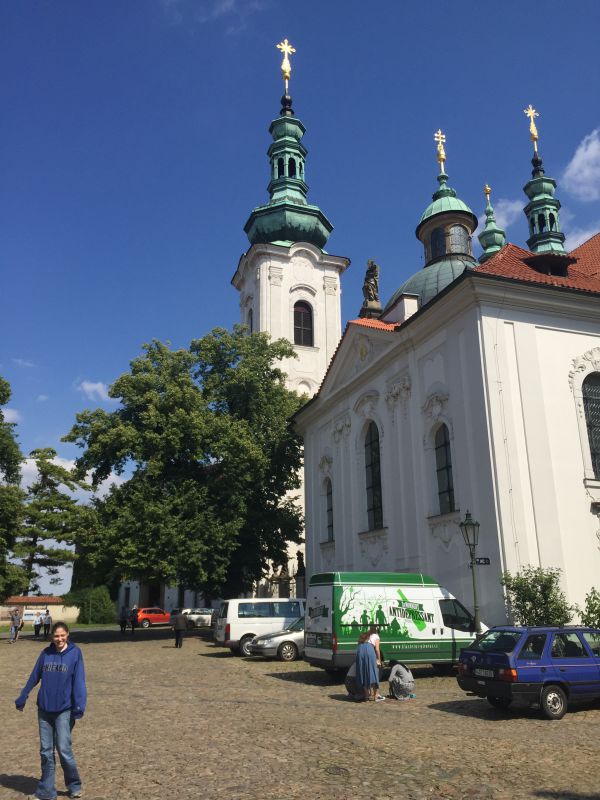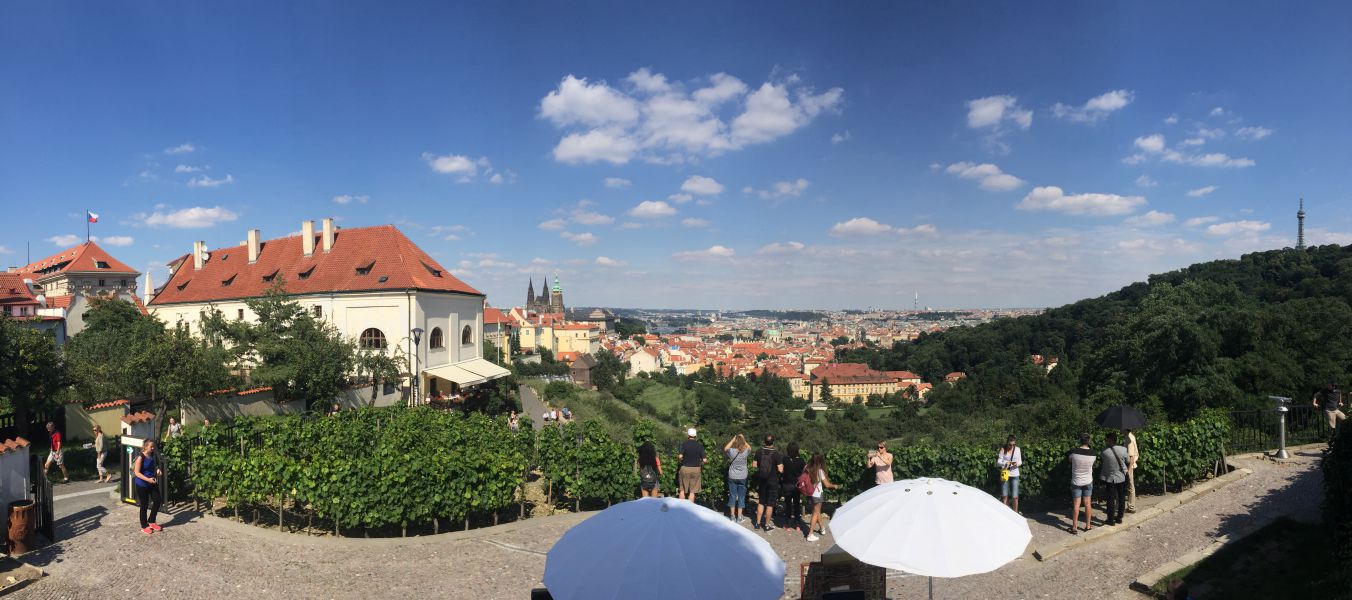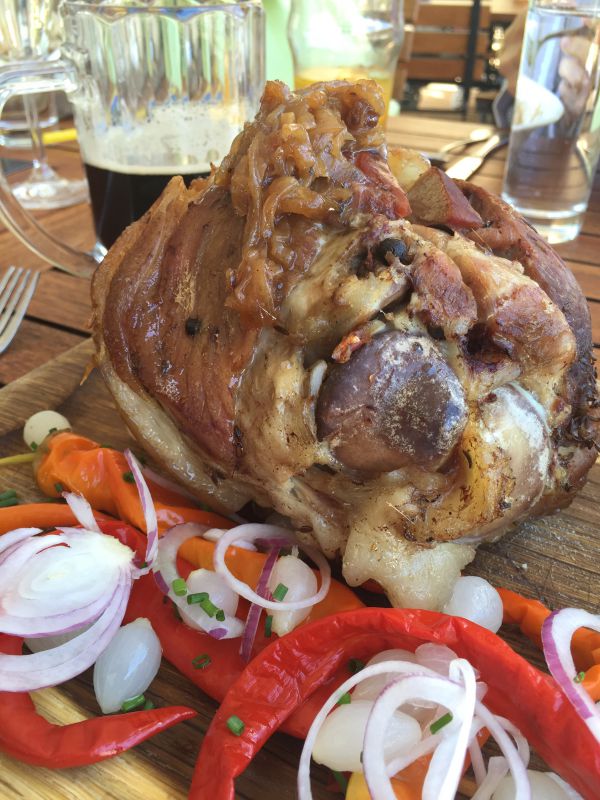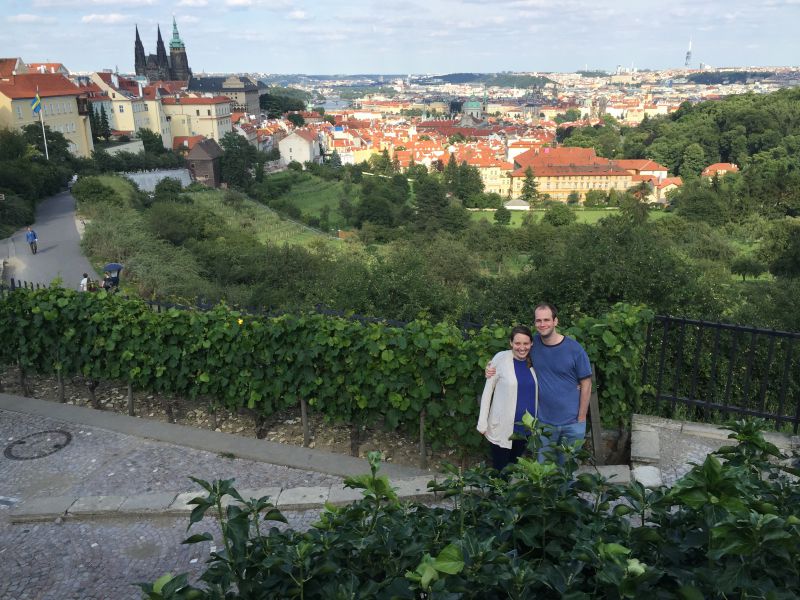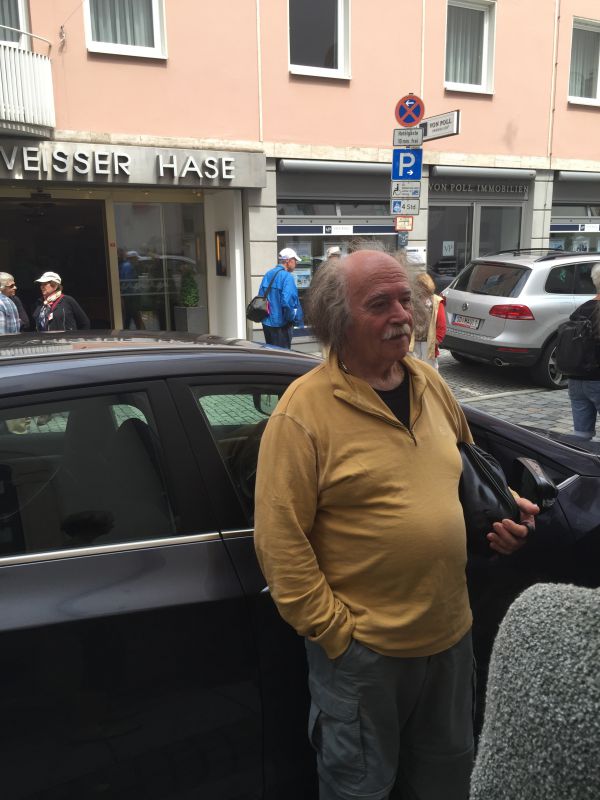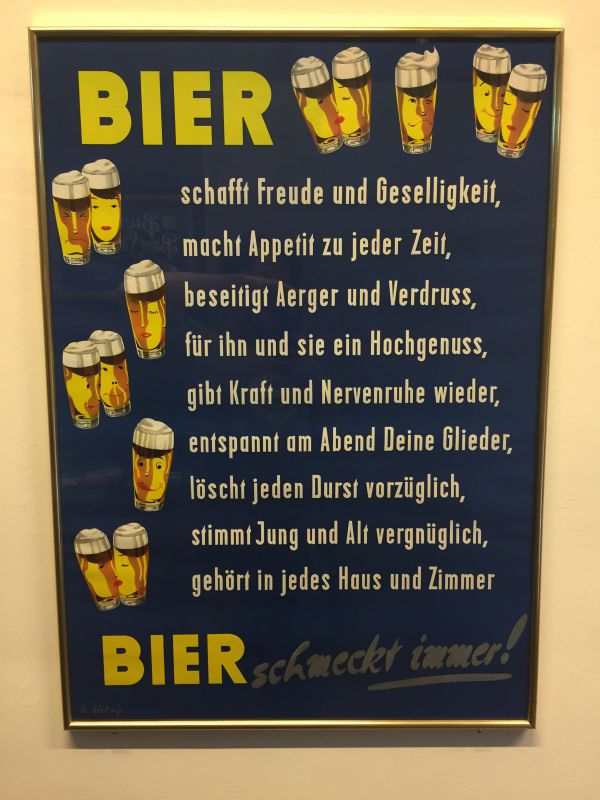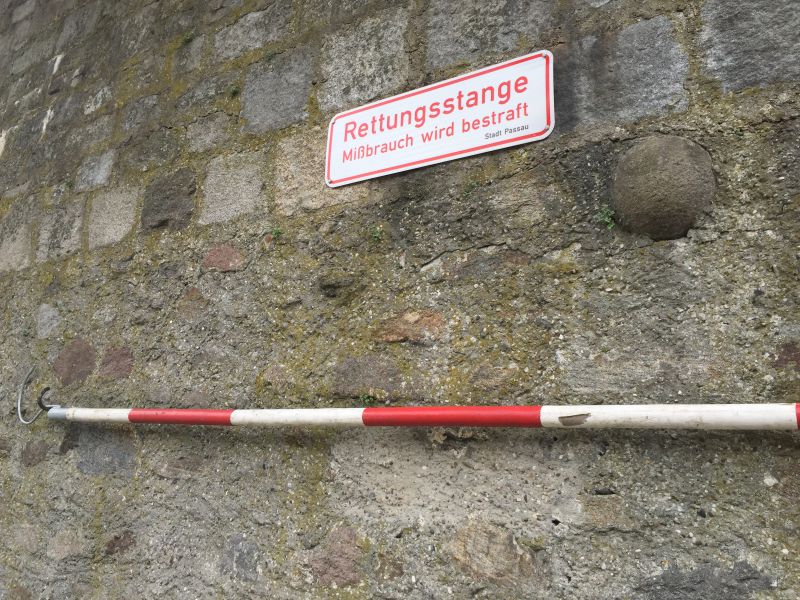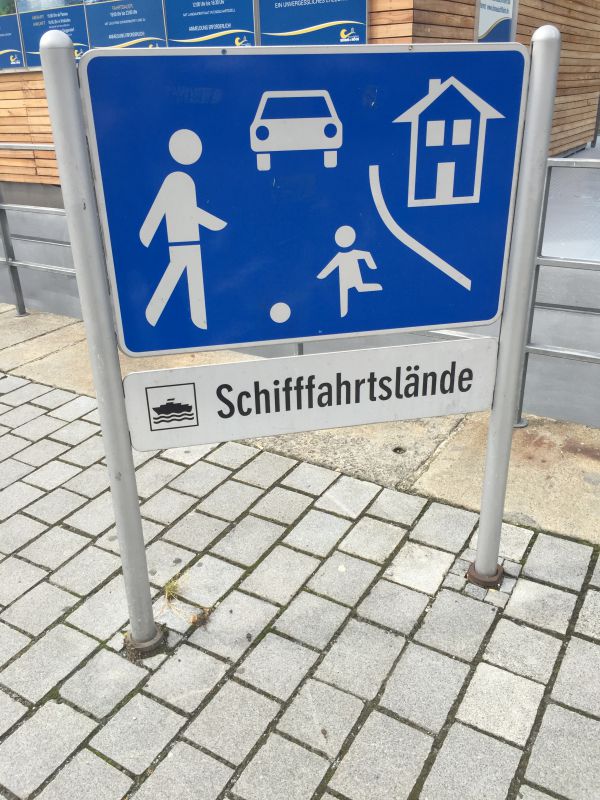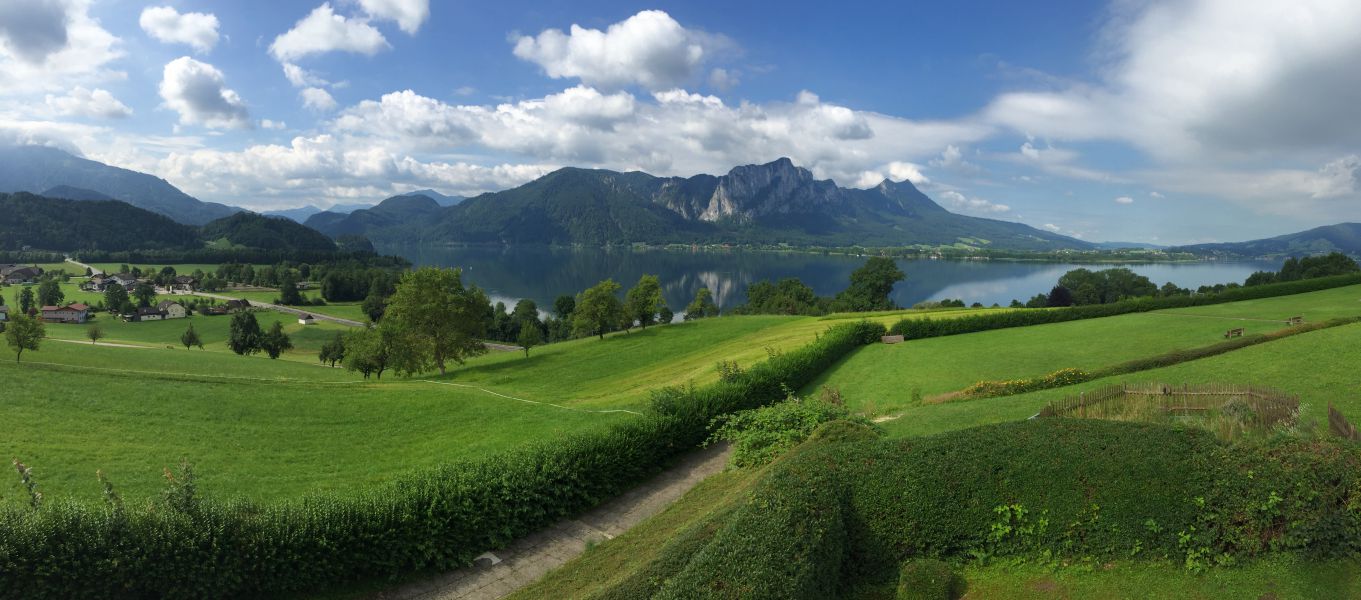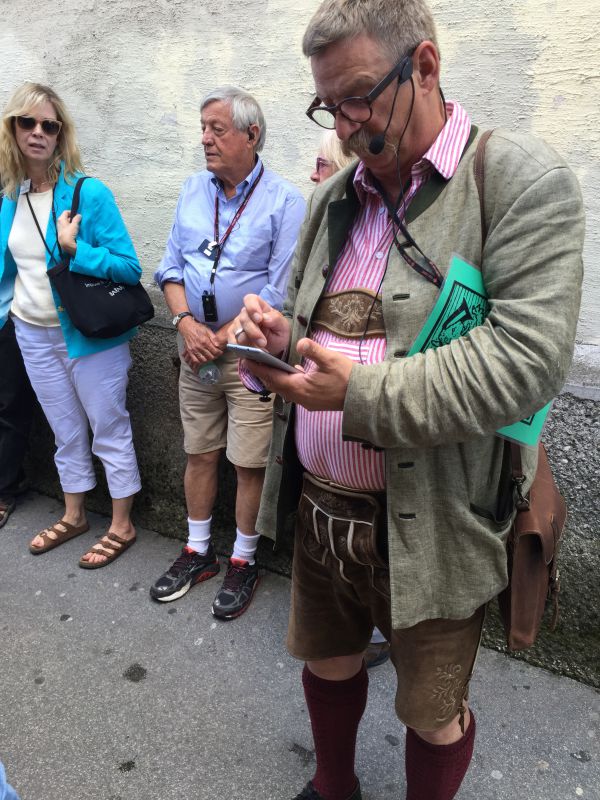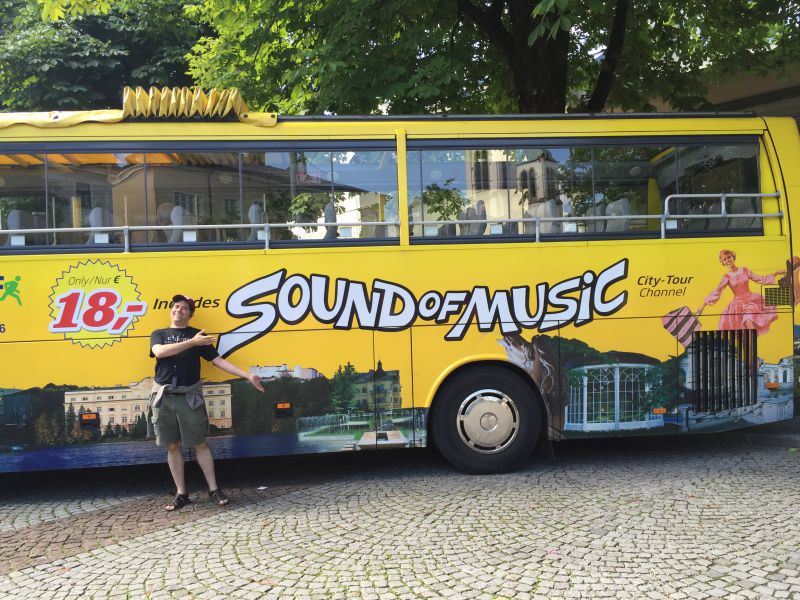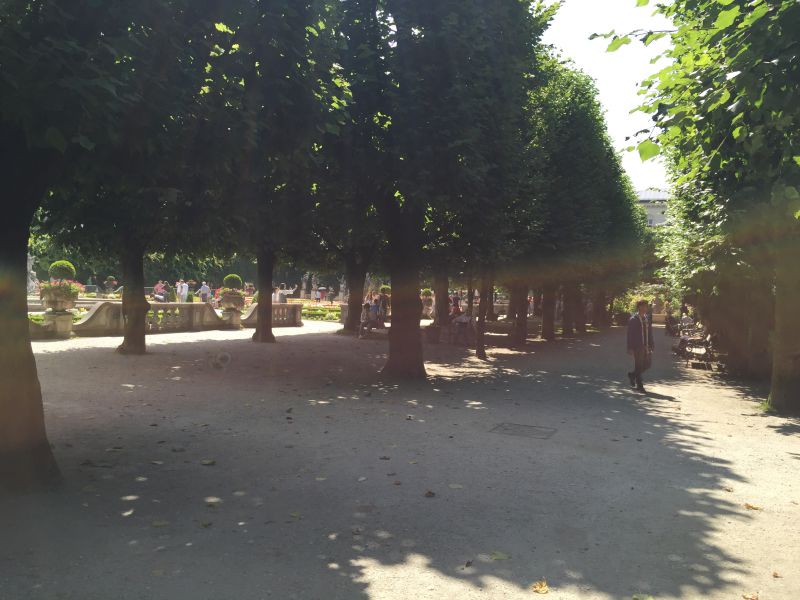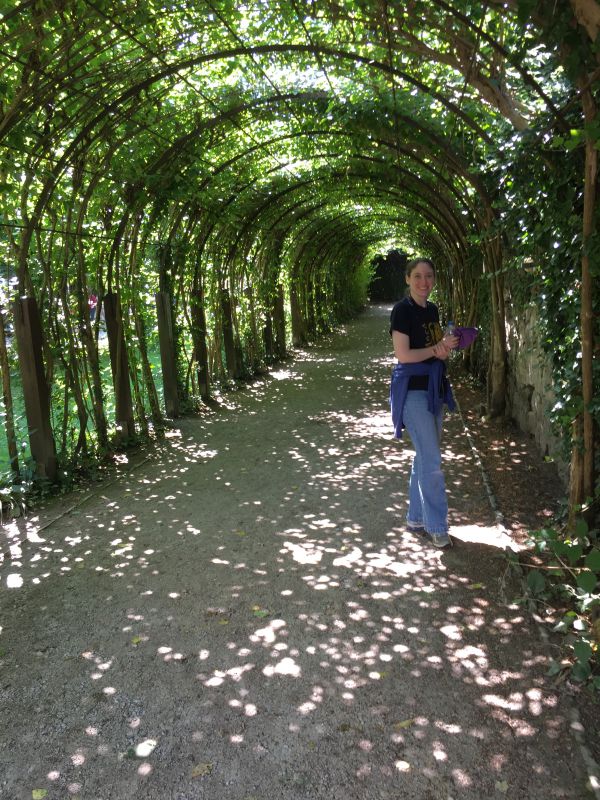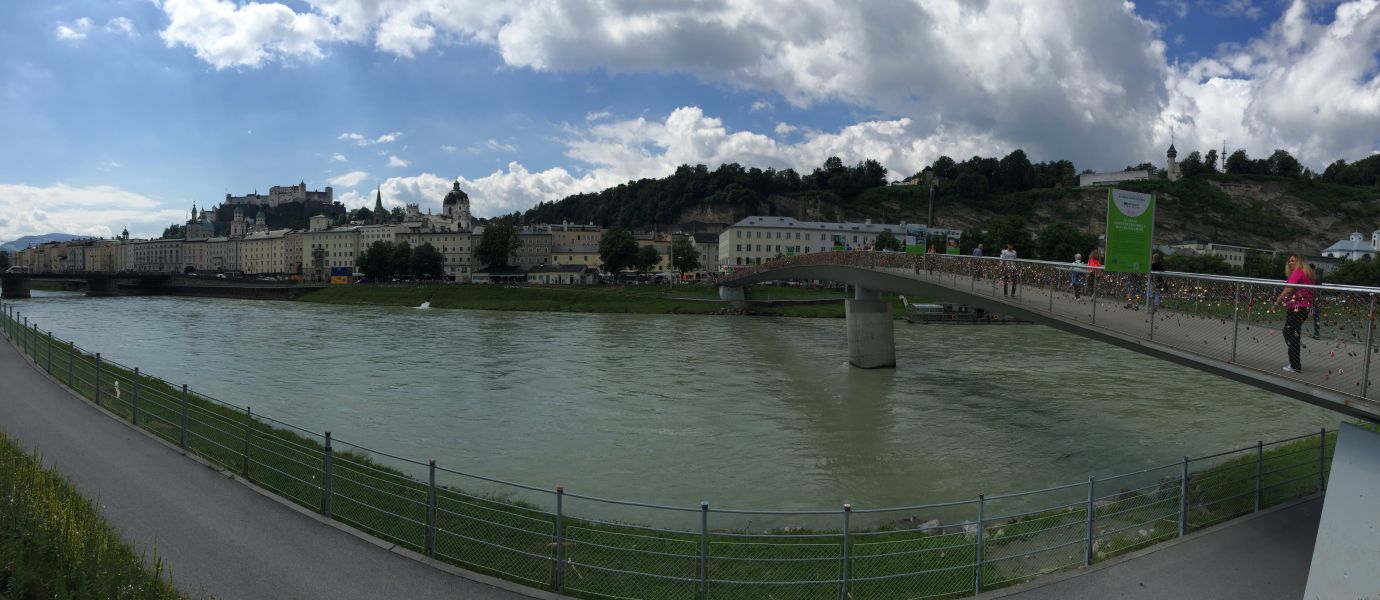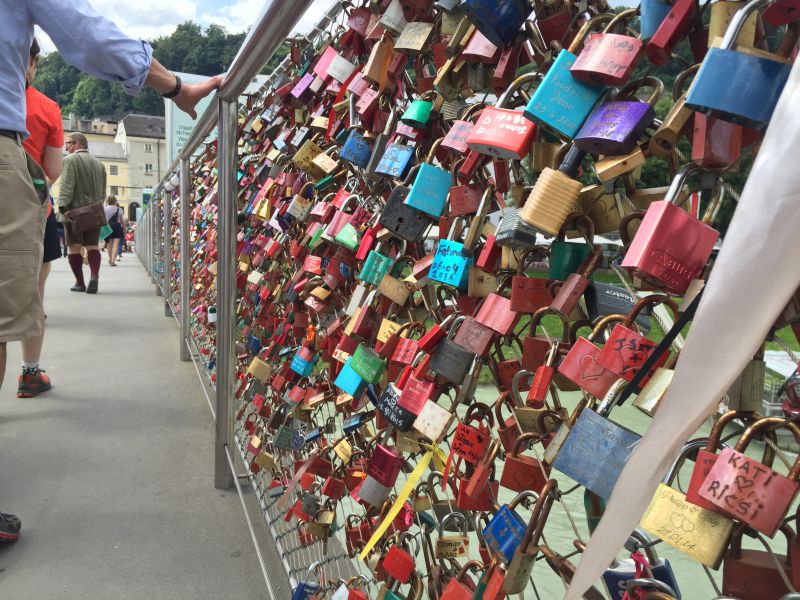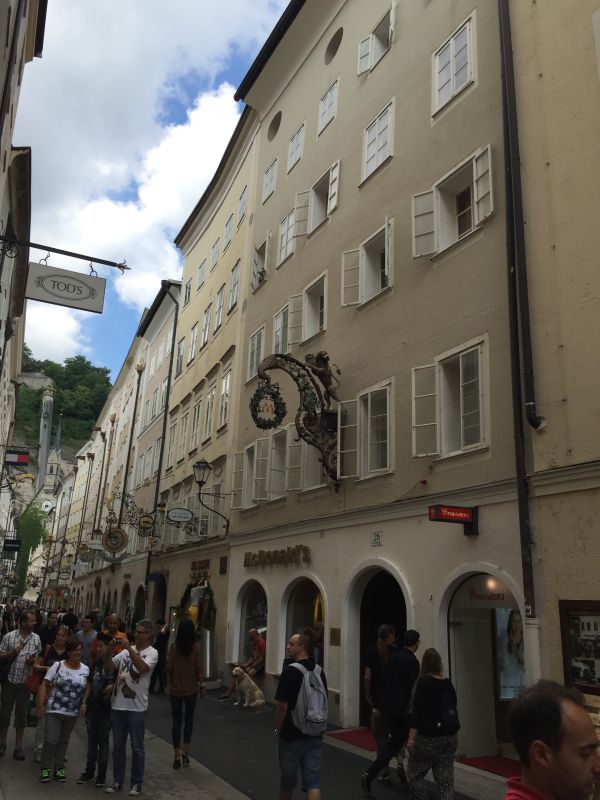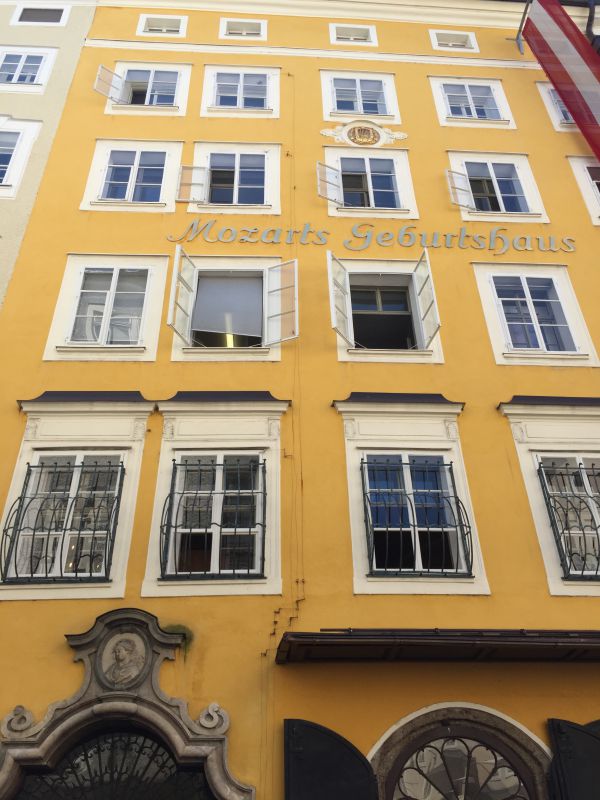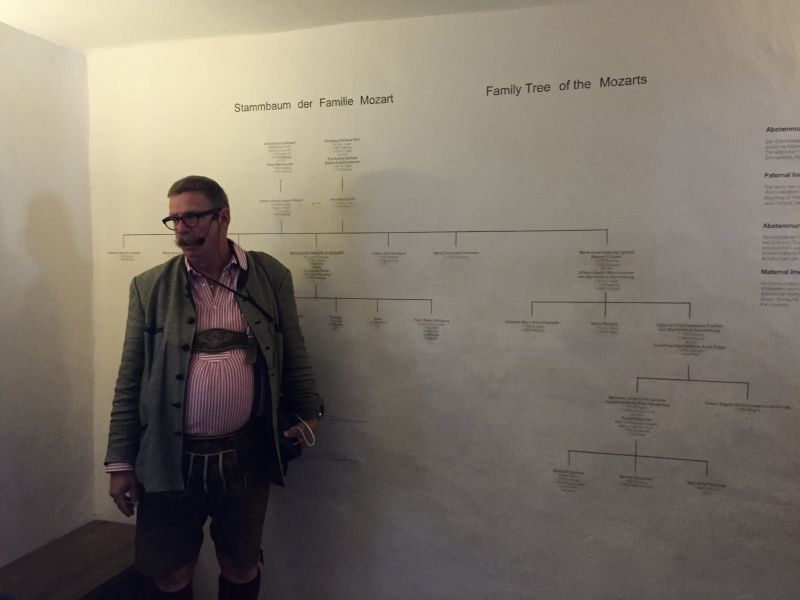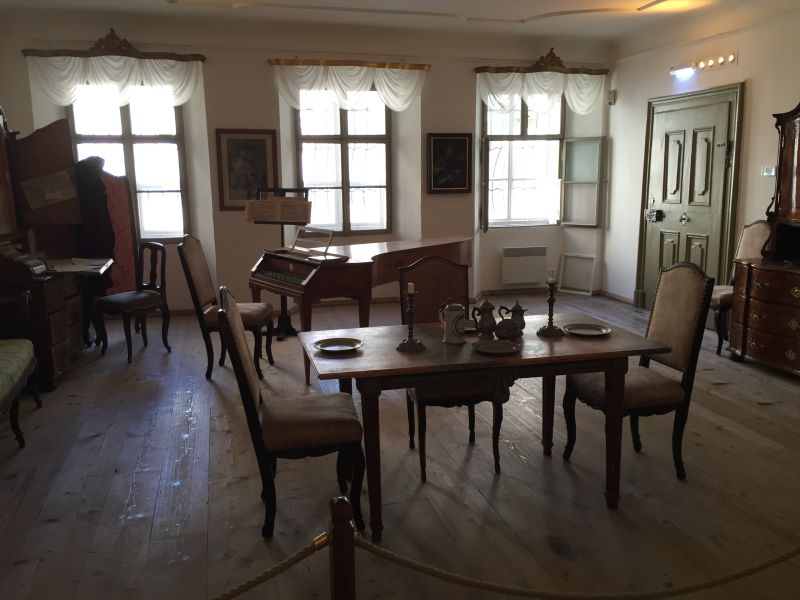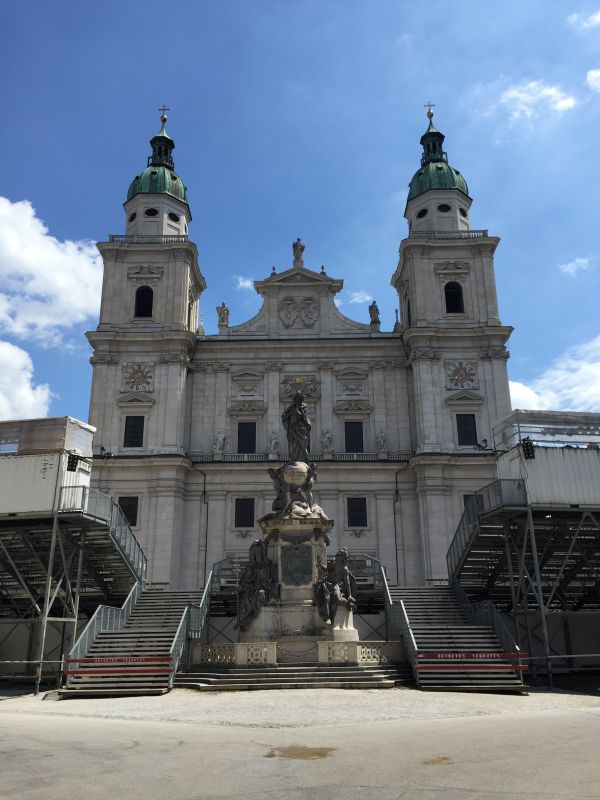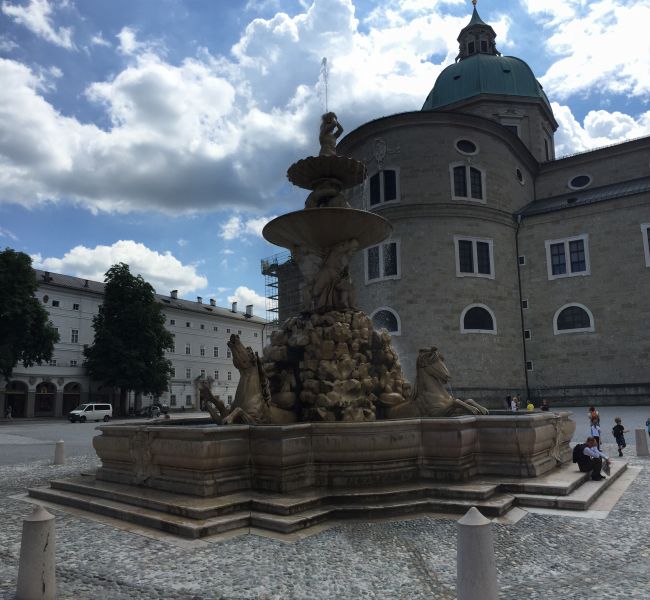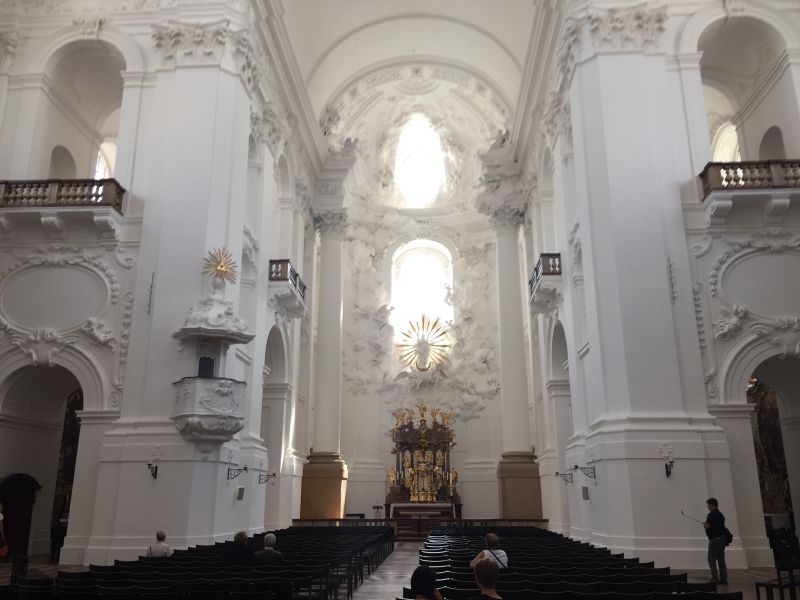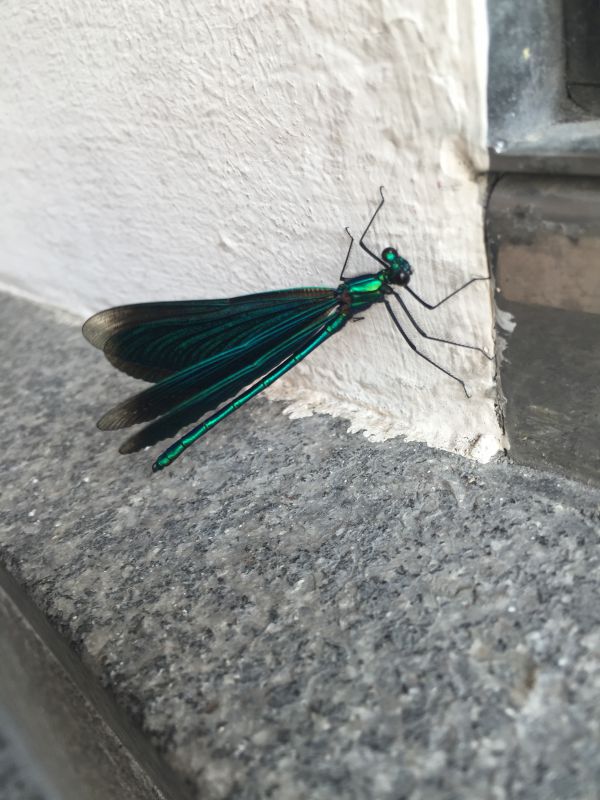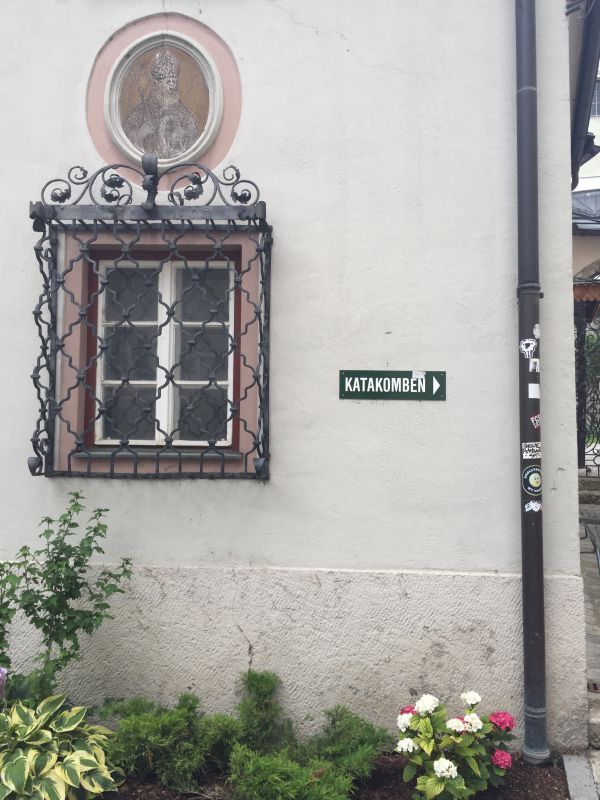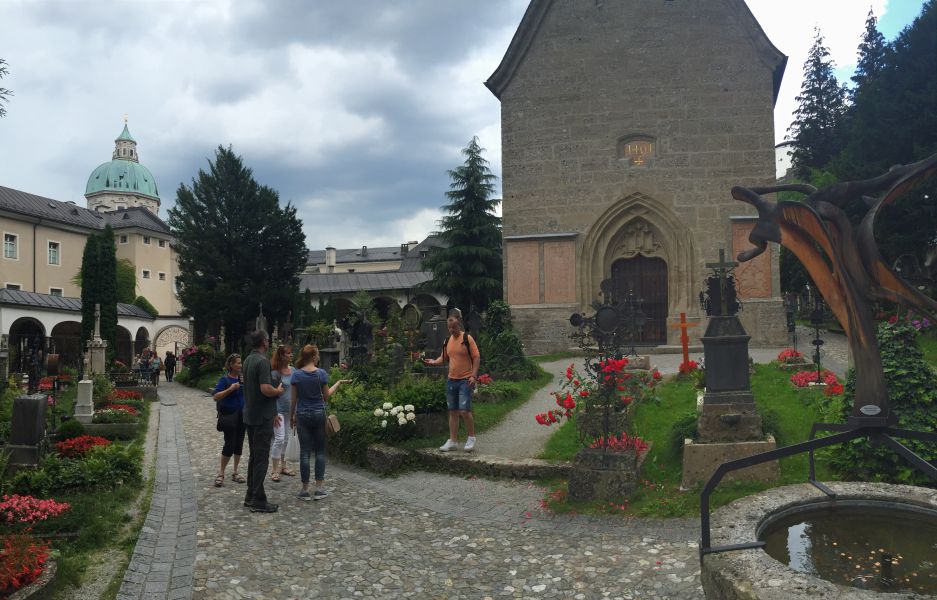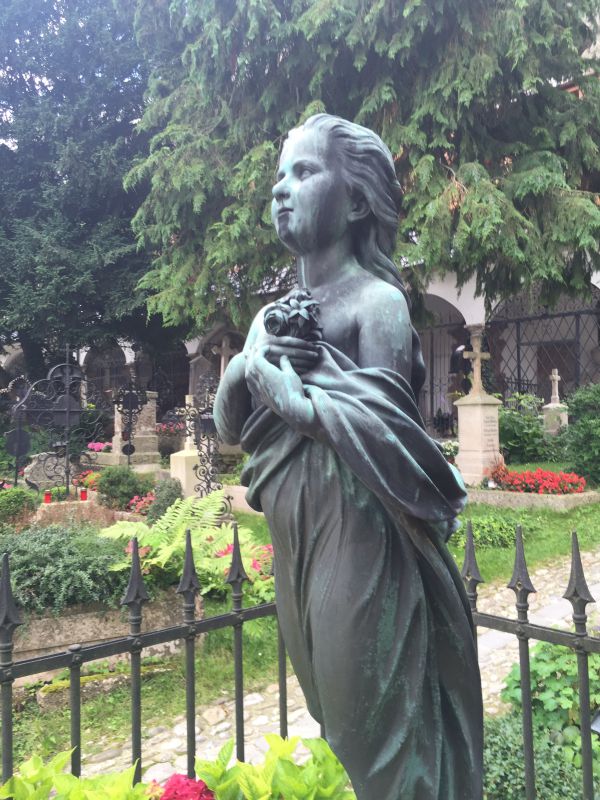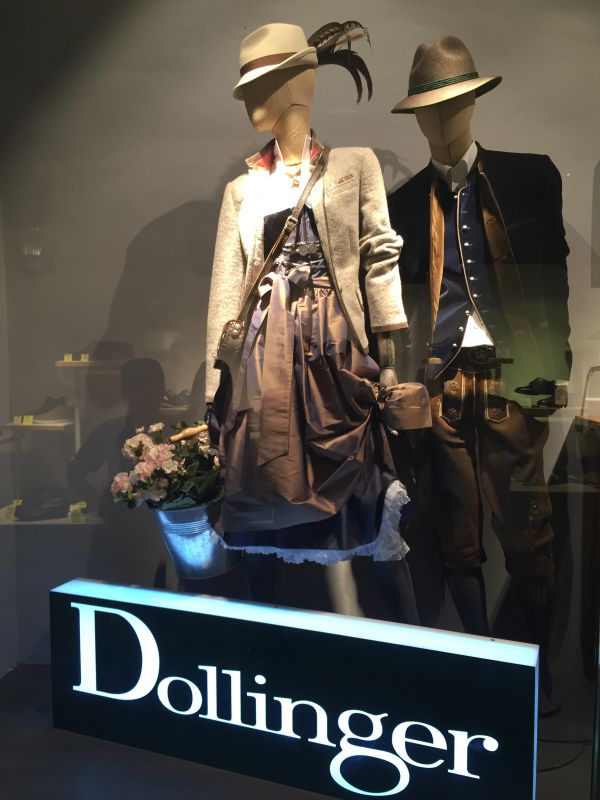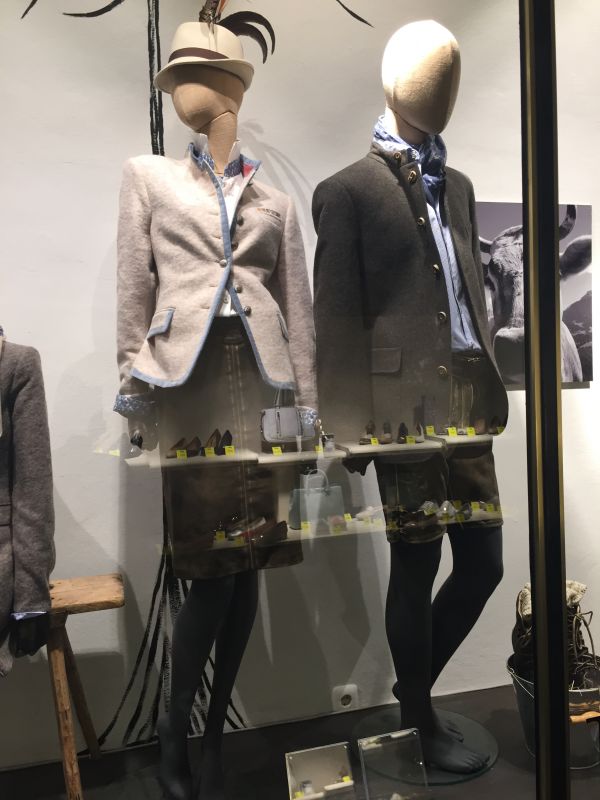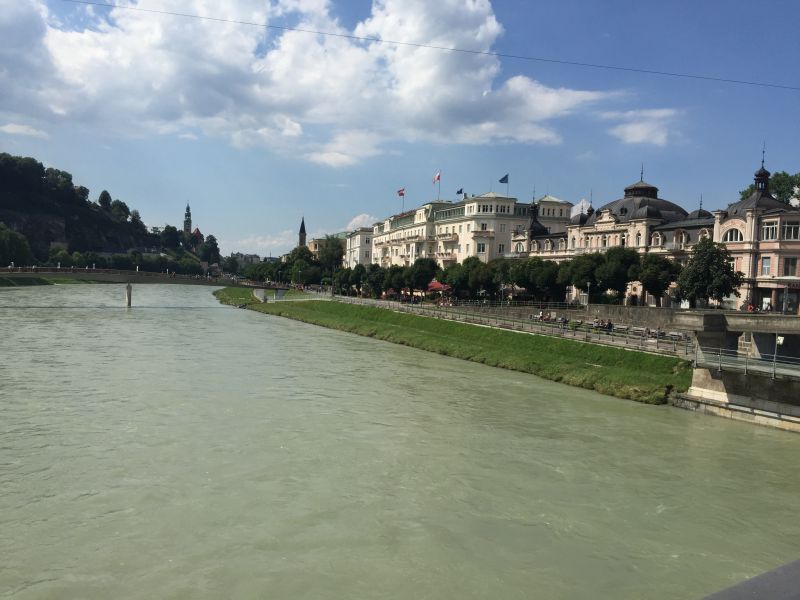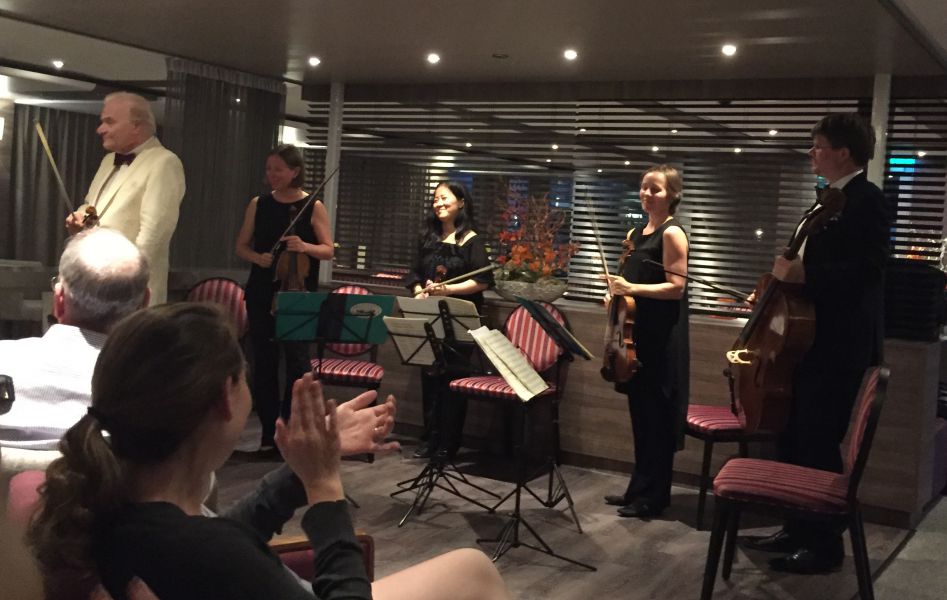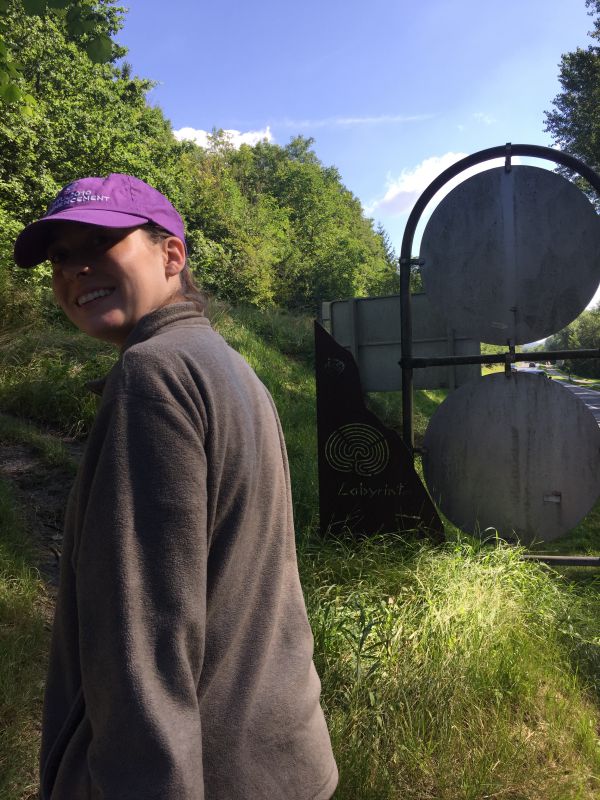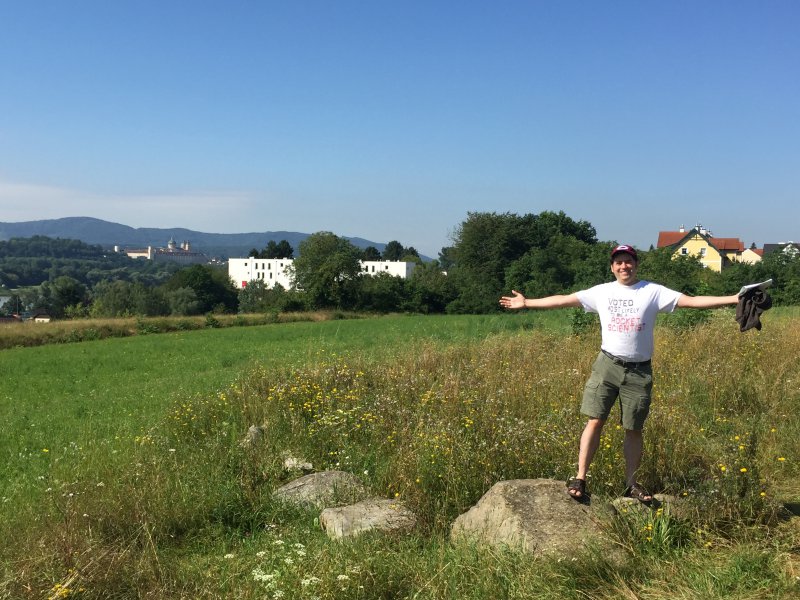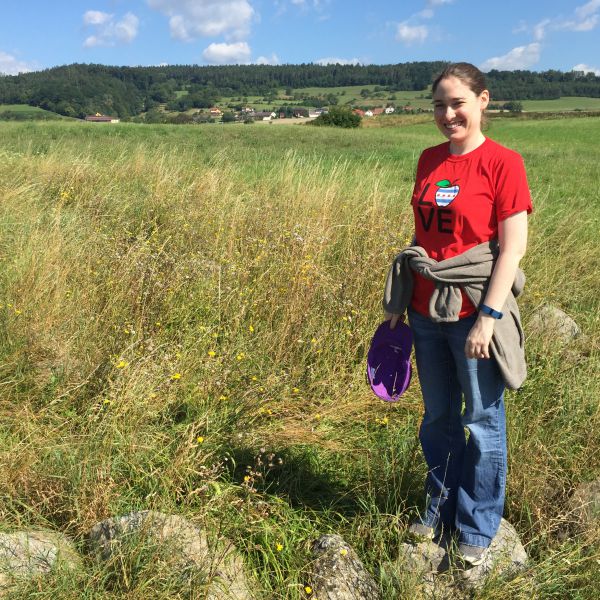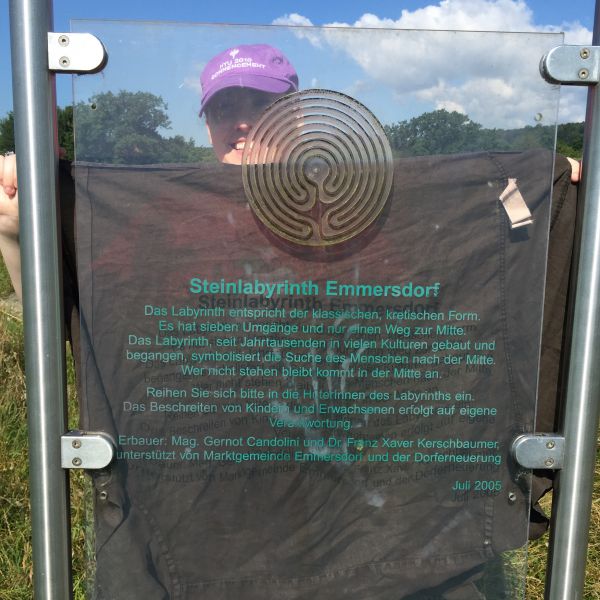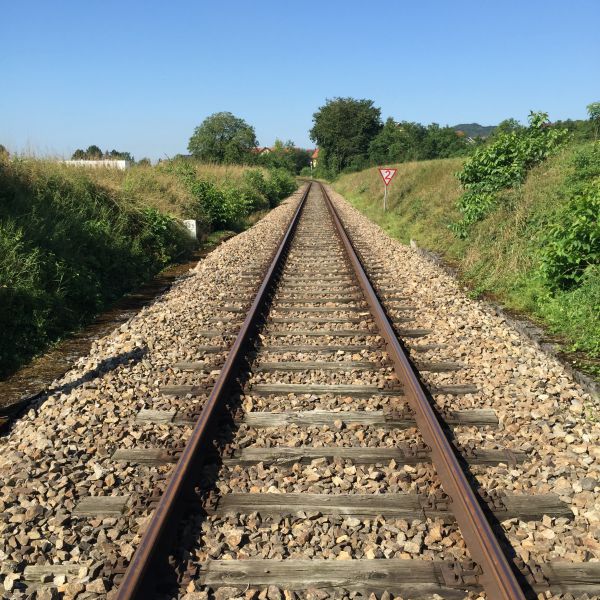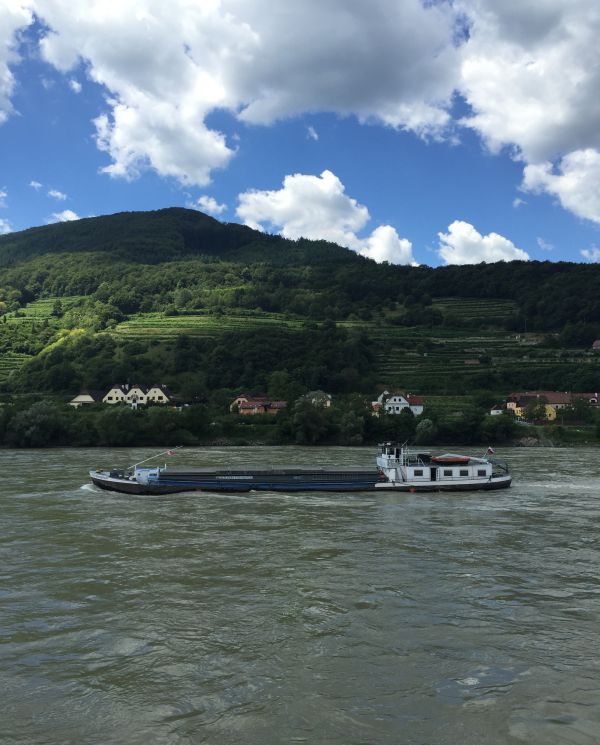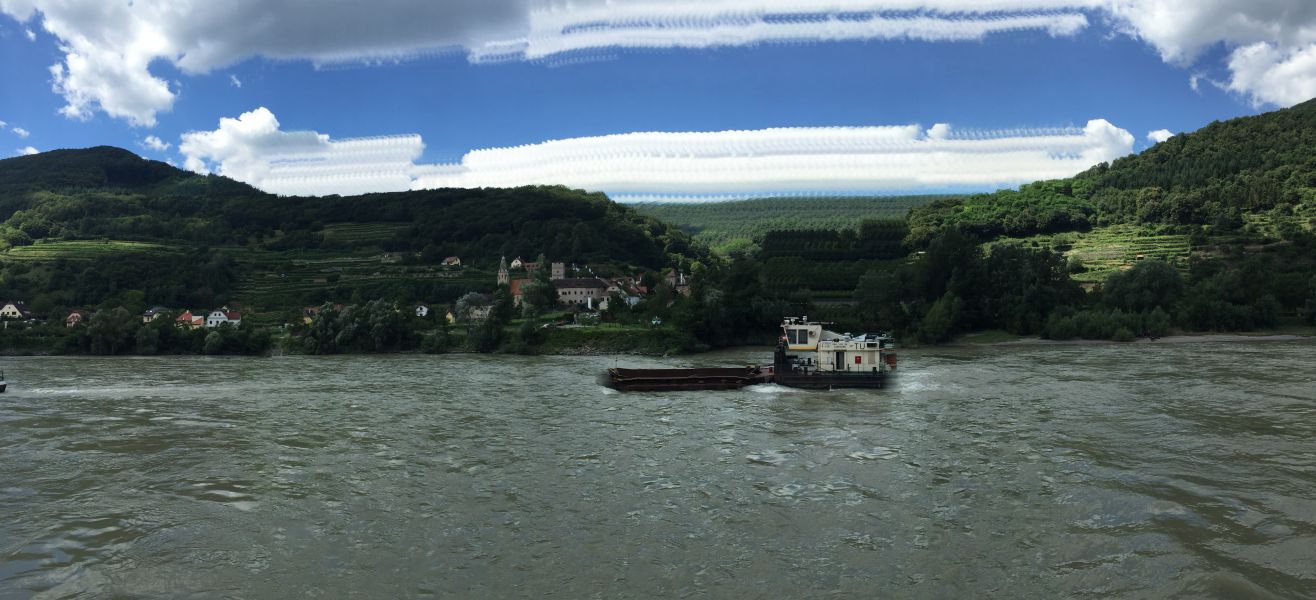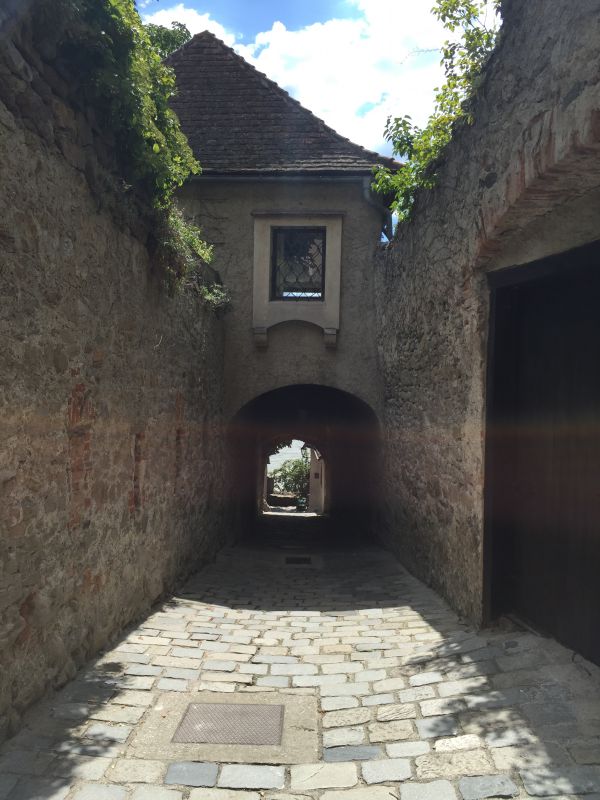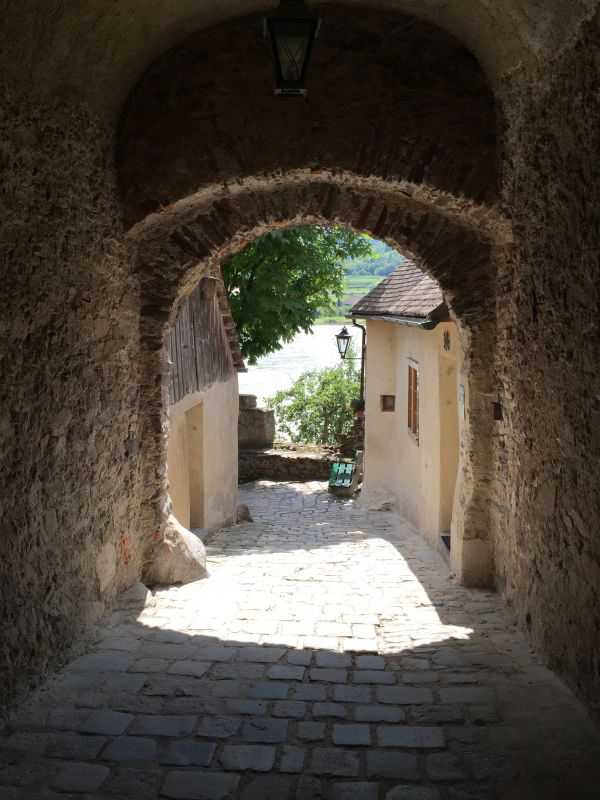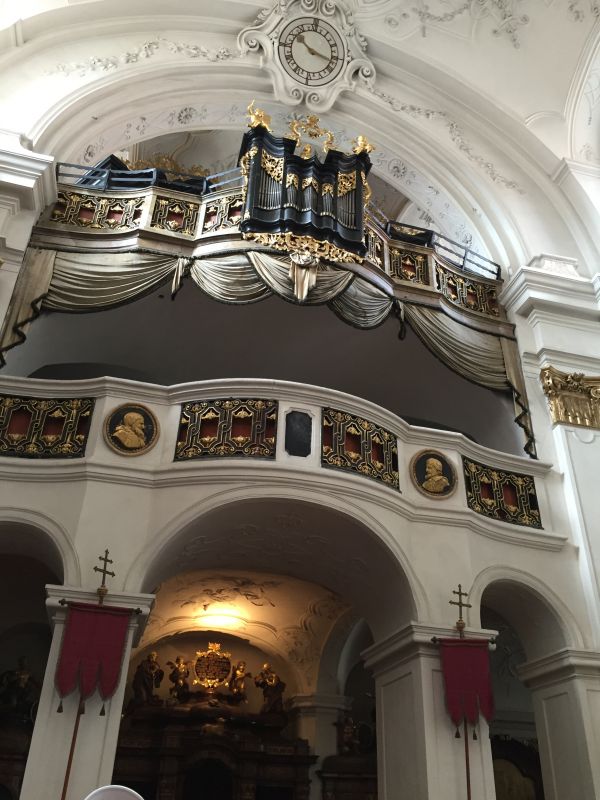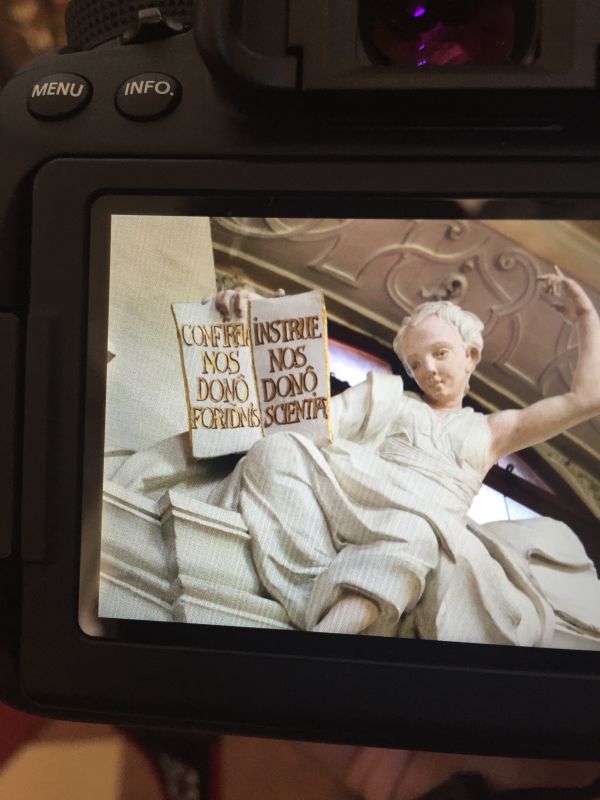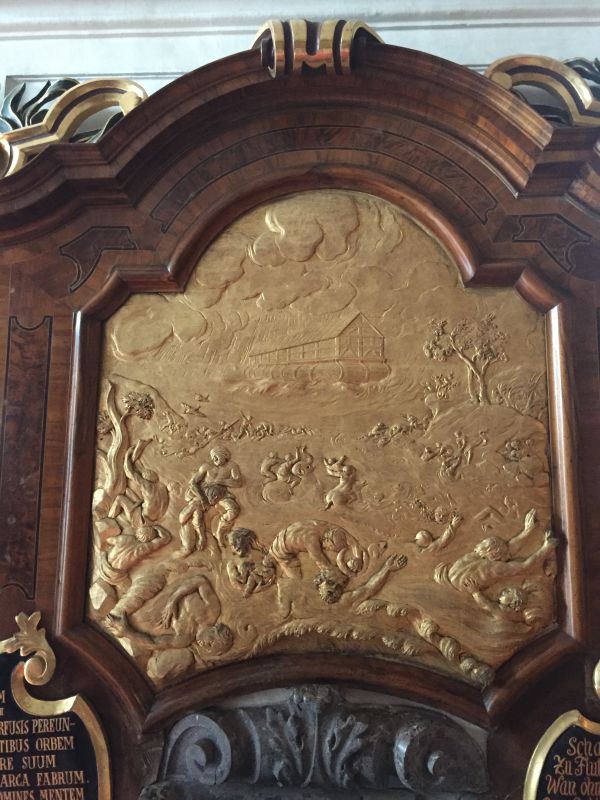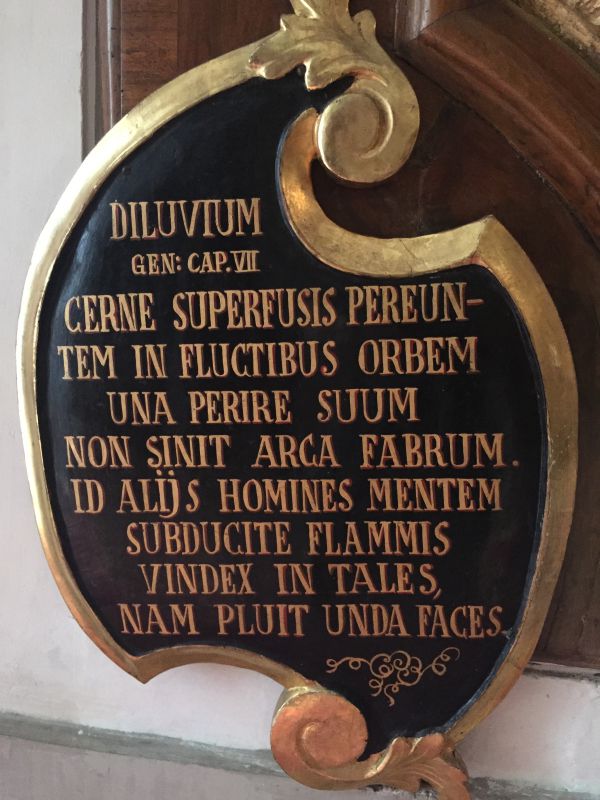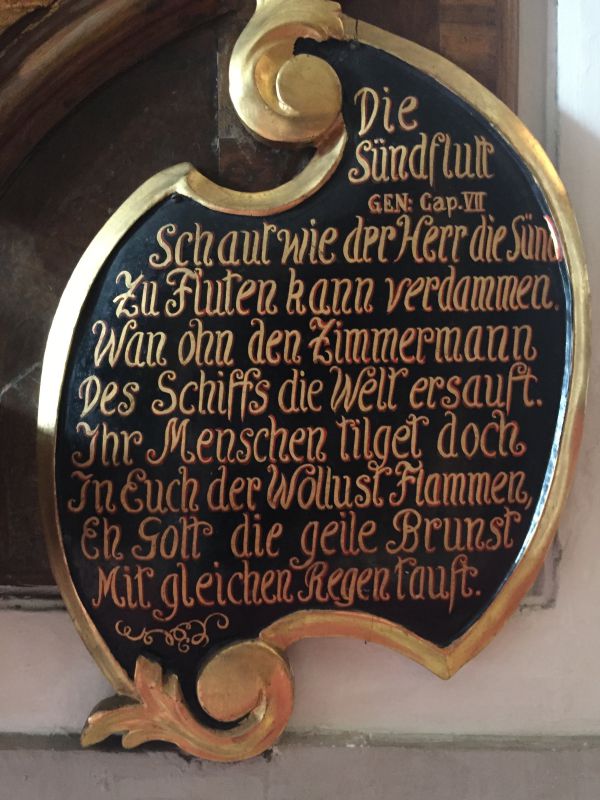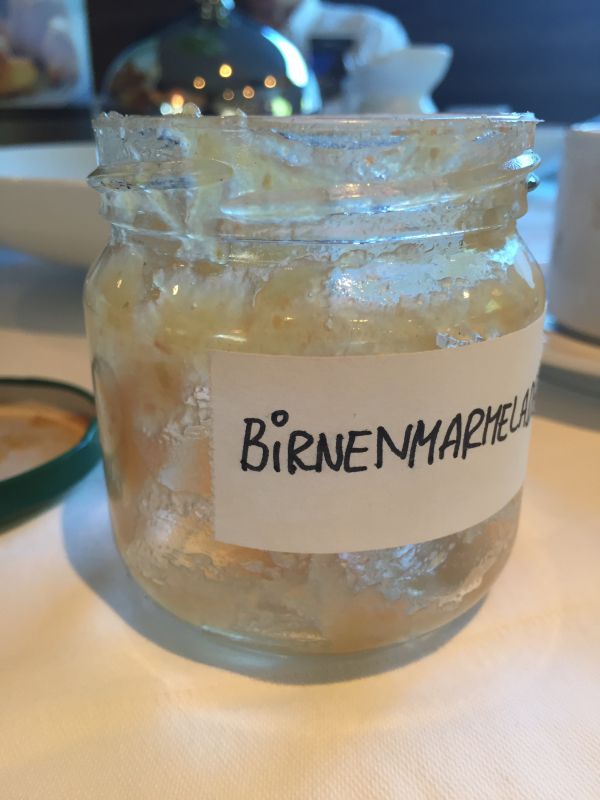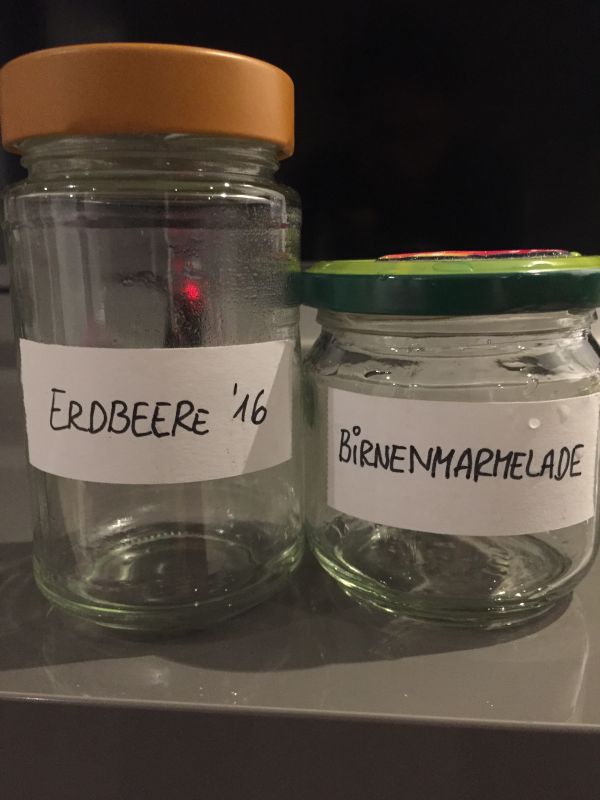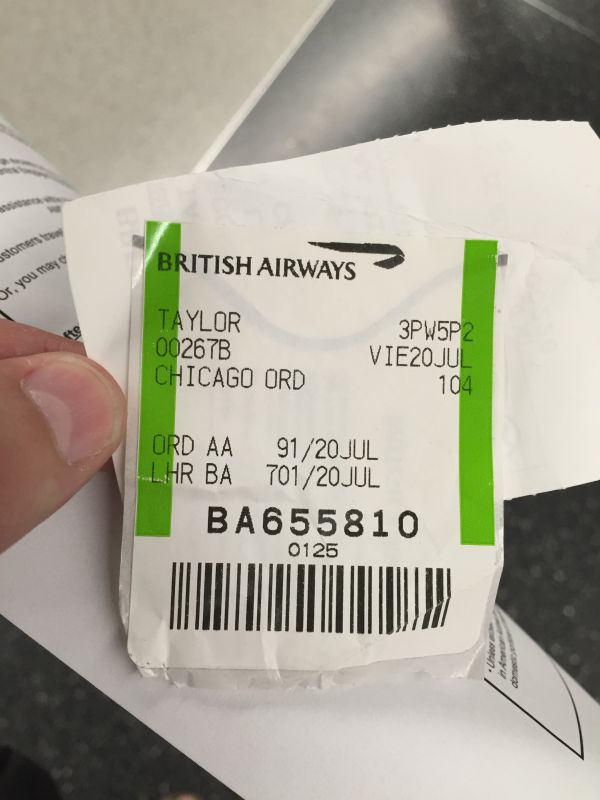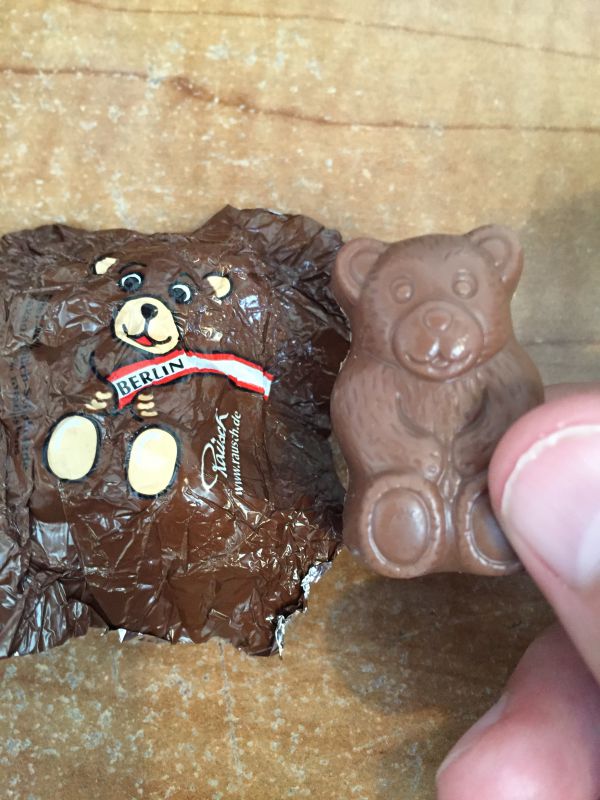Europe 2016
From July 8 until July 20 I was traveling with Margot, her sister Madeleine, their parents Mr. and Mrs. S, and Madeleine's husband Joel through Germany, the Czech Republic, and Austria. Here are some photos from the trip!
After landing, Margot and I took a bus to the central train station from which we planned to walk to our hotel. We were unsure of the exact route, however. Luckily, we met a very nice German couple who helped us find the way and even walked along with us for much of the distance. His name was Guenther and hers was Sigrid.
Sigrid in front of the Brandenburg gate. There were fences, pavillions and other structures left over from local events coinciding with Germany's soccer match against France, which they lost. When we returned to the gate a few days later, the view was uncluttered.
Me with my friend Antje, who was my flatmate in Freiburg in 1995. We had a brief reunion in Freiburg when I returned there in 1999, but it had still been 17 years since we had seen each other! In the meantime she had gotten married and had two daughters. They live in her hometown of Magdeburg now, which is an approximately two-hour train ride from Berlin. But she came to meet us! Her husband had to work, but her two girls were able to come along. We met, appropriately, at the "friendship fountain" ("Freundschaftsbrunnen") near the train station.
The four of us went for brunch at a nearby cafe, where Antje and her girls gave us a gift of homemade strawberry and pear jam made from fruits from their own garden! I was very happy that it was the first day of our trip because we might have had trouble transporting these out of the country. In the event we were able to spend the next two weeks enjoying them. Delicious!
In spite of our jet lag, we took a lovely and relaxed stroll through town. For Antje and me it was as if no time had passed. Margot also got along wonderfully with everyone and the two girls were a delight. Here they are walking in a public fountain that we found on our way back to the train station.
A shot of the river I took as Margot and I wended our weary way back home after our exciting afternoon with Antje.
The next morning, with the full crew now assembled, we traveled to Wittenberg, birthplace of Martin Luther. Margot and I took some personal pride in this outing as we had organized the train tickets and guided tuor of the museum ahead of time from Chicago.
"Ist's Gottes Werk, so wird's bestehen. Ist's Menschen Werk, wird's untergehen" - "If it is God's work it will endure; if it is man's work it will founder"This plaque was on one side of the plinth (or is it a socle?) beneath the statue (of Melanchthon I believe) seen in the previous picture. At first my attempts at translation were defeated by the Fraktur script.
A great illustration of the ten commandments in the Luther museum. Worth looking at the full size image.
This is the closest one can get to the famous church doors where Luther nailed his 95 theses. The actual doors are long gone, but this may be the actual doorjamb? Even if the doors are not the originals anymore, this is certainly the original church.
Some open-minded graffiti near the train station. One would expect "Muslime raus" ("Muslims get out"), but this is "Muslime rein" ("Muslims come in"), with accompanying hearts.
We went to the Neues Museum (New Museum) to see the Head of Nefertiti - which is not her actual head, but rather a bust - not her chest of course but a bust in the sense of a bust of her head. A photograph would make everything clear but we weren't allowed to take pictures. It was a remarkable artifact, however.On the other hand, we were allowed to take pictures of the Golden Hat - a bronze-age relic whose precise purpose is unknown. It was discovered on sale at an antique shop in 1995!
One of the remaining sections of the Berlin wall left standing along with a guard tower. Here you can see that the wall was actually two walls with a "no man's land" in between.
The open-air Berlin Wall exhibit features some free-standing video screens where you can watch very short films about the history of the wall, including one showing a little of what life was like in Berlin after it had been divided but before the wall had been built. I was hoping if I took a picture of the titles I could find the movies at home on YouTube, but so far no luck.
Another piece of remaining wall, with iron poles standing in as a symbolic representation of a missing segment
We had dinner in a relaxing beer garden "Die Quelle". We were actually on our way to another beer garden, "Schleusenkrug", which our friends had recommended, but when I stopped a bicyclist to ask directions he strongly advised us to come here instead. We got to go to Schleusenkrug the next day and honestly I love that we got to go to both. The food here at the Quelle was delicious and although there was a lot of noise from the nearby street, the garden itself was relaxing with lots of open space.
This cute doggie looked a little demonic with what at first glance looked like a mouth full of vicious fangs. It was just a pine cone, however.
The entrance to the Soviet war memorial in Treptower Park outside Berlin. The text above the arch reads: "Eternal glory to the heroes who fell in the wars for the freedom and independence of the socialist homeland"
The same gate from the inside. Here the text reads "Your great deeds are immortal. Your fame will live for centuries. The homeland will keep you always in its memory."
On the side of the "sandcrawler", more text extolling the virtues of the fallen heroes: "Eternal fame to the warriors of the Soviet army, who gave their lives in the struggle to free humanity from fascist servitude"
A view back over the mall. The large stones on either side of the path contained words further glorifying the soldiers and citizens of the Soviet state.
After returning to our hotel, some of us went out for that classic staple of German street cuisine: Doener Kebap
The next day we visited the Pergamon museum, whose star attractions include the Ishtar entrance gate to the ancient city of Babylon. Many of the blue stones, especially those on top, are modern reconstructions, but the stones comprising the animal figures are (almost) all original. This is even more amazing when one considers that the entire structure lay in a collapsed heap when German archaeologists began reconstructing at the beginning of the 20th century.
On the other side of the wall from the gate of Babylon is this, the entrance to the Roman marketplace at Miletus, built around the second century AD.
A view over the reconstructed processional way leading to Babylon. The stones at the bottom (which include the lion detail above) are original wherever possible. The stones at the top are reconstructions placed to indicate the height of the ancient wall.
Later we visited the Checkpoint Charlie museum, which I remembered as not being very large. In fact, the individual rooms are not large, and what floor- and wallspace they afford is crammed to the last square inch with poorly curated or completely unexplained wall-era memorabilia. However, the complex itself is sprawling and includes rooms dedicated to North Vietnam and a veritable shrine to Ronald Reagan and his "tear down this wall" quote. One's energy is drained very quickly in this museum as one is soon overwhelmed by the sheer volume of material on display. The most interesting bits though are arguably those chronicling various escape attempts, such as this trilingual article about a woman who was smuggled out in two suitcases.
Here is the woman and her fiance showing the trick suitcases. I guess her waist went through that tiny opening?
Afterwards we had dinner at the extremely popular Schleusenkrug, the beer garden that our friends had recommended to us.
Individual menus were not available, so I took this picture to show the others. We tried the first three of these and everything was delicious!We didn't know why the word "organic" was in quotes, but decided it was better than "meat" being in quotes!
Unlike the Quelle, this place was jam packed. We were very fortunate to find an isolated table away from the hubbub.
I liked this giraffe and the arrow pointing to the zoo. Something about it looks very Russian to me, and I feel positive it's from those bad-old Soviet days.
Those who that "Eis" is German for ice cream and who appreciate Star Wars will understand why this is a great name for a gelateria. We did not have time to see if it was a wretched hive of scum and villainy.
Margot and I went inside a bank building to see this interior design by Frank Gehry, well known to all Chicagoans as the designer of the Jay Pritzker Pavilion in Grant Park.
This parking lot is where Hitler's bunker used to be. The national government wants to remove all reference to this fact, but the land is privately owned, and the owner has erected a sign (not pictured) indicating its history.
For a snack after touring, some of us went to the brightly lit cafe of the famous Berlin chocolatier Fassbender and Rausch. In addition to making chocolate, they also specialize in creating chocolate sculpture. Here is the German Reichstag.
It was our last day in Berlin and we had done all of the Berlin stuff that tourists are supposed to do with the notable exception of drinking the famous red and green beer. It was late and we were all tired, but luckily Joel was game for walking with me to "Treffpunkt". It was a great pub and it's too bad I didn't have enough appetite for one more currywurst, but the beer mission was accomplished.The beer itself tastes sweet and is only barely alcoholic. The red variety is raspberry and the green, much less well known to English speakers, is "woodruff" (German "Waldmeister").
The next morning we polished off the last of the homemade strawberry preserves that Antje had given us.
The next day we rode the tour bus to Prague, but on the way we stopped in Dresden, famous for being almost utterly destroyed in the final days of WWII. After German reunification, Dresdeners threw themselves into the task of rebuilding the city. Here is a rain-smudged shot of the painstakingly reconstructed Frauenkirche.I was reminded of this quote from the beginning of "Slaughterhouse Five", in which Goethe, from the dome of this church, surveys a Dresden still lying in ruins decades after the 1760 Prussian siege: "Von der Kuppel der Frauenkirche sah ich diese leidigen Trümmer zwischen die schöne städtische Ordnung hineingesät; da rühmte mir der Küster die Kunst des Baumeisters, welcher Kirche und Kuppel auf einen so unerwünschten Fall schon eingerichtet und bombenfest erbaut hatte. der gute Sakristan deutete mir alsdann auf Ruinen nach allen Seiten und sagte bedenklich lakonisch: das hat der Feind gethan!"
The interior of the rebuilt Frauenkirche. Our tour guide told me that those Dresdeners who were old enough to remember the church before its destruction in 1945 were overwhelmed when it reopened 60 years later in 2005, and that they immediately recognized and accepted it as their church.
A medieval mural in Dresden. The text in the inset reads "A princely line whose heroic course reaches even to our own time; In remote antiquity it arose along with the sagas of our people"
A more complete section of the mural. The wall is straight; the curving effect is an artifact of the panorama shot.
The clock tower, with a Segway scooter driving by. Our tour guide told us that the scooters were a menace and had been the cause of numerous collisions in the square. They had been legally banned from the square on July 1 but enforcement of the ban had not begun.
The famous astronomical clock in Prague. All these people are waiting for the top of the hour, when panels in the clock open to reveal a little clockwork parade of figures. Apparently some people find the show disappointing, but I loved it! Especially impressive considering when it was built. To the haters: Can you do better?
I remembered these science fiction subway interiors from 1991. I'm so glad to see they're still around!
We had taken the subway to get to the museum dedicated to the works of Alphonse Mucha, an Art Nouveau artist whom we both admire very much. This image of Hyacinth was the one used on the program cover for a production of Shakespeare's "A Winter's Tale" that we saw several years ago, and it was this arresting image that first made us aware of his work.
An article from Mucha's lifetime talking about his art and also what a kind and generous person he was.
Is an invitation to smell a woman's hair some kind of Czech come on? Is it maybe a word-for-word translation from Czech that doesn't really work? Would a wax model's hair smell like anything anyway? Margot and I both found this advertisement confusing, but Margie gave the hair a whiff anyway.
The Mucha window in the St. Vitus Cathedral, shot with intentionally low exposure to bring out the details in the panels. Double click to see the full size version.
A wooden relief carving in St. Vitus' Cathedral showing the city of Prague. The Latin inscription represents sections of two verses from Exodus 15, "(Terror) and dread (will fall on them). By the power of your arm (they will be as still as a stone until your people pass by)" Unfortunately I do not remember the story behind why the carving is in the cathedral. Something to do with the bridge I think?
After the cathedral we toured the Lobkowicz Palace, a private estate of the Lobkowicz family whose history is traceable to the 14th century and who descendants still take care of the castle today. The palace contains many artifacts and works of art, but the most interesting items for us were in the music room where, among other things, this letter from Beethoven dated 1821. Very impressive, although I wonder how many people can read it, because Beethoven's handwriting is a disaster.
Beethoven's "Eroica" Symphony (number 3), dedicated to his patron, the seventh Prince of House Lobkowicz
This photo and the next are of two pages of Mozart's reorchestration of Handel's Messiah. The text has also been translated into German. The passage above is from "O Death, where is thy sting?"
After the museum, we were treated to a private string quartet by members of the Prague symphony orchestra who played a couple of Dvorzak pieces, a bit of Pachelbel's "Canon in D", and also an arrangement of "Pretty Woman" by Roy Orbison.
Josef Kazda, a lover of film who had a house in the Golden Lane, hid and preserved thousands of pre-war Czech films from the Nazis.
I assume and hope that the film inside these cans was removed and preserved a long time ago! There is a cord to separate the visitors from the film cans so I couldn't check for any missing episodes of Doctor Who. Since Kazda stopped collecting in the early 1960s (I think), it is unlikely.
Margie on our way to the restaurant "Bellavista" where we enjoyed a wonderful Czech meal with beautiful weather. Others in our touring group were visiting the famous Prague Municipal House at this time, and later they told us how much they enjoyed it, but we have no regrets.
This gentleman from our tour group looked uncannily like Albert Einstein. We never got his real name.
Our tour had stopped in the small town of Passau, which we visited the previous year. Rather than join the walking tour on this very hot day we went to a beer garden and later walked along the river. This is a pole with a hook for fishing drowning people out of the river. The sign says "Rescue pole. Fine for misuse"!
This word famously (relatively speaking) has three F's in a row following the German spelling reforms of 1996. That was the year I was living in Freiburg so... good memories.
Can you imagine a lovelier scene? Our tour bus took a rest stop at this lovely restaurant and cafe on the road to Salzburg. We didn't have time to eat there but I did snap this picture.
Our tour guide in Salzburg was Helmut, who was probably the best guide of the trip. On the bus he gave us a 3,000 year history of Salzburg starting with the first ancient people who realized that there was salt inside the mountains when they observed animals licking rocks that had been wetted by the stream and ending with "The Sound of Music". Helmut also took his Austrian Tracht (regional costume) very seriously. He told us that modern day citizens still frequently wear their traditional clothes and that this is the only outfit that is appropriate both for a barbecue at home or for meeting the president of the country. Furthermore, after being out of fashion for several decades, he told us that teenage Austrian girls were wearing their traditional clothes all the time for social occasions.
Helmut told us of Salzburg's complicated history with "The Sound of Music" and why the movie did so poorly here. First, an Austrian version called "Die Familie Trapp" had been made in the early 1960s and had met with great success, so by the time the American version arrived, people felt they had already seen the story. The film was released under the title "Meine Lieder, Meine Traeume" ("My Songs, My Dreams"), which was a dumb title. The Hollywood version also got some cultural elements wrong, like children handling forks and knives in an American fashion rather than a European one.The killer blow, however, was that in an effort to trim the nearly three-hour movie to a more palatable length, an Austrian editor had cut out everything having to do with Nazis, thus reducing the movie to a bunch of songs and a wedding.Later still, the movie was re-released in its full-length version, but even with the Nazis reintroduced, the depiction of them as cartoon villains duped by a few mischievous nuns was met with contempt by the Salzburg public, many of whom remembered the genuine experience.And yet, a theatrical remount was recently produced here that restored the Nazi element to its full terrifying potential. Despite predictions of another spectacular failure, the show was a resounding success and continues to be performed.
A side boulevard of the Mirabell Gardens, created in the early 1600s by the then Prince-Archbishop for his mistress
Helmut told us that this discreet McDonald's sign represented a great victory for the city, as they repeatedly denied the giant corporation's request to advertise themselves with their typical obnoxious color scheme.
We don't have any of the Mozart family's actual furniture, but historians have used period pieces to create this best guess as to what their dining room might have looked like.
During our last few minutes in town, we took a quick trip through this famous (or at least, very attractive) cemetery, here labeled "Katakomben".
Back on the boat, we were treated to more live music. The quintet played two pieces by Mozart. People seemed to like them, though they left me mostly unmoved. Of course, I rarely like any piece of music the first time I hear it, but still I couldn't help wondering "Do they really like it, or is it just that we are taught that we are *supposed* to like this sort of thing?"
The next day we pulled into Melk, which we had also visited the year before. Again, rather than going on the official tour, some of us broke off and instead explored the very tiny town of Emmersdorf. One of their only almost-tourist attractions is a stone labyrinth. Margie is standing here at the start of the path that will lead us there.
And this is it! Ok, so it's not what I would call a big labyrinth, but on the other hand the danger of getting lost in it is very small.
This little sign explains a little about the labyrinth (Margie is holding my shirt behind it to improve the contrast). It says "The labyrinth corresponds to the classic Cretan form. It has seven paths but only one path to the middle. The labyrinth, built and trodden across cultures and millenia, has symbolized humanity's search for the middle. Whoever chooses to walk its paths will find the center. Count yourselves among the custodians of the labyrinth."and then..."For children and adults, walking the labyrinth is done at one's own risk"What could possibly go wrong?
Another trick panorama I made by setting my phone on the railing of the boat and letting the landscape slide past. This produced the artifacts in the clouds and created a hybrid boat out of two different boats that here seem to have collided.
The church in Melk where we heard a short performance of organ music which I personally enjoyed more than the Mozart quintet of the night before.
A woman with a real camera agreed to use her telephoto lens to get a close up of this lad holding a book with words in Latin. The words seem very strange to me, and unfortunately I do not know what they mean.
Here the Latin is easier to translate, not least because there is a German version the other side of the carving.
I flew out of Vienna, had a very quick layover in London (I almost missed my connection!), and came back to Chicago. My bag didn't make it right away though, so for three whole days this number was very important to me. Happily, the bag eventually found its way back.
